
U.S. Department of Justice
National Institute of Corrections
Facilitation Skills
for
Trainers
Facilitation Skills
for
Trainers

U.S. Department of Justice
National Institute of Corrections
Facilitation Skills
for
Trainers
Training Curriculum Package
This training program was prepared under
cooperative agreement 98A08GIG1 between ETR
Associates and the National Institute of
Corrections, U.S. Department of Justice.
Points of view or opinions stated in this document
are those of the authors and do not necessarily
represent the official position or policies of the
U.S. Department of Justice.
The National Institute of Corrections reserves the
right to reproduce, publish, translate, or otherwise
use, and to authorize others to publish and use all
or any part of the material contained in this
training curriculum.
Revised 02/01
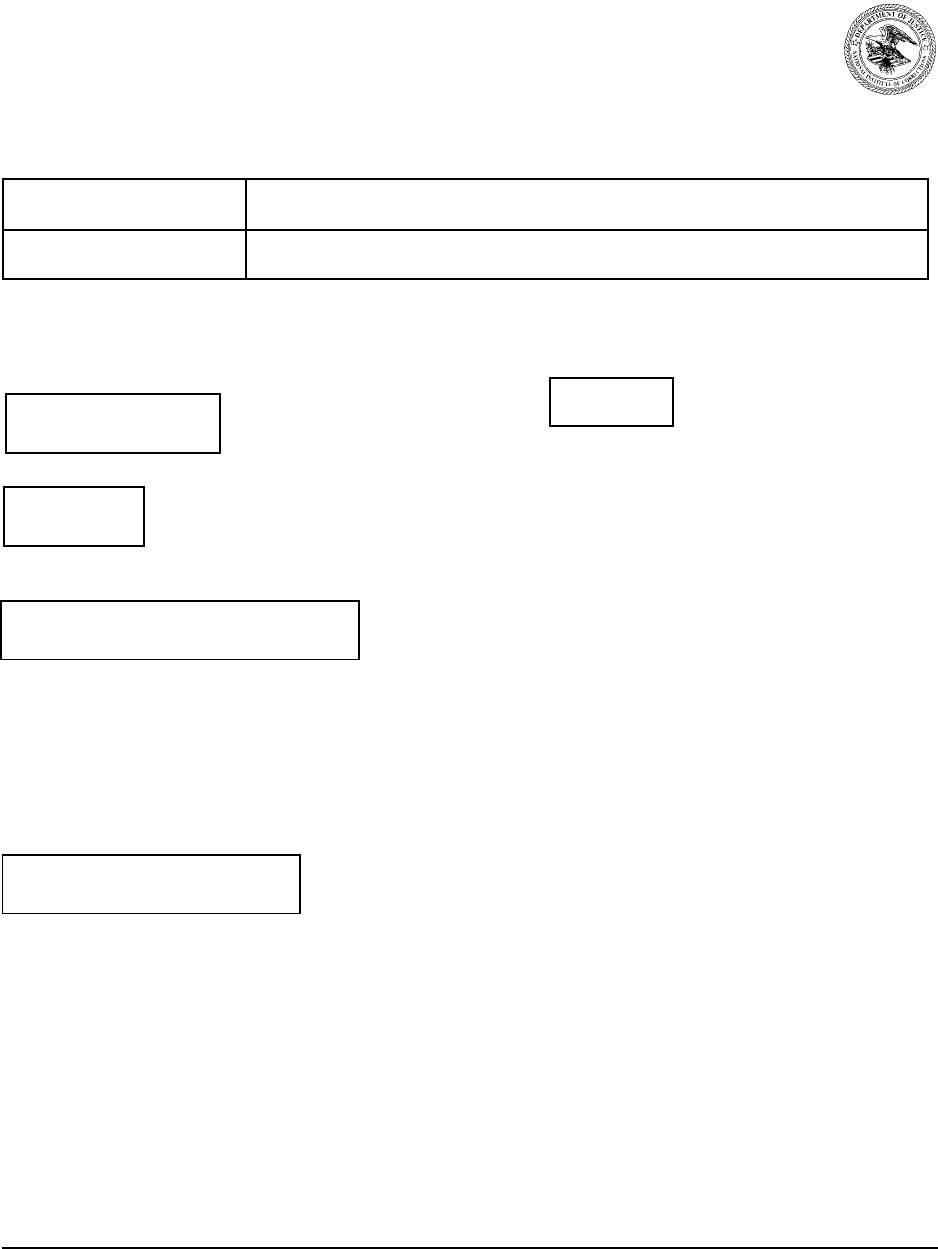
National Institute of Corrections Facilitation Skills for Trainers
(Rev. 5/99) Overview
1
Prepared By:
May 1999
Date:
Length:
Rationale For Seminar:
Course Outcomes:
Overview
Series: GROUP FACILITATION SKILLS
Curriculum: FACILITATION SKILLS FOR TRAINERS
Susan Yeres & Barbara
Collins
16 hours
Facilitation of training groups requires knowledge of how people learn and of group process
strategies, as well as skill in leading group participants to achieve specific learning goals.
Participants will assess and plan for the level and type of facilitation needed by a
training group, utilize models of facilitation to conduct activities, practice and receive
feedback on key facilitation behaviors and create a Personal Development Plan.

National Institute of Corrections Facilitation Skills for Trainers
(Rev. 5/99) Overview
2
Appropriate Audience:
Special Instructions:
Equipment:
Instructional Materials:
"Facilitation Skills for Trainers ” is designed for a group of 18-24 experienced trainers who
want to develop their group participation and discussion skills.
Participants in this seminar work in groups of six during Day 1. The training room should
be set up with round or rectangular tables for each group of six. For Day 2, two rooms that
each accommodate half the group will be needed. Attached is a description of each
module in the seminar, in the recommended sequence. There is an estimated length of
time needed to conduct each module. If the number of participants in the seminar exceeds
24, each module may take slightly longer to conduct (or less if numbers of participants are
substantially under 24).
Overhead projector and screen
Extension cord
VCR/Monitor
Flip chart easels (4) and Flip chart pads (6)
Instaframe
Baton (pointer)
<
Pre-work packet (includes 4 handouts): Facilitation Skills Assessment, Self
Assessment survey, Observer Assessment, Observer Assessment survey

National Institute of Corrections Facilitation Skills for Trainers
(Rev. 5/99) Overview
3
Overheads:
<
Participant Manuals
<
Signs:
• I Love Facilitation (8.5" x 11)
• Facilitation is Hard work
(8.5" x 11)
<
10 - 15" x 15" colored islands
<
24 bandanas
<
Mr. Holland’s Opus video
<
5 calculators
<
18 Cloth balls
<
1 pack of yellow dot stickers
<
Broken Squares (3 sets, 5 envelopes)
<
Disruptive Behavior card set
<
Handling Challenges card set
<
Alphabet card set
<
OH #1, Seminar Outcomes
<
OH #2, Agenda - Day 1
<
OH #3, Agenda - Day 2
<
OH #4, Completed Assessment Summary Sheet
<
OH #5, Critical Elements of Facilitation
<
OH #6, The Learning Cycle
<
OH #7, What? So What? Now What?
<
OH #8, Reflection
<
OH #9, Analysis
<
OH #10, Application
<
OH #11, Why Do We Need Ground Rules
<
OH #12, Areas for Ground Rules

National Institute of Corrections Facilitation Skills for Trainers
(Rev. 5/99) Overview
4
Handouts:
General Materials:
<
OH #13, Options for Dealing with Disruptive Trainees
<
OH #14, Stages of Group Development
<
OH #15, Jigsaw
26 copies of presentation assignments 1-6
Course Completion Certificates
1 roll scotch tape
4 rolls masking tape
1 stapler
1 bx staples
1 pair scissors
1 bx each paper clips, large & small
1 bx binder clips
3 dz pens
2 dz pencils - sharpened
1 white out
30 highlighters
1 pk (4) overhead pens
36 markers (1 dz. Dark colors & 2 dz
assorted)
6 pads newsprint
blank stick-on name tags
6 blank transparencies
300 index cards
4 3x3 post-its
4 11/2x2 post-its
1 glue stick
1 3-hole punch
1 bx rubberbands
20 paper pads
2 rolls clear packing tape
100 sheets white copy paper
5 each ETR small & large envelopes
1 pkg push pins
1 x-acto blade
5 return labels - fed ex
class roster

National Institute of Corrections Facilitation Skills for Trainers
(Rev. 5/99) Overview
5
FACILITATION SKILLS FOR TRAINERS:
Content Outline
(2-day option)
Module Summary & Rationale Length Day 1
Module 1:
Introduction and
Course Overview
The purpose of this module is to provide
participants with an overview of the 16-hour
seminar.
1 hour 40 min.
(includes 10
minute break)
8:00 a.m.-
9:40 a.m.
Module 2:
Critical Element #1:
How We Process
Learning
The purpose of this module is to review Kolb’s
Learning Cycle and help participants use it to
develop effective process questions.
1 hour 55 min.
(includes 2 - 10
minute breaks)
9:40 a.m. -
11:35 a.m.
Module 3:
Critical Element #2:
Predicting &
Accommodating
Learner Behavior
The purpose of this module is to help participants
learn to predict possible learner behaviors and
accommodate them appropriately.
40 min. 11:35 a.m. -
12:15 p.m.
LUNCH
1 hour 12:15 p.m. -
1:15 p.m.
Module 4:
Critical Element #3:
Setting the Climate
The purpose of this module is to identify steps
and activities trainers can use to set a climate for
learning.
30 min. 1:15 p.m. -
1:45 p.m.
Module 5:
Critical Element #4:
Utilizing Facilitation
Strategies for Learning
The purpose of this module is to demonstrate
and/or discuss a variety of learning activities
trainers can use to enhance learning.
50 min. 1:45 p.m. -
2:40 p.m.
Module 6:
Dealing with Conflicts
in Groups: Part 1
The purpose of this module is to have participants
apply a five-option model for responding to
disruptive behaviors.
1 hour 5 min.
(includes 10
minute break)
2:40 p.m. -
3:45 p.m.
Module 7:
Dealing with Conflicts
in Groups: Part 2 & 3
The purpose of this module is to practice
facilitation of planned or unplanned conflict in
training groups.
1 hour 15 min. 3:45 p.m. -
5 p.m.
Day 2
Module 8:
Presentations
The purpose of this module is to have participants
practice facilitation participatory activities using
skills covered on Day 1.
8 hours 8 a.m. -
5 p.m.
total hours 16

National Institute of Corrections Facilitation Skills for Trainers
(Rev. 5/99) Overview
6
Content Outline (2.5 day option)
Module Summary & Rationale Length Day 1
Module 1:
Introduction and
Course Overview
The purpose of this module is to provide
participants with an overview of the 20-hour
seminar.
2 hours
(includes 10
minute break)
8:00 a.m.-
10:00 a.m.
Module 2:
Critical Element #1:
How We Process
Learning
The purpose of this module is to review Kolb’s
Learning Cycle and help participants use it to
develop effective process questions.
2 hours
(includes 2 - 10
minute breaks)
10:00 a.m. -
12:00 p.m.
LUNCH
1 hour 12:00 p.m. -
1:00 p.m.
Module 3:
Critical Element #2:
Predicting &
Accommodating
Learner Behavior
The purpose of this module is to help participants
learn to predict possible learner behaviors and
accommodate them appropriately.
1 hour 1:00 p.m. -
2:00 p.m.
Module 4:
Critical Element #3:
Setting the Climate
The purpose of this module is to identify steps
and activities trainers can use to set a climate for
learning.
1 hour 30 min. 2:00 p.m. -
3:30 p.m.
Module 5:
Critical Element #4:
Utilizing Facilitation
Strategies for Learning
The purpose of this module is to demonstrate
and/or discuss a variety of learning activities
trainers can use to enhance learning.
1 hour 15 min. 3:30 p.m. -
4:45 p.m.
Day 2
Module 6:
Dealing with Conflicts
in Groups: Part 1
The purpose of this module is to have participants
apply a five-option model for responding to
disruptive behaviors.
1 hour45 min.
(includes 10
minute break)
8:15 a.m. -
10:00 a.m.
Module 7:
Dealing with Conflicts
in Groups: Part 2 & 3
The purpose of this module is to practice
facilitation of planned or unplanned conflict in
training groups.
1 hour 15 min. 10:00 a.m. -
12:00 p.m.
LUNCH
1 hour 12:00 p.m. -
1:00 p.m.
Module 8:
Presentations
The purpose of this module is to have participants
practice facilitation participatory activities using
skills covered on Day 1.
4 hours 1:00 p.m. -
5 p.m.
Day 3
Module 8: continued
Presentations
The purpose of this module is to have participants
practice facilitation participatory activities using
skills covered on Day 1.
4 hours 8:00 a.m. -
12:00 p.m.
total hours 20

National Institute of Corrections Facilitation Skills for Trainers
(Rev. 5/99) Overview
7
ANTICIPATORY SET
In the fall of 1992, the National Institute of Corrections Academy initiated an effort to revise
current training curricula and to develop new programs according to guidelines set forth
in the Instructional Theory Into Practice (ITIP) model. Key points of the model include: a
focus on the learner, instruction directed to higher level objectives; applied learning; a
lesson plan format which links outcomes and performance objectives to training activities
and to evaluation of learning; and the ultimate importance of instructional design and
delivery decisions made by trainers.
In the ITIP model, an "anticipatory set" begins the lesson plan. In this section of an
instructional sequence, the instructor establishes readiness for learning in the learner and
begins efforts to ensure transfer of newly acquired information, skills, values, or attitudes
to job performance. Effective anticipatory set, ones which serve the purpose of bringing the
learner to the learning task, are characterized by instructor actions and training activities
which focus the participants attention specifically on what is supposed to be learned and
detach him/her from environmental or personal distractions. The key conceptual focus of
the lesson plan or module is introduced and performance objective participants will be
expected to meet explicitly shared. Reference is made to previously known information and
to previous modules of instruction in order to "locate" learning and to provide a frame of
reference in which new learning content can be placed. This association of new information
with previously learned content, skill and values, as well as with the participants life
experience or current job performance needs, provides a reason or rationale for the
participant to engage in the instructional process, and a meaningful context for training
activities, including what the trainer will do and what the participant will do, also helps to
ensure that from the first moment, the participant is involved in structuring the learning to
be done and in devising means to apply it.
Trainers should, at this stage of the lesson, strive to eliminate actions or information which
does not pertain directly to critical attributes of the learning task. Examples, illustrations,

National Institute of Corrections Facilitation Skills for Trainers
(Rev. 5/99) Overview
8
models, and learning materials which are interesting, but unrelated, should be avoided.
Discussions which may lead participants' minds to wander or lecture which forces them to
assume passive learner roles should be discarded. Every attempt should be made to
ensure that participants go forward into the lesson without misunderstandings or
misperceptions, positively and accurately "anticipating" what is to come.
Excerpted from: "Instructional Theory Into Practice: Essential Elements of Instruction-Part One" by Lois Hay
in The Journal of Correctional Training
INSTRUCTIONAL INPUT
A training session developed according to the ITIP model will have a lesson plan based on
learning outcomes and performance objectives derived from a needs assessment process.
Such a lesson plan would begin with an anticipatory set which prepares the participant for
learning by connecting prior knowledge and experience with the new learning. The next
element of the lesson plan, known as the "instructional input" will be structured according
to decisions the trainer makes on a number of key questions.
First, What is the "context of the learner"? Who are the participants? What are their group
and individual learning characteristics, preferences, and needs? Answering these questions
creates a "learner-centered" lesson which is responsive to participants and which places
balanced responsibility for learning on the trainer and the learners. The research related
to how people learn reminds us that participant groups will be made up of individuals who
take in and process information very differently, who learn best under distinctly different
conditions. Trainers can use their insight about learning style differences and preferences
to build into the lesson plan activities which allow learners of all types to take in and
process the content being presented.
Secondly, What is the "context, or nature of the learning task"? Are the required learning
outcomes related to information acquisition or awareness, to skill mastery, to application

National Institute of Corrections Facilitation Skills for Trainers
(Rev. 5/99) Overview
9
of processes in given situations or to incorporation into personal behavior of specified
values and attitudes? What on-the-job performance levels will learners be expected to
attain? Different types of learning tasks require different levels of cognitive processes and
different training strategies and activities. If knowledge and basic understanding of
information are all that is required, print materials or visual media, lecture and discussion
or demonstration can be used. If skill acquisition is the goal, learning experiences must be
extended beyond information sharing to include practice opportunities with corrective or
reinforcing feedback from the instructor. If job requirements call for using information/skill
in new or varied circumstances, for modifying practices to adapt to changes in the work
environment, for decision-making or for creativity, performance objectives for training must
be raised to that cognitive level and instructional activities need to simulate those levels of
functioning.
Problem-solving should be taught through solving real work place problems. Decisions
should be formulated and action recommended within realistic simulations and role-plays.
The mode of instructional input should model the kind of thinking and learning to be done.
Also, of all the available information related to any type of learning, What will be selected
for instruction? What are the critical attributes of the learning and what materials, examples,
and questions will focus participants on those points? What analogies, metaphors, or
pictures will illustrate essential concepts, skills, or desired behaviors? What contrasts or
comparisons will help participants to differentiate from or associate this information with
other knowledge they possess? All the trainer decisions in this area result from accurate
assessment of what must be learned and how the learning must be applied.
Finally, How will the trainer know if the desired learning is taking place as training
progresses? What checks for understanding will occur? What modifications or
adjustments in instructional strategy will be made to enhance or redirect learning?

National Institute of Corrections Facilitation Skills for Trainers
(Rev. 5/99) Overview
10
Although the traditional mode of input is lecture or written material, the answers to the
above questions may demand that the trainer look for ways to supplement these methods
or replace them with strategies more appropriate for high level performance outcomes.
Although input follows anticipatory set in the lesson plan and the lesson delivery, the
determination of content should come first in the trainer's planning process. It is almost
impossible to design an effective anticipatory set without a clear understanding of the input
necessary to reach the established performance objectives.
Excerpted from: "Instructional Theory Into Practice: Essential Elements of Instruction-Part Two" by Lois Hay
in The Journal of Correctional Training.
GUIDED PRACTICE
Lessons begin with an anticipatory set which prepare participants to learn. This is followed
by instructional input strategies which are interactive, participant centered, and formatted
to cause participants to deal with training content at higher levels of thinking. Inclusion of
these first two elements in lesson design will, however, not have the desired positive impact
without opportunity for participants to practice under the guidance of an instructor. It is
through such “guided practice” that information, concepts, skills and new behaviors are
incorporated into the ongoing job performance of employees. Research on learning and
instruction tells us that without practice and feedback on the effectiveness of performance,
only two to five percent of participants will ever attempt new skills or behaviors upon
returning to daily responsibilities in an agency.
We also know that trainers report that practice and application of training content is often
missing in agency curricula. Extremely limited hours of training, vast amount of information
to be "covered" and large classes are cited as reasons why practice opportunities are so
limited or nonexistent. Lecture, varied by question and answer sequences and a few
discussions, continues to dominate the time devoted to training. The ITIP model proposes

National Institute of Corrections Facilitation Skills for Trainers
(Rev. 5/99) Overview
11
that unless practice opportunity is provided in each lesson, unless participants have some
chance to be guided through application of information and concepts, job performance will
not change and instructional time spent in lecture will largely be wasted.
To avoid such wasted and to take advantage of the potential of practice to improve
participant job performance, training design should ensure that:
• opportunities to apply training content, to practice actions, behaviors and skills needed
on the job are appropriately placed in instructional sequences,
• all practice focuses on the desired learning or set of learnings, that initial practice
situations closely simulate job condition or contexts for performance, participants have
sufficient, varied, and correct models and examples to follow,
• trial efforts by participants are monitored by the instructor and that they receive
immediate, specific, reinforcing, or corrective feedback on the accuracy of their
performance, several opportunities are provided to practice each key learning exercise
so that improvement and refinement in performance can occur, practice should go
beyond simple replication of prescribed actions or behaviors and, where appropriate,
include experimentation with alternatives, a chance to reflect on one's performance and
to dialogue with others involved in the same learning experience, and the concept of
"practice" be continued and extended beyond the classroom to the job site, with
supervisors replacing instructors in the role of performance monitor and coach.
Training which incorporates these principles regarding practice is most commonly found
in skill training which translates agency policy into operational procedures. Across the
country new law enforcement and correctional officers receive classroom instruction with
demonstration and with an incumbent officer and on-the-job training allow the new officer
to observe and perform tasks in a safe and effective manner before he or she functions

National Institute of Corrections Facilitation Skills for Trainers
(Rev. 5/99) Overview
12
independently. The same model can be used in other areas of training which have been
considered "soft skills" or "conceptual" in nature. Programs regarding leadership, diversity,
quality management, etc. can become more effective and have more impact in the work
place if participants have the opportunity to observe how it looks when performance meets
the standards; to actually try out actions and behaviors and to learn to evaluate and select
from available options as situations change. In order to incorporate more opportunities for
practice, trainers may need to consider:
How can background information and content be shared so as to free up classroom
time for practice, feedback, and application?
Are needs assessments and task analysis procedures in place to identify key job
competencies time for practice and feedback and application?
What steps will be necessary to extend practice beyond the classroom into job
performance?
Excerpted from: "Instructional Theory Into Practice: Essential Elements of Instruction-Part Three" by Lois Hay
in The Journal of Correctional Training.
INDEPENDENT PRACTICE
The ITIP lessons plan format uses an anticipatory set to prepare participants to learn,
instructional input strategies appropriate to adult learners to convey content and guided
practice which gives learners opportunities to receive corrective or reinforcing feedback on
initial trials of new skills and behaviors. The next component of the ITIP model,
“independent practice”, may or may not take place in the classroom setting.
Independent Practice is practice which usually occurs without the direct supervision and
assistance of the instructor, although he or she may structure the assignment or individual

National Institute of Corrections Facilitation Skills for Trainers
(Rev. 5/99) Overview
13
learning experience within which the practice takes place. Independent practice can make
use of learned material more automatic through repetition, can extend the amount of
information learned beyond what is generally provided to everyone in the classroom, can
expand the learners perception of how information can be applied in varied situations and
can cause new information to become an integrated part of an already existing system of
participant knowledge, abilities, and interests. Independent practice personalizes the
learning so that each participant can use it appropriately.
Adult training in a classroom environment rarely includes such independent practice, either
due to time constraints or to the difficulty of meeting many diverse learner needs, or
perhaps due to inability to simulate all the many contexts within which the learning can be
applied. Neither is it usual that homework assignments structure such learning
opportunities nor that intermediate learning environments exist between the training
classroom and the workplace. A fact of adult training/learning is that most significant
practice opportunities arise in the course of job performance which is required to meet
standards, which is appraised against those standards, and where the stakes are high.
In spite of difficulties, trainers can structure several types of independent practice into
classroom instruction and build bridges between the training environment and the
workplace. In the classroom, such independent activity and opportunity to relate to the
learning to the participants personal experience in the workplace can come through verbal
processing or training activities, through discussion and reflection on applications of
information to their work situation, and through action planning for transfer of classroom
learning to job performance.
Upon return to the job, participants can be supported to practice new skills and behaviors
if they have explicit ways to stay connected to the instructor/trainer, if a mentor or coach
is available to assist, and if periodic checks by supervisors are made to determine if skills
and behaviors are in place and improving.

National Institute of Corrections Facilitation Skills for Trainers
(Rev. 5/99) Overview
14
Since the individual practice techniques in the classroom are likely to be characterized by
mental activity not observable behavior or actions, it is important that the techniques be
specifically structured to direct participant thinking to real world situations they face and that
the thinking be done in sufficient detail to indicate the participant will know what to do and
how to do it on his or her own. Note taking guides which outline key points of information
and end with critical questions on how to apply it can insert individual practice even in the
middle of instructional input. Discussion guides used in small groups which direct
participants to share how they will use training experiences in their work provide
personalization of information. Assigning participants to analyze training content for
components which will be easy to implement and others which will be difficult and to
determine how those difficulties can be overcome compels thoughtful application, and
written action implementation plans to be used upon return to work and are helpful in
integrating new information into existing knowledge and expertise.
In more ideal situations, class sessions can be interspersed with periods of time in which
individual participants complete a variety of assignments related to information received in
class and ranging from readings, to written exercises, to job experiences. These
assignments are evaluated and successive classroom training builds on achievements and
addresses problem areas. The assignments may build toward and culminate in, a project
which demonstrates overall learning in the training program. Mentors can be used to
monitor application of training on the job.
Given the importance of individual practice in transfer of training to job performance, these
questions should be asked when designing lesson plans or training programs.
How may the time available for training be allocated to allow for individual practice?
What are the most crucial elements of the training content to be practiced? What
combination of training techniques will provide every individual participant the
opportunity to personalize the training content?

National Institute of Corrections Facilitation Skills for Trainers
(Rev. 5/99) Overview
15
If time does not allow for individual practice in the module, can instruction in the
classroom be interspersed with practice assignments what are the basis for future
lessons, or can practice occur in mentored situations on the job?
Excerpted from: "Instructional Theory Into Practice: Essential Elements of Instruction-Part Four" by Lois Hay
in The Journal of Correctional Training.
CLOSURE AND EVALUATION
The terms "closure" and "evaluation" refer to any point in an instructional sequence where
it is appropriate or necessary to summarize, emphasize, personalize, or access participant
learning. In the ITIP lesson plan format, a section which concludes the lesson is also
referred to in this manner. It formally serves those functions described above as well as
being a final opportunity, within a time frame, for the trainer to mediate the content and the
learning process. Evaluation, in this context, refers to assessments of the knowledge or
skill level of the participants, as well as the assessment of the training itself by participants.
Effective evaluations serve as needs assessments for future training.
In designing the evaluation and closure portion of the lesson, these instructional
considerations become important. Active participant involvement in this section of a lesson
continues to be essential to achieve desired impact.
Techniques which cause participants to summarize key points of information, review
processes by which they learned, reflect on "real world" applications of the new learning
and come to a perception of the degree to which they have learned are essential here.
Trainer responsibilities and functions include:
• clarification of any questions, misperceptions, miscommunication
• reiteration of key points not surfaced by participants

National Institute of Corrections Facilitation Skills for Trainers
(Rev. 5/99) Overview
16
• encouragement to personalize the learning
• making connections between this lesson, previous learning and activities
and experience yet to come
• explicitly comparing performance objectives for the training session with
perceived learning accomplishments (both the trainer's and the participants'
perception)
• assigning of independent practice as necessary or desirable
Excerpted from: “Instructional Theory Into Practice: Essential Elements of Instruction-Part Five" by Lois
Hay in The Journal of Correctional Training
.

Facilitation Skills Assessment
How to Complete Your Self Assessment
Think about the training you have conducted over the last six months. Consider
how you demonstrated/practiced each of the items listed on the evaluation sheet.
For example, if you consistently exhibited the behavior each time you trained
rating yourself in the always or mostly range.
Please be candid, this is an opportunity to target areas for learning and
improvement. Since you will be comparing your ratings to those given by
observers, your own rating should reflect what you think, not what you imagine or
would guess observers would say about you.
How to Distribute and Collect Your Observer Assessment Forms
Please give three of the Observer Assessment forms to participants who
attended a training session you conducted within the last 2 months (as recent
as possible). Be sure to fill in your name and a due date on each form. One
method we suggest is to hand the forms out to all participants and select a
random group of three. Another strategy is to give them to one participant who
appeared attentive, one who appeared less interested and one whom you could
not “read”.
Also give one Observer Assessment form to a co-trainer, a person with
whom you have taught during the last six months. If you have not co-trained,
give the form to another trainer who has observed you during that period.
Remind each person of the deadline you have written on the form. Ensure that
the forms can be returned to you anonymously in an unmarked sealed envelope
by the deadline and bring all of them with you to the opening session.
Self Assessment
Circle the one number that best represents how often you believe you use these behaviors as a trainer.
(within the last 6 months)
Facilitation Behaviors
Never Seldom Sometimes Mostly Always
a. Keeps the discussion on topic while allowing for meaningful input 1 2 3 4 5
b. Clearly explains how activities relate to the content 1 2 3 4 5
c. Effectively handles conflicts between trainer and participants 1 2 3 4 5
d. Effectively handles conflicts between participants 1 2 3 4 5
e. Facilitates the connection between content and participants’ personal experience 1 2 3 4 5
f. Uses non-verbal behaviors/communication to facilitate discussion 1 2 3 4 5
(e.g. gestures, facial expressions)
g. Clarifies and paraphrases participant responses and input 1 2 3 4 5
h. Manages the participant group without using sarcasm, put downs or manipulation 1 2 3 4 5
i. Uses non-judgmental open-ended questions 1 2 3 4 5
j. Encourages creativity and broader thought in discussions 1 2 3 4 5
k. Balances individual needs with group needs 1 2 3 4 5
l. Able to engage and motivate all types of learners 1 2 3 4 5

Observer Assessment
How to Complete Your Form
Thank you for agreeing to complete this observation form. I am attending a
Facilitation Skills training program in which I will set personal goals for my own
development. As part of that process, I am asking you and three other individuals
for candid feedback about my behavior as your trainer. I will not attempt to identify
the source of any feedback. The information will be used by me to determine
specific areas in which I need to develop, improve or enhance my skills in order to
be a more effective “facilitator” of learning.
Please circle a rating for each item based on your experience of me as trainer in our
most recent session.
I appreciate the time you will be taking to complete the form and I am grateful for
whatever information you can provide me in my efforts to learn.
Place your completed form in the envelope provided, seal the envelope and
return it to by .
Observer Assessment
Circle the one number that best represents how often you have seen __________________ use these behaviors as your trainer
(in your most recent training session with this trainer).
Facilitation Behaviors
Never Seldom Sometimes Mostly Always
a. Keeps the discussion on topic while allowing for meaningful input 1 2 3 4 5
b. Clearly explains how activities relate to the content 1 2 3 4 5
c. Effectively handles conflicts between trainer and participants 1 2 3 4 5
d. Effectively handles conflicts between participants 1 2 3 4 5
e. Facilitates the connection between content and participants’ personal experience 1 2 3 4 5
f. Uses non-verbal behaviors/communication to facilitate discussion 1 2 3 4 5
(e.g. gestures, facial expressions)
g. Clarifies and paraphrases participant responses and input 1 2 3 4 5
h. Manages the participant group without using sarcasm, put downs or manipulation 1 2 3 4 5
i. Uses non-judgmental open-ended questions 1 2 3 4 5
j. Encourages creativity and broader thought in discussions 1 2 3 4 5
k. Balances individual needs with group needs 1 2 3 4 5
l. Able to engage and motivate all types of learners 1 2 3 4 5
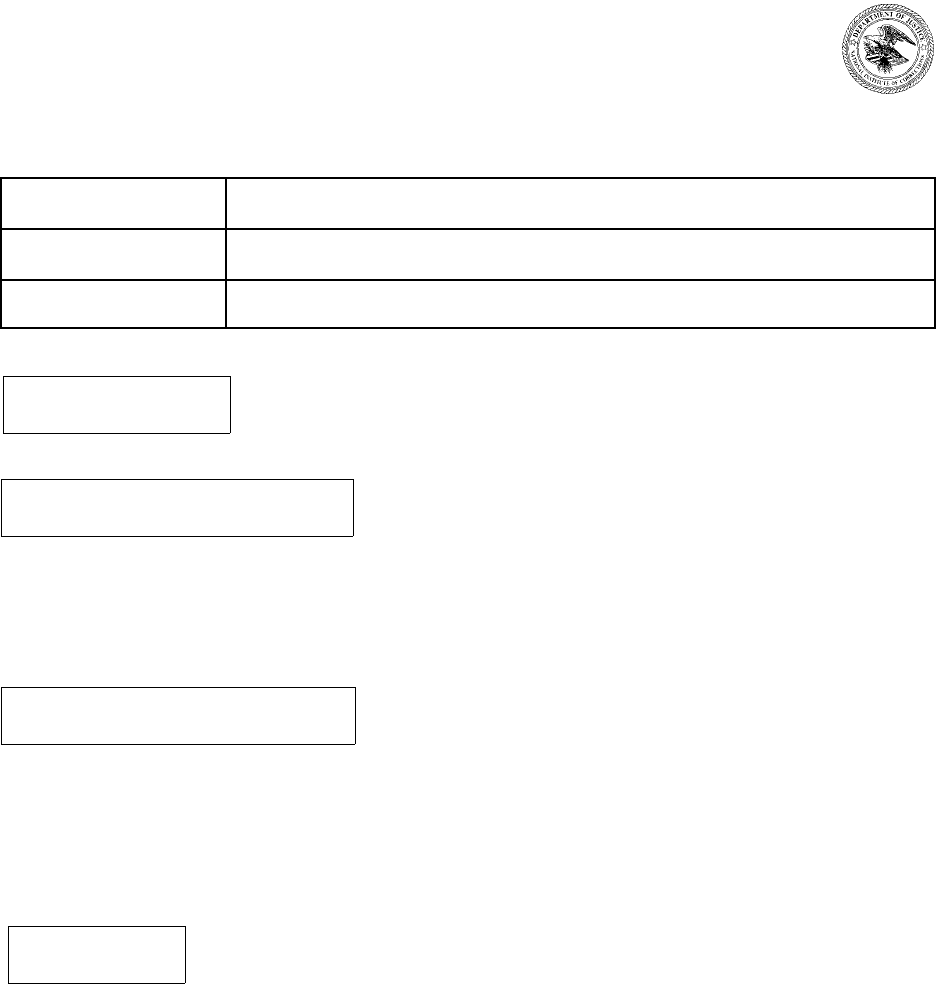
Time Required:
Summary and Rationale:
Performance Objectives:
Equipment:
Module 1
Series: GROUP FACILITATION SKILLS
Curriculum: FACILITATION SKILLS FOR TRAINERS
Module: INTRODUCTION AND COURSE OVERVIEW
1 Hour 40 Minutes (includes 10 minute break)
The purpose of this module is to provide participants with an overview of the 16-hour
seminar.
Participants will:
1. get to know other members of the group.
2. get a preview of the seminar.
• Easel Stand with Flip Chart Pad
• Overhead Projector and Projector Screen
• VCR/Monitor

Materials:
Overheads:
Participant Manual:
• Participant Manual
• Class Roster
• Name tags
• Mr. Holland’s Opus Video
OH #1, Seminar Outcome
OH #2, Agenda Day 1
OH #3, Agenda Day 2
OH #4, Completed Assessment Summary Sheet
1-1 Performance Objectives
1-2, 1-3 Assessment Summary Sheet
1-4 Assessment Summary Completed Example
1-5 Expectations form
1-6 Program Outcomes
1-7 Agenda - Day 1
1-8 Agenda - Day 2
1-9 Assessment Analysis
1-10 Goals

National Institute of Corrections Facilitation Skills for Trainers
(Rev. 5/99) Introduction & Course Overview
1-1
INTRODUCTION
Approx. 5 Minutes
ANTICIPATORY SET
Approx. 25 Minutes
1. INTRODUCTION & COURSE OVERVIEW
CONTENT
REFERENCE
As participants arrive have each
participant: sign in, make a name tag,
give them a participant manual. Instruct
them to complete the Assessment
Summary Sheet on page 1-2 of their
manual using the results of their observer
feedback and self assessment ratings. If
a participant arrives without any materials
direct them to complete a Self
Assessment form in reference section of
their manual.
Participant Manual p. 1-2
Note: Have a few calculators handy to
speed up this process. Point out that
there is a sample of a completed
Assessment Summary Sheet p. 1-2 of
their manual.
Introduce trainers briefly (trainer
background and experience). ETR
contract with NIC Academy.
Explain NIC Academy - Sponsorship of
the program, review Regionalization
process.
I am going to show a piece of
the film, “Mr. Holland’s Opus.”
For those who haven’t seen
the movie, it is about a music teacher
whose life dream is to be a composer.
In this segment, we see him on his first
day of teaching. Just watch and we’ll
refer to this film clip over the course
of the seminar.

National Institute of Corrections Facilitation Skills for Trainers
(Rev. 5/99) Introduction & Course Overview
1-2
Show 3 minute segment of Mr. Holland’s
Opus (1st day of class).
Ask: Has anyone had a training
experience like this?
VCR and monitor
Mr. Holland’s Opus video
Get 1-2 stories
Review Module 1 Objectives.
<
get to know other members of the
group
<
get a preview of seminar
Participant Manual p. 1-1
“Name Game with Instruments”
Tell the group that the activity they’ll
participate in is one that will help them get
to know one another’s names.
Instruct the group to stand and form a
circle in a large open area of the room.
Each person in the circle will be telling
us the name they would like to be
called during this workshop. After
telling us your name, I would like you
to make a non-verbal representation of
playing a musical instrument that you
like or play. I will do it myself first so
that you can have an example.
Trainer demonstrates by giving his/her
name and pantomiming playing a favorite
instrument (e.g. a keyboard, a trombone,
and drums).
We will begin with my name and
demonstration and go around the
circle. At each person’s turn the whole
group will repeat the names and
demonstrate the instrument of each
person that has gone before. You can
repeat an instrument that someone
else chose. We will continue around
the circle until we come back to me,
the person who started. You can help
each other remember; our purpose is
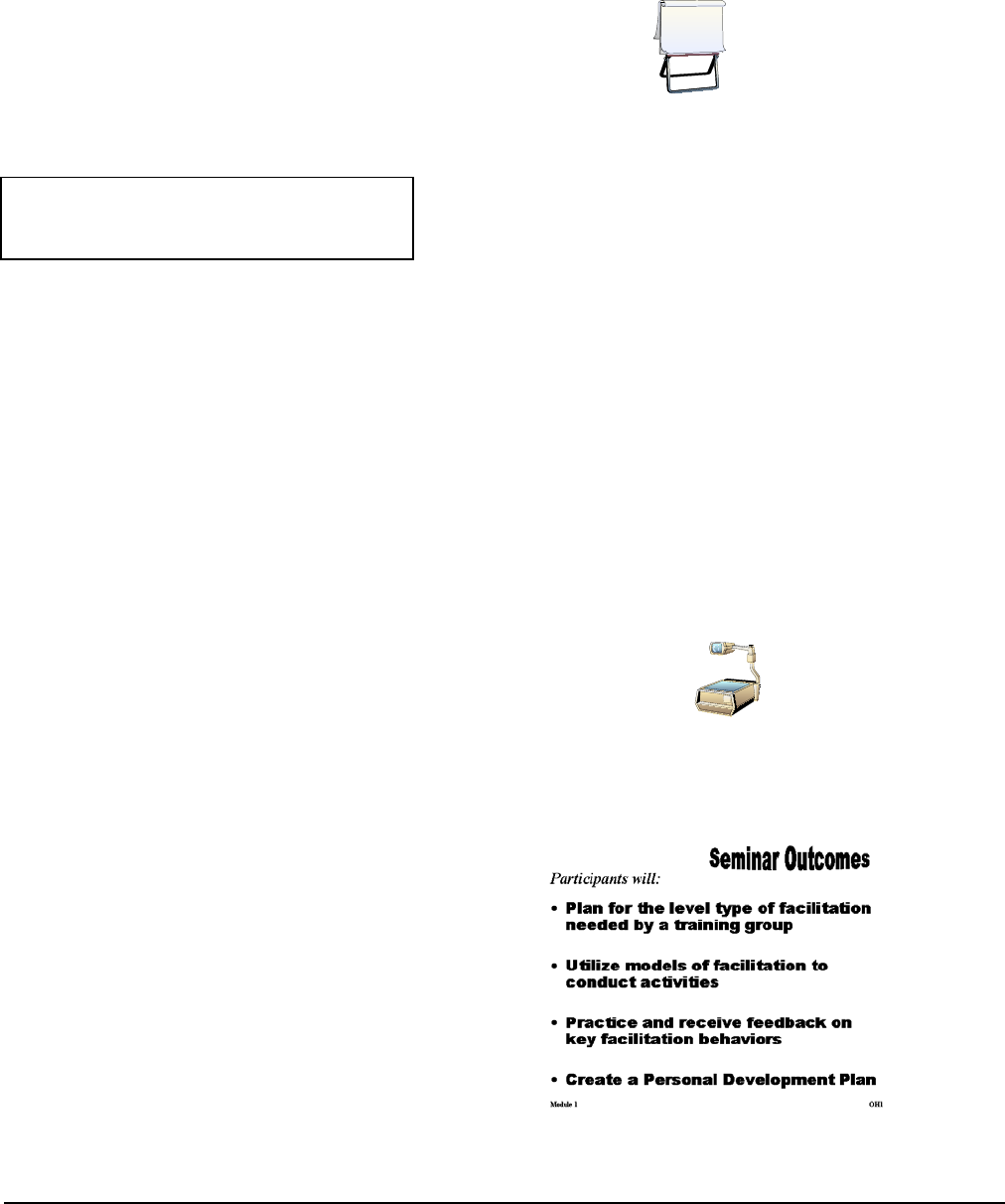
National Institute of Corrections Facilitation Skills for Trainers
(Rev. 5/99) Introduction & Course Overview
1-3
INSTRUCTIONAL INPUT
Approx. 30 Minutes
to learn each other’s names and create
an orchestra.
When the circle is completed have the
group give themselves a round of
applause and ask them to remember their
instrument because they will be played
again later.
Expectations and Agenda
Instruct participants to take three
minutes to individually complete page 1-
4 of their manuals titled Expectations.
Let them know you will be asking them
to share their responses. Go around the
room (round robin) and have each
person read their sentence completions.
Check for accuracy as you record on
newsprint.
Participant Manual, p. 1-4
Note: One trainer should record while one
facilitates the reporting. If an expectation is
repeated put a check mark next to the
previously recorded statement.
Ask if there are additional expectations
that are not represented on the list and
record them. Post the expectations list
on a wall that the group can view.
Display overhead transparencies:
Seminar Outcomes (OH #1 & Manual
page 1-5) and Course Agenda (OH #2 &
#3 & Manual pages 1-6 and 1-7). Review
the seminar outcomes and agenda,
explaining how it fits or does not fit with
participant expectations. Explain that we
will be providing time for reflection through
the next two days, because this time (to
think or write) helps “set” new learning so
it is more likely to be retained.
Participant Manual p. 1-5, 1-6 and 1-7
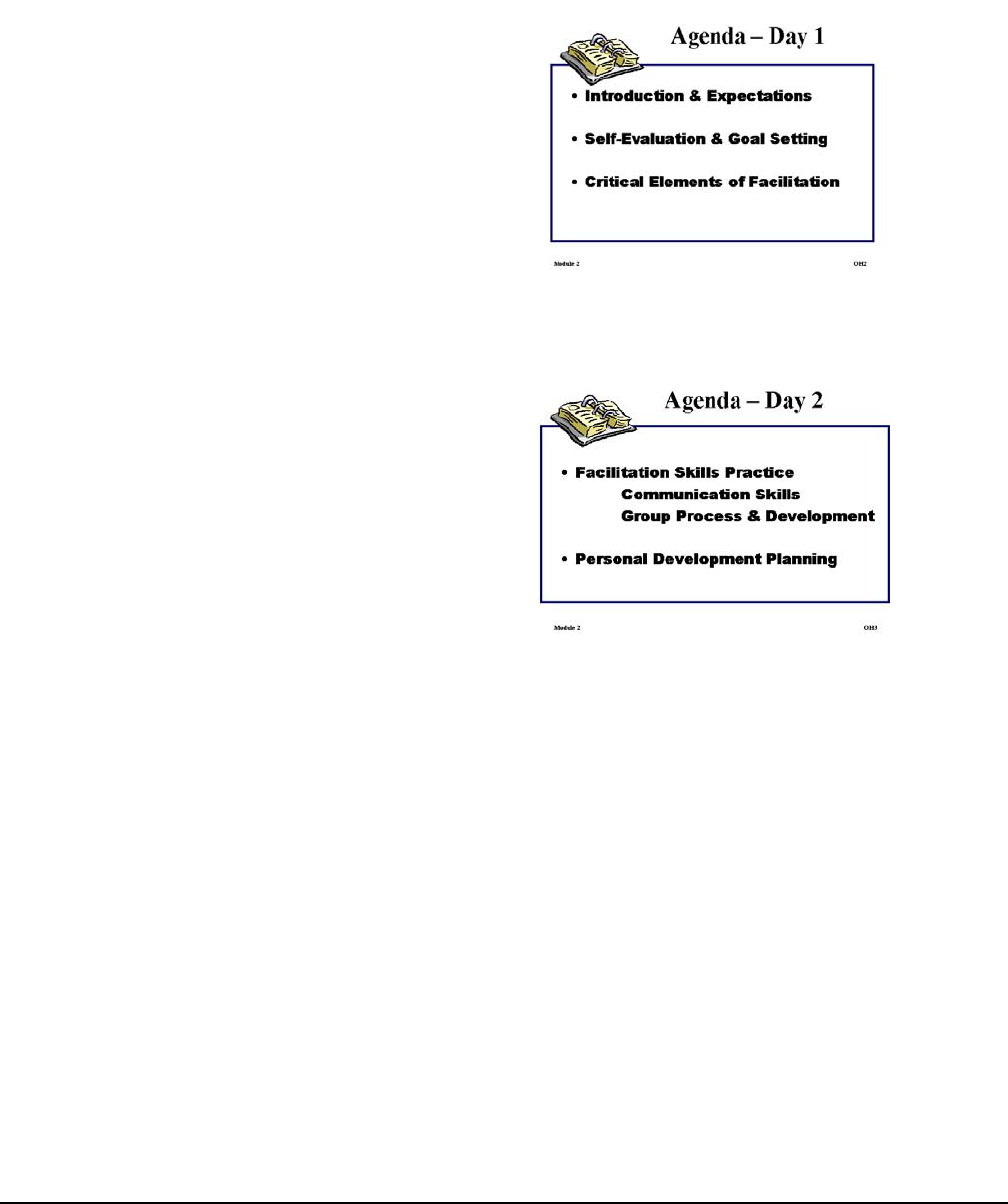
National Institute of Corrections Facilitation Skills for Trainers
(Rev. 5/99) Introduction & Course Overview
1-4
This seminar is based on the
understanding that facilitation in a
training session is the process of
helping participants learn as effectively
as possible. We established
prerequisites for this course and expect
that you each have already learned
basic platform skills and adult learning
principles. If that is not the case for
any of you, we will be available to
provide coaching and invite the other
participants to assist.

National Institute of Corrections Facilitation Skills for Trainers
(Rev. 5/99) Introduction & Course Overview
1-5
Make “housekeeping” announcements. Complete any housekeeping items here –
location of the bathrooms, telephones,
breaks spaces, lunch options, tours,
people staying on site. Remind folks to
keep their beepers on vibrate and to turn
off their cell phones.
Ground Rules
Now that we’ve had a chance to get to
know a little about each other and
before we move into the “work” of our
workshop, let’s spend time creating our
own ground rules for the next two days.
Revisit the expectations and check for any
additions after learning the agenda. Ask
the group to look at their expectations, the
trainer’s expectations (outcomes) and to
identify the behaviors they would like to
see from each other and from the trainers
that would “facilitate” learning. (Give them
an example: Listen while others speak).
List their ground rules on newsprint.
Note: Ground Rules (general and
specific) to look for are:
Personal Needs: Periodic breaks, take
care of ourselves (personal comfort),
begin and end on time.
Environment: no smoking.
Self: be receptive to feedback, be willing
to risk/put ourselves out there, roles,
responsibility, commitment.
Interaction: Everyone participate and
help one another participate, support
and encourage one another, one person
speak at a time, how to indicate you
have a comment, be honest in giving
feedback so people can learn (specific
examples, suggestions, alternatives),
communication.
Ideas: Basic respect for different beliefs,
perceptions, points of view, decisions,
problem-solving.
Ask the group if they can agree to “live
by” and share responsibility for
maintaining the ground rules during the
two days. Gain verbal consensus.
Break 10 minutes

National Institute of Corrections Facilitation Skills for Trainers
(Rev. 5/99) Introduction & Course Overview
1-6
GUIDED PRACTICE
Approx. 30 Minutes
Self Evaluation of Skills and Goal
Setting
Give participants a few minutes to
complete their Assessment Summary (p.
1-2)
Have participants turn to their now
completed Assessment Summary Sheet
(Participant Manual page 1-2) and
remove it from their manuals. Have them
turn to page 1-8, Assessment Analysis.
Participant Manual p. 1-2
Participant Manual p. 1-2 & 1-8
You are now going to examine the
feedback you received from observers
and your self assessment in order to
set individual goals for this training
session.
Instruct the group to take a minute
and study their scoring sheet before
answering the questions. Remind
the participants that trying to
identify the source of feedback will
not be helpful in this process. We
will be asking the group to thank
everyone who gave them feedback
when they return and let the
observers know they appreciated
getting their input.
Read the first question on the
Assessment Analysis sheet to the
group and show overhead
transparency #4 of a completed
Assessment Summary Sheet,

National Institute of Corrections Facilitation Skills for Trainers
(Rev. 5/99) Introduction & Course Overview
1-7
giving an example of similar/same
ratings.
Note: Use items that are scored
as examples for the Assessment
Analysis questions.
Give them 10 minutes to
complete the five items.
Note: Trainer should circulate to
help participants.
Choose a partner and take 10
minutes to discuss your
reactions to the summary.
Decide which one or two
behaviors you would like to
focus on during the next two
days.
Check in with pairs to ensure that
behaviors are being selected. At the
end of the ten minutes ask for their
attention.
Take 10 minutes to write on the
page titled Goals (page 1-9).
Participant Manual p. 1-9

National Institute of Corrections Facilitation Skills for Trainers
(Rev. 5/99) Introduction & Course Overview
1-8
CLOSURE
Approx. 5 Minutes
Allow time for reflection and writing.
We will be coming back to these
Goals during the workshop. Our
instruction and activities are
directed toward the behaviors
you assessed and for which you
received feedback. As our
agenda indicates we will answer
the question: What is facilitation
and what are the critical
elements?

Module 1
Introduction and Course Overview
Training Supplements:
• Overhead Transparencies
OH#1 Course Outcomes
OH#2 Agenda - Day 1
OH#3 Agenda - Day 2
OH#4 Completed Assessment Summary Sheet
• Participant Manual
1-1 Performance Objectives
1-2 Assessment Summary Sheet
1-3 Assessment Summary Completed Example
1-4 Expectations form
1-5 Program Outcomes
1-6 Agenda - Day 1
1-7 Agenda - Day 2
1-8 Assessment Analysis
1-9 Goals

Participants will:
• Plan for the level type of facilitation
needed by a training group
• Utilize models of facilitation to
conduct activities
• Practice and receive feedback on
key facilitation behaviors
• Create a Personal Development Plan
Module 1 OH1
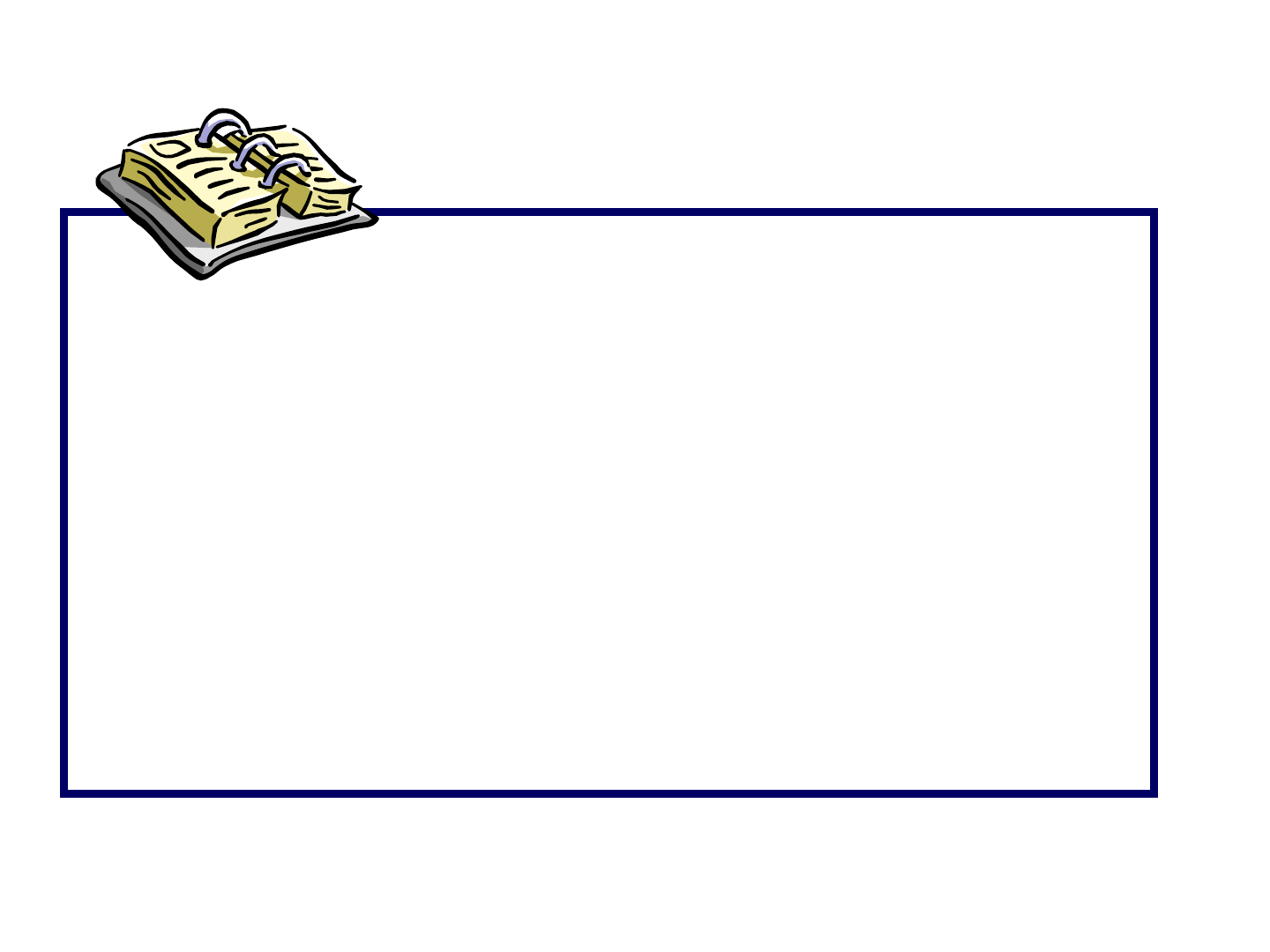
Agenda – Day 1
• Introduction & Expectations
• Self-Evaluation & Goal Setting
• Critical Elements of Facilitation
Module 2 OH2
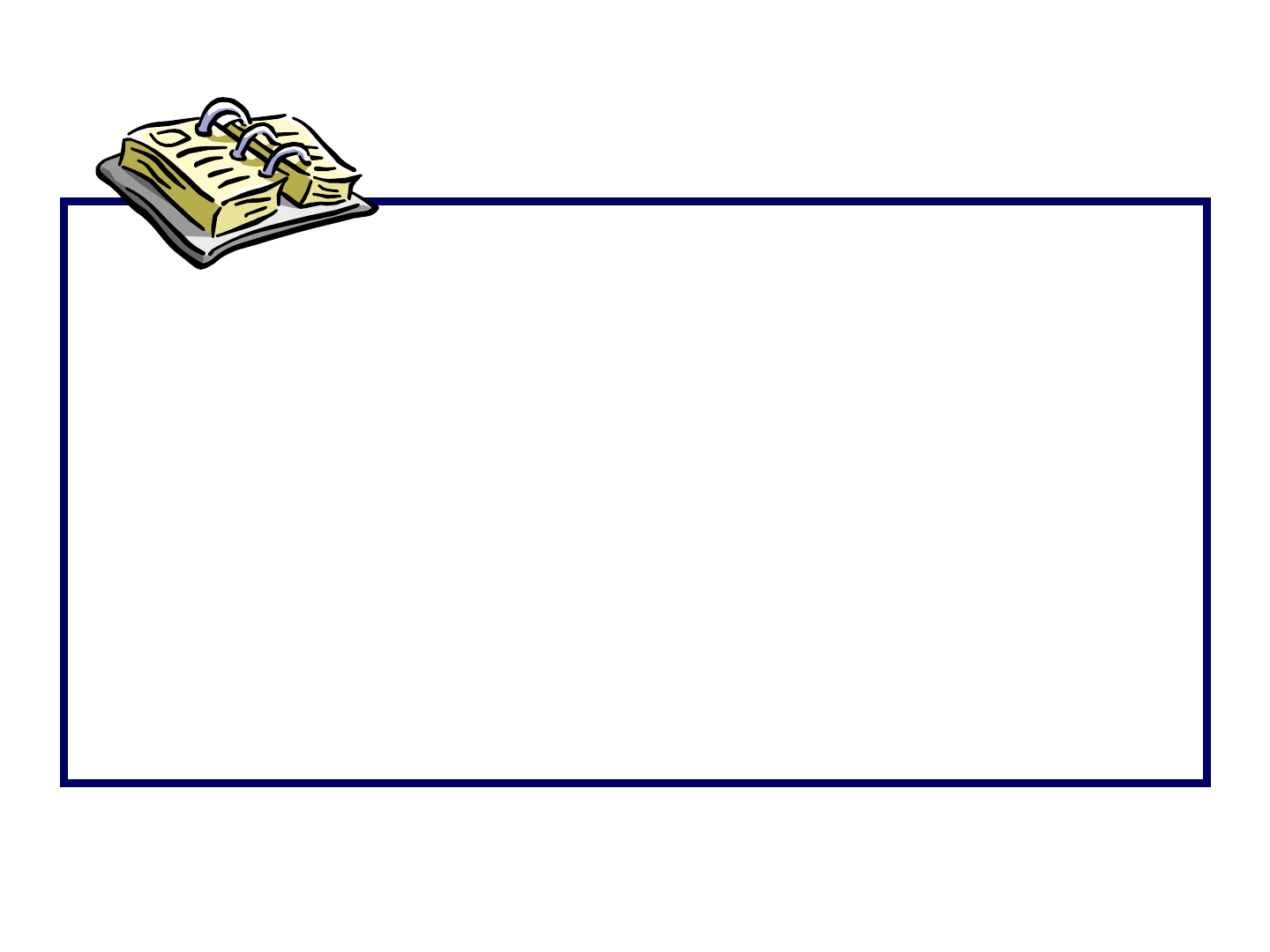
Agenda – Day 2
• Facilitation Skills Practice
Communication Skills
Group Process & Development
• Personal Development Planning
Module 2 OH3
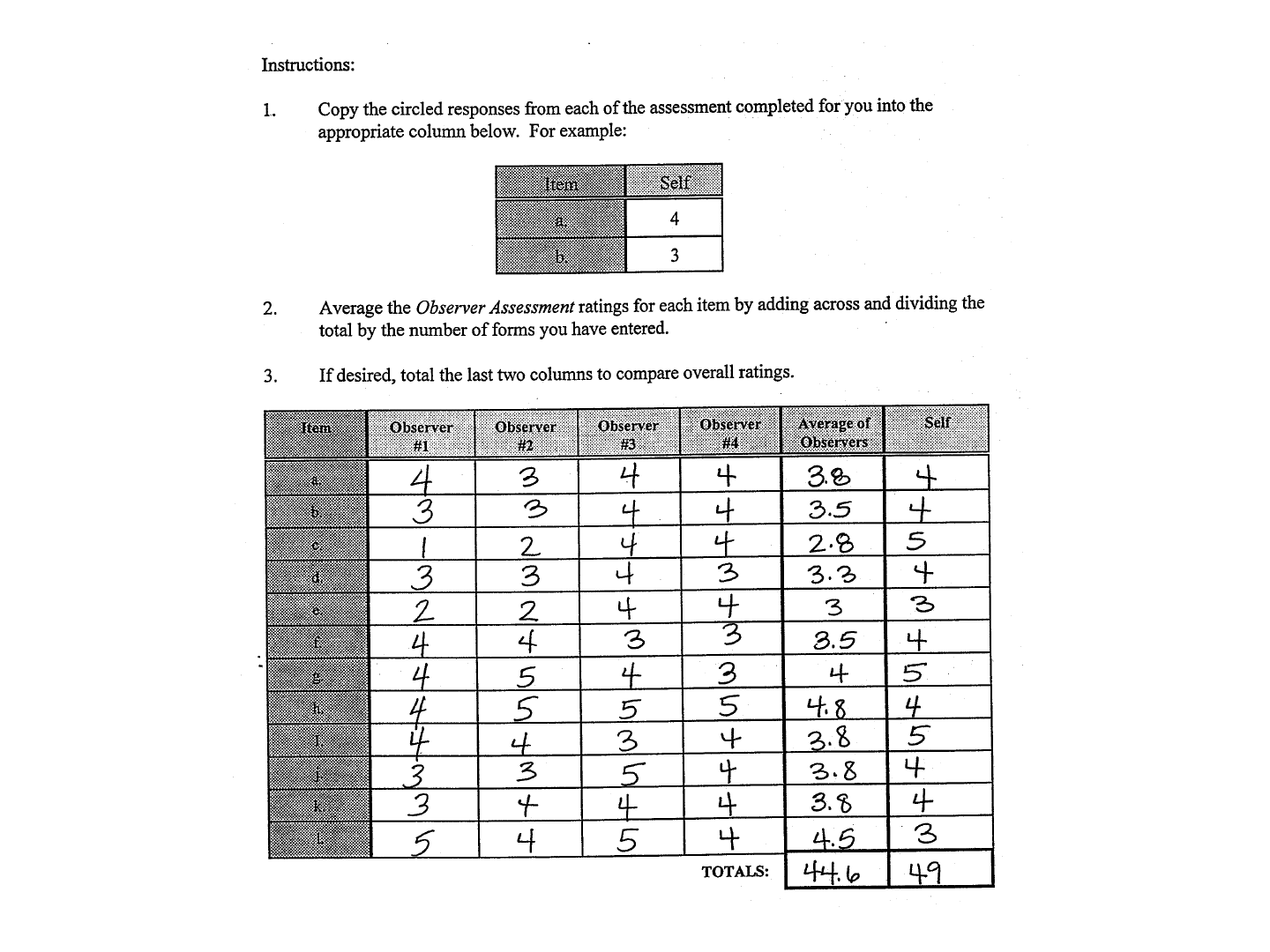
Assessment Summary Sheet
Module 1 OH4

Participant Manual
1-1
NATIONAL INSTITUTE OF CORRECTIONS
NATIONAL INSTITUTE OF CORRECTIONS ACADEMY
FACILITATION SKILLS FOR TRAINERS
Module 1 - Introductions and Course Overview
Given the material in this seminar, participants will:
• get to know other members of the group.
• get a preview of the seminar.
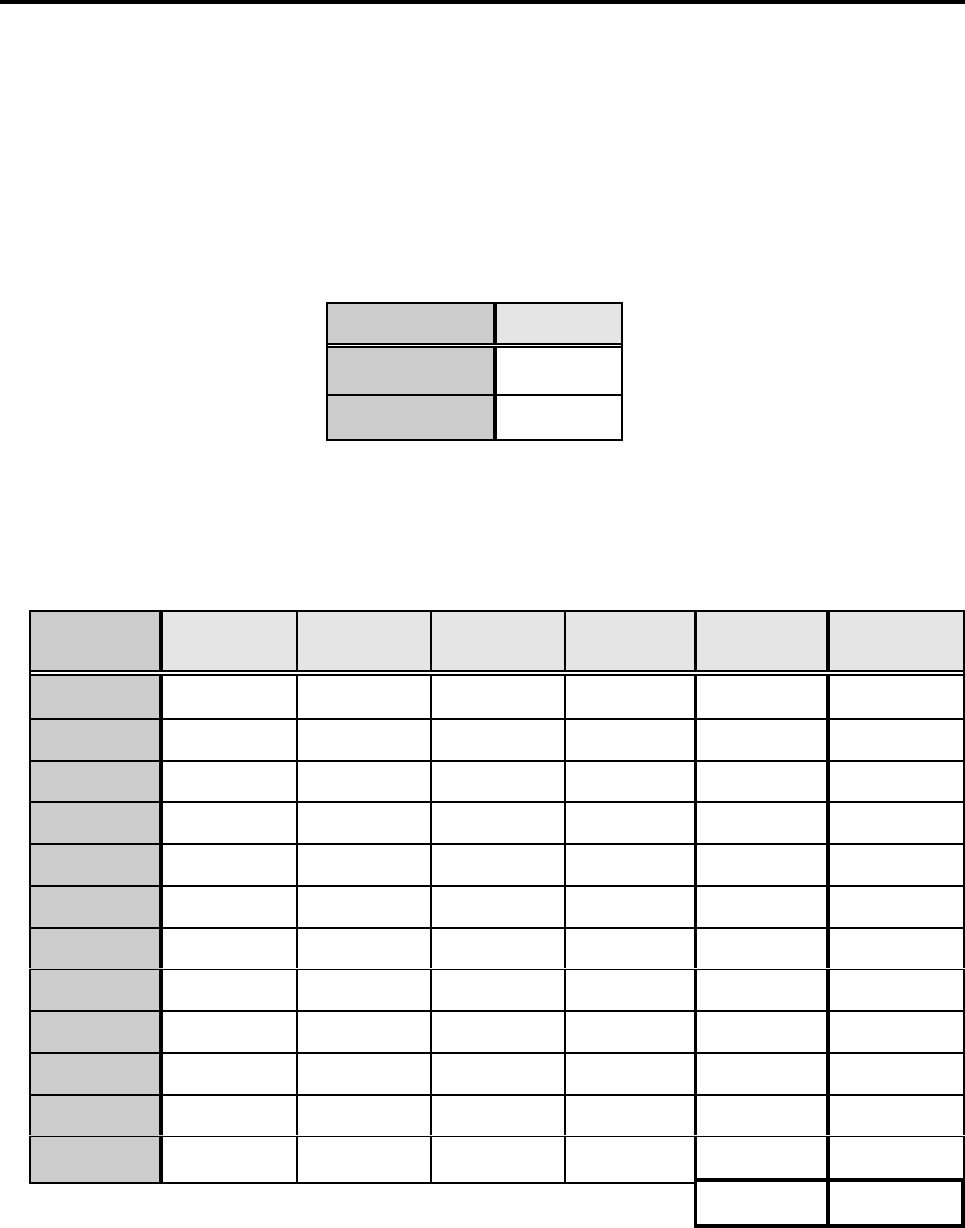
Group Facilitation Skills for Trainers
1-2
Date: ______________________
Assessment Summary Sheet
Instructions:
1. Copy the circled responses from each of the assessment completed for you into the
appropriate column below. For example:
Item Self
a. 4
b. 3
2. Average the Observer Assessment ratings for each item by adding across and dividing the
total by the number of forms you have entered.
3. If desired, total the last two columns to compare overall ratings.
Item Observer
#1
Observer
#2
Observer
#3
Observer
#4
Average of
Observers
Self
a.
b.
c.
d.
e.
f.
g.
h.
I.
j.
k.
l.
TOTALS:

Group Facilitation Skills for Trainers
1-3
Interpreting overall ratings:
If Total from other side is:
12-25 Confidence and/or skills are low (i.e., new facilitator).
Observation of experienced facilitators, practice in low-risk situations and
feedback by trained observers can help improve your skills.
26-40 Average skill range. Further practice and feedback will improve skill and
confidence.
41-60 High confidence and/or skill. Continued experience will further enhance your
skills and increase the range of situations in which you are comfortable
facilitating.

Group Facilitation Skills for Trainers
1-4
Assessment Summary Sheet (filled out sample - hard copy master

Group Facilitation Skills for Trainers
1-5
Expectations
As a facilitator, I am . . .
____ Very experienced and very confident
____ Experienced and somewhat confident
____ Somewhat experienced, but not very confident
____ Inexperienced, not confident
____ Other ______________________________________________
___________________________________________________
At the end of this training, I expect . . .

Group Facilitation Skills for Trainers
Participant Manual
1-6
NATIONAL INSTITUTE OF CORRECTIONS
NATIONAL INSTITUTE OF CORRECTIONS ACADEMY
FACILITATION SKILLS FOR TRAINERS
SEMINAR OUTCOMES
During this seminar, participants will:
• assess and plan for the level and type of facilitation needed
by a training group.
• utilize models of facilitation to conduct activities.
• practice and receive feedback on key facilitation behaviors.
• create a Personal Development Plan.

Group Facilitation Skills for Trainers
Participant Manual
1-7
NATIONAL INSTITUTE OF CORRECTIONS
NATIONAL INSTITUTE OF CORRECTIONS ACADEMY
FACILITATION SKILLS FOR TRAINERS
AGENDA
Day 1:
8 a.m.-12 p.m. Introduction
Self-Evaluation of Skills and Goal Setting
Critical Elements of Facilitation
12 p.m.-1 p.m. Lunch
1 p.m.-5 p.m. Critical Elements of Facilitation cont’d
Wrap-up

Group Facilitation Skills for Trainers
Participant Manual
1-8
NATIONAL INSTITUTE OF CORRECTIONS
NATIONAL INSTITUTE OF CORRECTIONS ACADEMY
FACILITATION SKILLS FOR TRAINERS
AGENDA
Day 2:
8 a.m.-12 p.m. Warm up
Instructions for Preparation
Presentation Preparation
Presentations - Communication Skills
Trio 1
Trio 2
Trio 3
12 p.m.-1 p.m. Lunch
1 p.m.-5 p.m. Group Process
Trio 4
Trio 5
Trio 6
Personal Development Planning
Wrap up

Group Facilitation Skills for Trainers
Participant Manual
1-9
Assessment Analysis
Your Assessment Summary Sheet should be completed before answering the following questions.
As you review your own ratings with those given to you by observers, consider the information as
a source for goal setting during the Facilitation Skills workshop and for planning in the future.
1. List the items for which your own rating and the average of how observers
rated you had the same or similar value:
2. List the items for which you rated yourself higher than the average of how
the observers rated you:
3. List the items for which you rated yourself lower than the average of how
observers rated you:
4. List the items for which there is the greatest discrepancy between the
“observer” ratings:
5. List the items for which there is the greatest discrepancy between your own
rating and any individual or combination of “observer” ratings:

Group Facilitation Skills for Trainers
Participant Manual
1-10
Goals
Describe your thoughts and feelings as you completed your Summary Sheet and
reviewed it with your partner.
What insights did you get about your facilitation skills?
What implications does this have for your facilitation practices?
What are specific behaviors you want to focus on during the next two days.
Other comments.
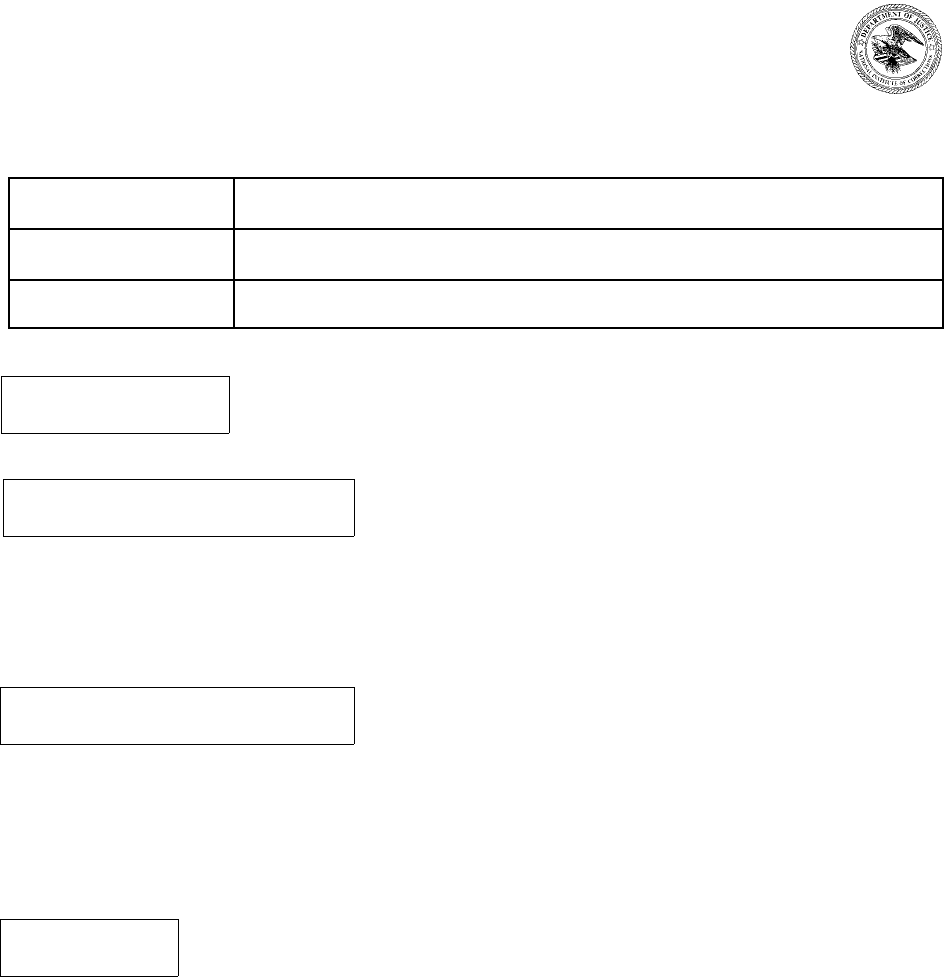
Time Required:
Summary and Rationale:
Performance Objectives:
Equipment:
Module 2
Series: GROUP FACILITATION SKILLS
Curriculum: FACILITATION SKILLS FOR TRAINERS
Module: CRITICAL ELEMENT #1- How We Process Learning
1 Hour 55 Minutes (including two 10-minute breaks)
The purpose of this module is to review Kolb’s Learning Cycle and help participants use
it to develop effective process questions.
Participants will:
1. review a four-step Learning Cycle and practice developing processing questions
that assist the Learner.
• Easel Stand with Flip Chart Pad
• Overhead Projector and Projector Screen

Materials:
Overheads:
Participant Manual:
• Participant Manual
OH #5, The Critical Elements of Facilitation
OH #6, The Learning Cycle
OH #7, What?, So What?, Now What?
OH #8, Reflection
OH #9, Analysis
OH #10, Application
2-1 Performance Objectives
2-2 Facilitator as Conductor
2-3 Facilitator as Conductor: Reflection Guide
2-4 Critical Elements of Facilitation
2-5 The Learning Cycle
2-6 The Learning Cycle Worksheet
2-7 Question Starters
2-8 Orchestra Name Game
2-9 Guidelines for Using Process Questions in Your Training Design
2-10 How We Process Learning: Reflection Guide

National Institute of Corrections Facilitation Skills for Trainers
(Rev. 5/99) Critical Element #1
2-1
ANTICIPATORY SET
Approx. 20 Minutes
2. CRITICAL ELEMENT #1- How We Process
Learning
CONTENTS REFERENCE
Orchestra Activity
Have the group stand and move away
from their tables.
Recall your musical
instrument from the earlier
name activity. Now lets
play our instruments out
loud all at once on the count of three.
After a short time ask everyone to stop.
Note: Move through this orchestra
activity quickly, having fun with it.
Note: It will sound strange and likely
awful.
We are going to do it again this time
with a single song in mind. (This time
play music or give them a commonly
known song to play - e.g. “It’s a Small
World”)
Note: It will sound a little better.
How could we make it sound better?
People could arrange themselves in like
type instrument sections--like a real
orchestra in strings , percussion, brass,

National Institute of Corrections Facilitation Skills for Trainers
(Rev. 5/99) Critical Element 1
2-2
etc. The trainer should conduct from up
front with a baton-like prop, playing the
same music or asking them to play the
same commonly known song. Do a little
instructing to get it to sound better.
After playing for a minute, have the group
give itself applause and return to their
seats.
How is conducting an orchestra like
facilitating learning in a group?
Responses may include: each
instrument/player is unique and provides
an important contribution to the total
sound like each learner contributes to the
total learning experience; the conductor
provides the pace, direction and manages
the process as does the facilitator; the
conductor only brings out the sound-
doesn’t make it, facilitator brings out the
learning - doesn’t do it themselves; the
music is only as good as the whole - the
learning is only as good as the whole;
each player inspires the other players,
each learner stimulates learning in others,
different players have different skills - as
learners have different skills, people have
more confidence as a group. Reference
adult learning principles, personal
anecdote about “entertaining” rather than
facilitating.
Draw all responses together by
referencing The Facilitator as
Conductor (page 2-2 of manual) and
reviewing the information with the group.
Participant Manual p.2-2
Using the information on this page and
our group discussion, pair up with
another participant, discuss and take
notes on the questions on page 2-3,
The Facilitator as Conductor:
Reflection Guide.
Participant Manual p. 2-3
After the 10 minutes of paired discussion,
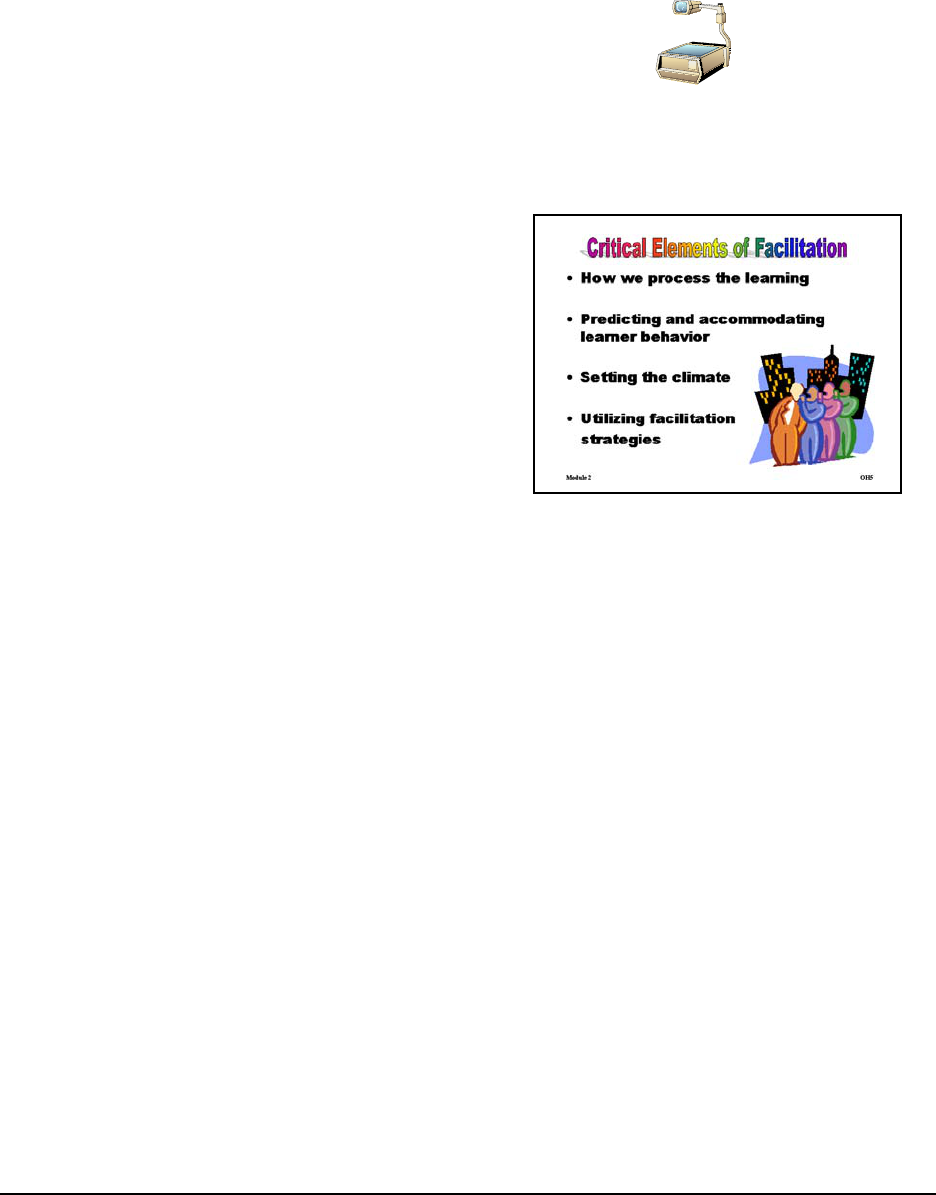
National Institute of Corrections Facilitation Skills for Trainers
(Rev. 5/99) Critical Element 1
2-3
tell them: As we examine facilitation I
invite you to think about how you
might learn to conduct your orchestra
more skillfully to produce the finest
music. The true art of facilitation is
having all the learning come from the
group; the learners make the learning
their own unique “music”.
Display overhead transparency: The
Critical Elements of Facilitation (OH #5,
Manual page 2-4).
Review the 4 elements outlined:
1) How We Process Learning
2)Predicting and Accommodating Learner
Behavior
3) Setting the Climate
4) Utilizing Facilitation Strategies
Also, Participant Manual p. 2-4
We have selected these four critical
elements of facilitation as the core of
our work together. Each of the
elements is interconnected and
therefore this is not a linear set of
concepts. We will, for purposes of
clarity and simplicity, address each
one separately with a discussion and
activities.
Break 10 minutes

National Institute of Corrections Facilitation Skills for Trainers
(Rev. 5/99) Critical Element 1
2-4
INPUT
Approx. 40 Minutes
CRITICAL ELEMENT #1: How We Process Learning
We know that learning is not as simple
as receiving information.
Ask the group: How do you know
someone has learned what you have
taught to them?
Responses may include
: they can explain
how they will use the information, they
can demonstrate using a technique or
skills, they can apply the knowledge given
a case study, they change their behavior,
perceiving personal relevance.
Training provides the opportunity for
gaining knowledge, and skills, as well
as shaping attitudes that enhance job
performance. Generally we don’t get to
see the application of learning or the
change in behavior of a participant
after the training event.
Facilitation of learning in the
classroom strives to assist the
participant to find personal meaning
from the experience, leave the
classroom with a clear understanding
of how to use the learning and
hopefully motivation/reason to use the
information.
Most, if not all of you, are familiar with
Kolb’s model of experiential learning -
how we take in information and how
we process information.
Display overhead transparency of Kolb’s
Model - The Learning Cycle (OH #6 and
Manual page 2-5 & 2-6). Explain each
step, and give an example of how we
move through each step as we learn - e.g.
going to the driving range to hit golf balls,
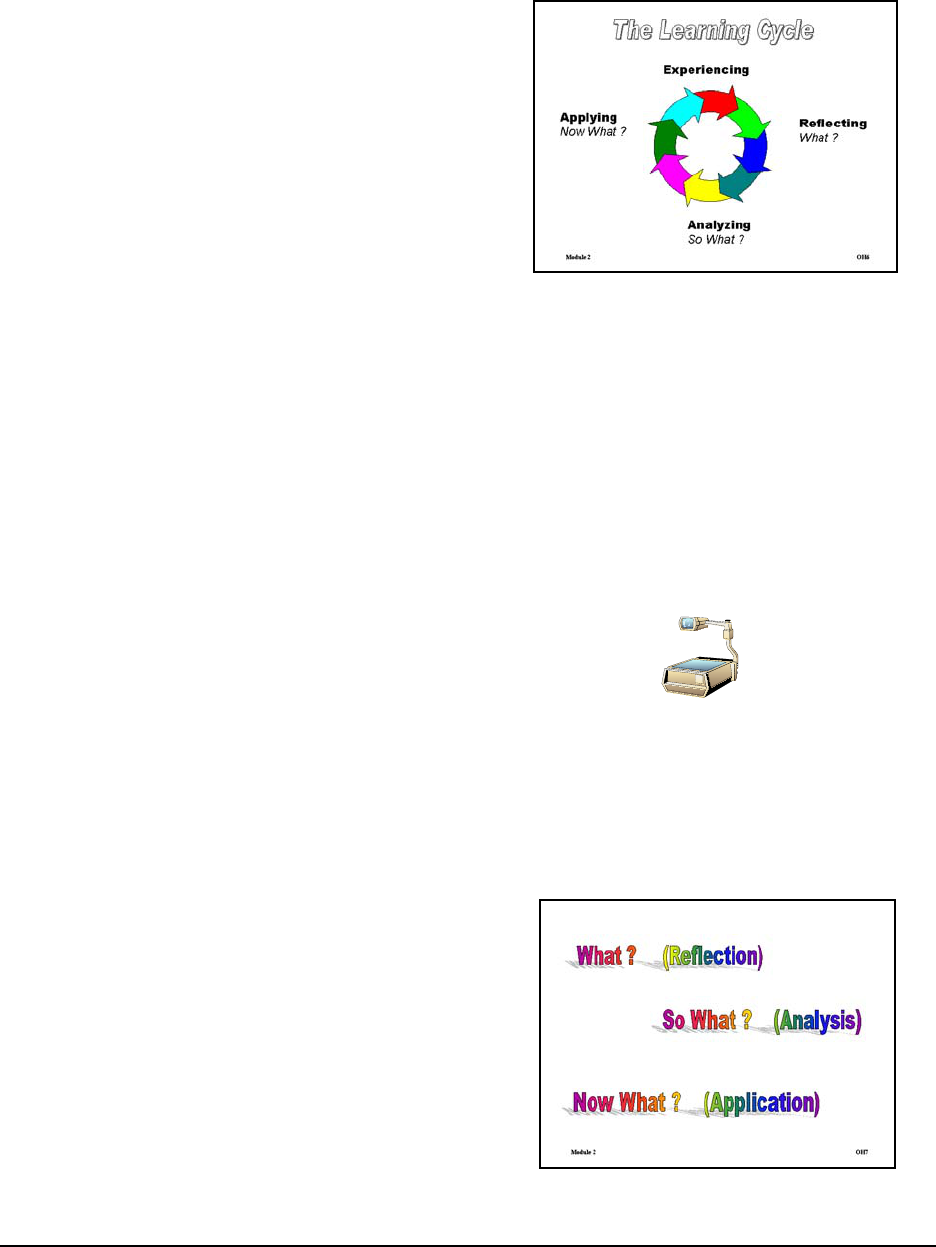
National Institute of Corrections Facilitation Skills for Trainers
(Rev. 5/99) Critical Element 1
2-5
after finishing - thinking about what you
did, thinking about why things worked or
didn’t work, thinking about what to do next
time. Explore how this process might be
enhanced by involving more than one
person.
Participant manual p.2-5 & 2-6
For purposes of our learning we will
focus on the facilitation process that
leads a learner through all four steps
of the model. Though individuals have
preferences, Kolb believes that a
learner needs to move through all of
the steps from Experiencing to
Applying in order to learn from an
experience and apply the learning to
future experiences.
As a facilitator of learning you are
taking the learner from an experience
(either in group or previous to this
training) through a process of
reflection, analysis and application.
The process questions should be
constructed to get at: What? So
What? Now What?
Display overhead transparency #7,
What? So What? Now What?
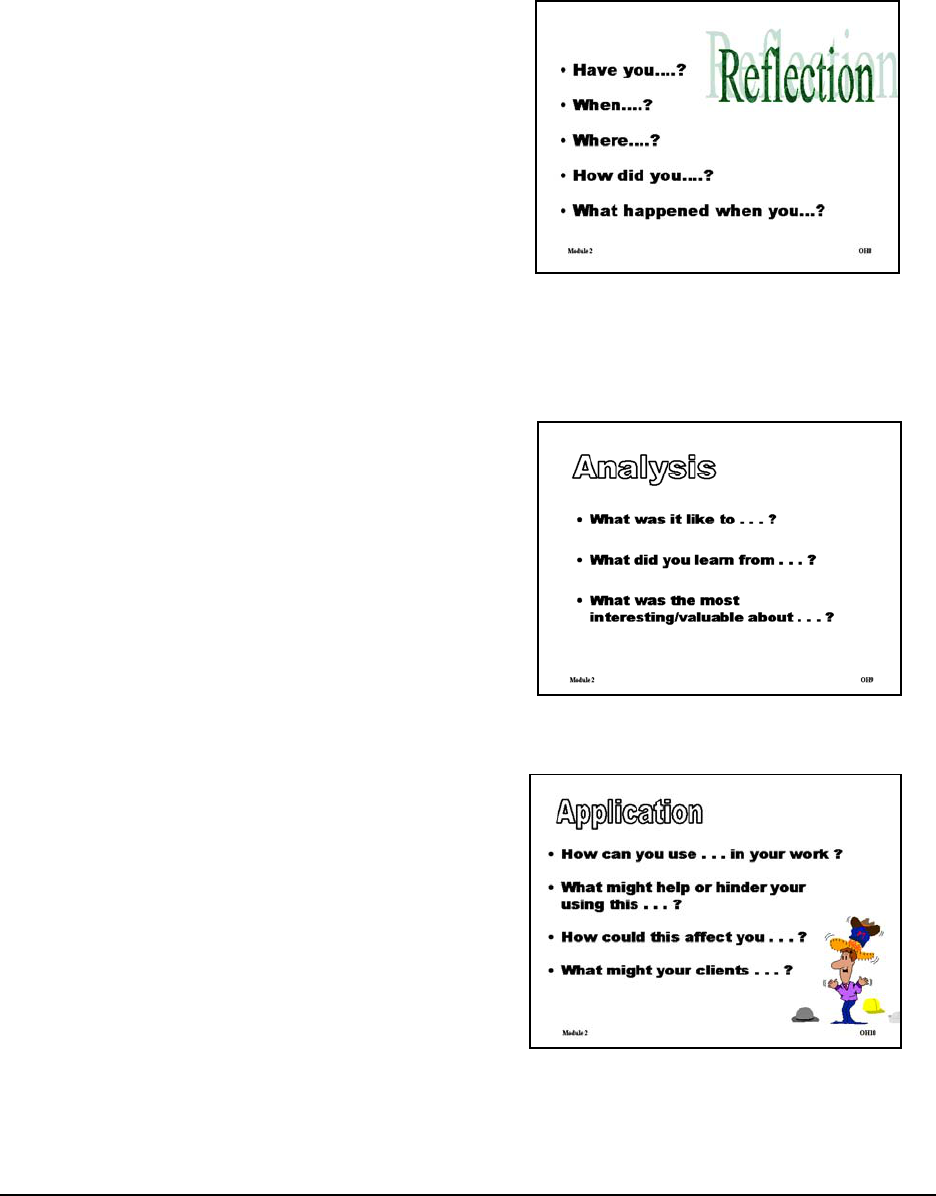
National Institute of Corrections Facilitation Skills for Trainers
(Rev. 5/99) Critical Element 1
2-6
Display overhead transparencies of
Question Starters for each step (OH #8,
#9, #10).
Refer the group to the Question Starters.
Participant Manual p. 2-7

National Institute of Corrections Facilitation Skills for Trainers
(Rev. 5/99) Critical Element 1
2-7
These questions lead the person to a
level of understanding where they can
practice/or apply the information in a
new experience. The facilitator not
only reaches every learning style but
creates the opportunity for both
personal meaning and application.
Tell the group: Now we’ll do a
DEMONSTRATION of using the
Learning Cycle to “process” a group
activity.
Conduct the Change Game with the
group:
I would like to you find a partner in the
group, someone you have not worked
with yet. Find a place in the room
where you can stand and face each
other.
(When they have positioned
themselves). I want you to take the
next 30 seconds and observe
everything you can about your
partner.
Time them.
Now turn back to back, not touching
and change three things in your
appearance.
Give them about 2 minutes to finish.
Now face your partner and find the
three things they changed.
Give them about 2 minutes to finish.
If you haven’t found all three things,
tell your partner what they missed.
Give them 30 seconds to exchange
information.
Turn back to back again and change
3 more things in your appearance.
Give them 2 minutes to finish.

National Institute of Corrections Facilitation Skills for Trainers
(Rev. 5/99) Critical Element 1
2-8
Now face your partner and find the
three things your partner changed.
Give them 2 minutes to finish.
If you haven’t found all three things,
tell your partner what they missed.
Give them 30 seconds to exchange
information.
Turn back to back again.
Wait a moment, allowing them time to
think you are going to give the same
instructions again.
You can go back to your seats.
Process the activity using the
Learning Cycle Model.
Ask them: Let’s reflect. When I gave
you the first round of instructions -
what happened/ what were you
feeling and thinking, what did you
hear or observe other people doing?
Possible responses: people laughed
while they looked at each other, it was
uncomfortable to be so close and be
observed, didn’t know what you wanted
us to do/change, thought this was silly,
didn’t understand why we were doing
this, didn’t question it at all.
What did people do after guessing
and before the second set of
instructions?
Possible responses: started putting
things back they way they were, started
to sit down, were ready for the activity to
be over.
When I gave you the second round of
instructions what happened/ what
were you feeling and thinking, what
did you hear or observe other people
doing?
Possible responses
: started to feel there
was nothing more for me to change,
afraid I was going to having to undress
completely, got silly, thought it was
getting easier when I understood what
you wanted.
When I gave you the last round of
instructions what were you thinking
and feeling?
Possible responses: I wasn’t planning to
do it at all, this was just going too far, I
was getting annoyed and
uncomfortable).
Now lets take a look at what this
Possible responses: connection

National Institute of Corrections Facilitation Skills for Trainers
(Rev. 5/99) Critical Element 1
2-9
means.
How does this connect to learning
new skills and behaviors?
between change and learning.
What happens when we introduce
learners to new skill and behaviors?
Possible responses: they feel awkward,
they resist, they don’t understand what
you want them to do...
They feel and experience many of the
same things you did during this
activity.
How does this relate to you and
learning new facilitation skills.
Possible responses: when you try on
new behaviors to facilitate learning you
will likely feel awkward and
uncomfortable and may even put things
back the way they were, because it is
more comfortable that way.
Lets discuss what you can do with
this understanding/information.
What can you do with this
information about the natural
reaction to learning as change? How
can you use what you just learned to
increase the chance you will be open
to and use what you learn?
Possible responses: be aware of my
discomfort when I try a new behavior
and persist, don’t go back to my old
ways of doing things right away
because it is more uncomfortable, use
this information to understand my
participants better.
You have just experienced
processing an activity using the
learning cycle. How did the questions
I used involve the group in each of
the steps- Reflecting, Analyzing and
Applying?
What questions do you have about
what I did? About the process?
Now you can practice developing a
set of process questions using the

National Institute of Corrections Facilitation Skills for Trainers
(Rev. 5/99) Critical Element 1
2-10
GUIDED PRACTICE
Approx. 25 minutes
Learning Cycle.
Divide into three small groups.
Have participants turn to Orchestra
Name Game and review the objective
and teaching points. Using the
Orchestra Name Game activity, they will
develop questions for their area to draw
out the “teaching points.”
Participant Manual p.2-8
Assign one process area to each group
(Reflection, Analysis, Application)
Tell them: Take 10 minutes and
brainstorm a list of questions you
could use after this
activity/experience to address your
process area. For example, as a
reflection question you might ask:
What behaviors did you observe
during the Orchestra Name Game?
Have each group report out (providing
feedback on the questions and asking
the whole group to add to the list).
Note: Questions to look for are:
What?
Have you done other activities like this
before?
When/at what point in the training did you
do this?
How did you feel when it was announced?
How did you feel while it was in progress?
How did you feel when it was over?
What happened when someone else took
your instrument?

National Institute of Corrections Facilitation Skills for Trainers
(Rev. 5/99) Critical Element 1
2-11
CLOSURE
Approx. 10 Minutes
How did you feel?
How did you decide on an instrument?
So what?
What did we do to break the ice?
How?
What about this exercise helped us break
the ice?
What did we learn about the make-up of
the group?
Now What?
How can you use this exercise to facilitate
or make participants feel comfortable?
How will activity help to improve your
memory skills or assist you in learning
new things?
How can we modify this exercise to our
needs or various work environments?
List reasons why this activity would not be
an appropriate activity.
Have participants turn to Guidelines for
Using Process Questions in your
Training Design and review them with
the group.
Participant Manual p. 2-9
Have participants turn to How We
Process Learning: Reflection Guide
and instruct them to take 5 minutes to
make notes on how they will use this
information we have just covered.
Participant Manual p. 2-10
Ask them: What questions do you have
about facilitating a group through the
learning cycle?
Break 10 minutes

Module 2
Critical Element #1
How We Process Learning
Training Supplements:
• Overhead Transparencies
OH#5 The Critical Elements of Facilitation
OH#6 The Learning Cycle
OH#7 What?, So What?, Now What?
OH#8 Reflection
OH#9 Analysis
OH#10 Application
• Participant Manual
2-1 Performance Objectives
2-2 Facilitator as Conductor
2-3 Facilitator as Conductor: Reflection Guide
2-4 Critical Elements of Facilitation
2-5 The Learning Cycle
2-6 The Learning Cycle Worksheet
2-7 Question Starters
2-8 Orchestra Name Game
2-9 Guidelines for Using Process Questions in Your
Training Design
2-10 How We Process Learning: Reflection Guide
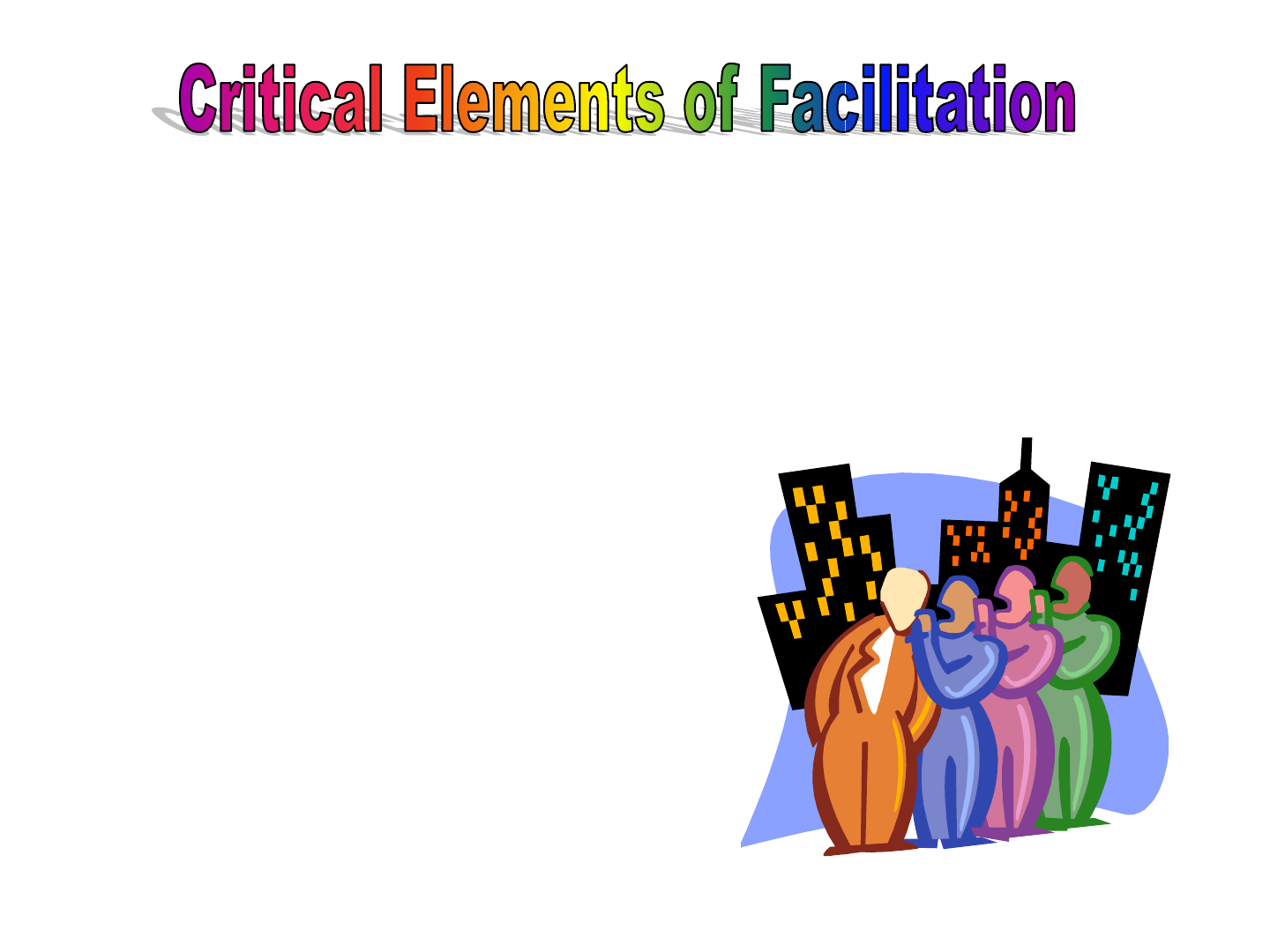
• How we process the learning
• Predicting and accommodating
learner behavior
• Setting the climate
• Utilizing facilitation
strategies
Module 2 OH5
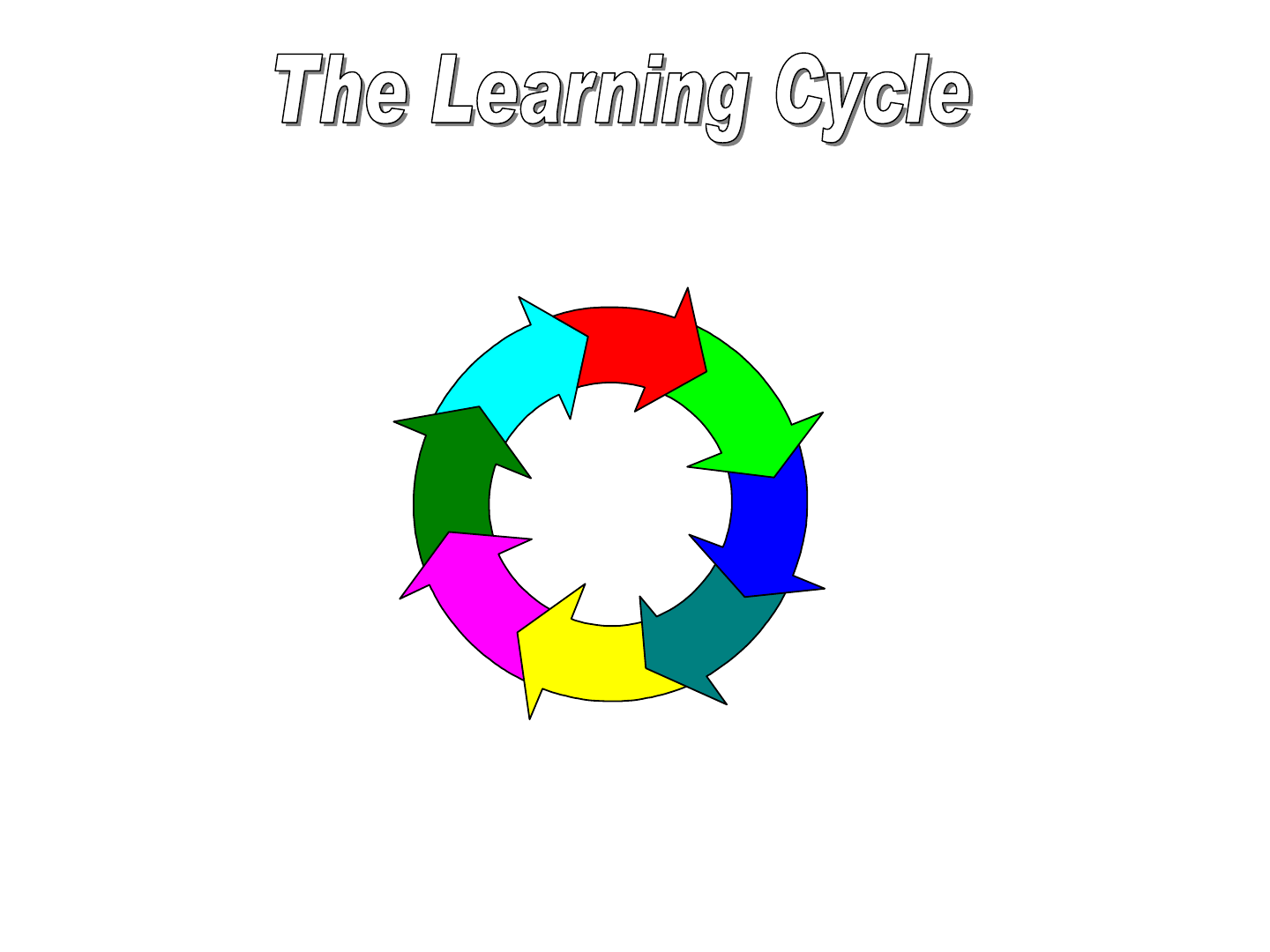
Experiencing
Applying
Now What ?
Analyzing
So What ?
Reflecting
What ?
Module 2 OH6
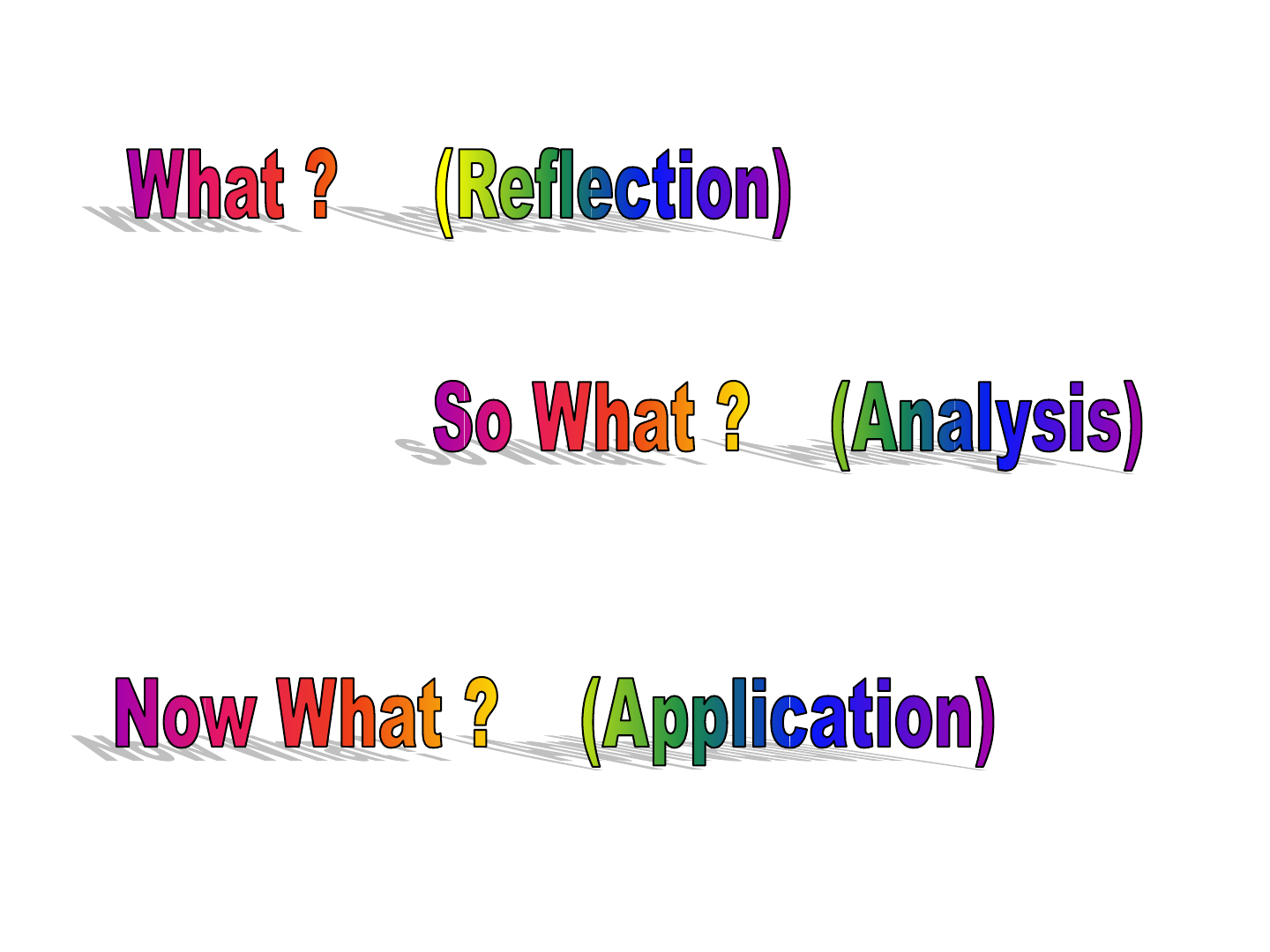
Module 2 OH7

Module 2 OH8
• Have you….?
• When….?
• Where….?
• How did you….?
• What happened when you…?

• What was it like to . . . ?
• What did you learn from . . . ?
• What was the most
interesting/valuable about . . . ?
Module 2 OH9

• How can you use . . . in your work ?
• What might help or hinder your
using this . . . ?
• How could this affect you . . . ?
• What might your clients . . . ?
Module 2 OH10

Participant Manual
2-1
NATIONAL INSTITUTE OF CORRECTIONS
NATIONAL INSTITUTE OF CORRECTIONS ACADEMY
FACILITATION SKILLS FOR TRAINERS
Module 2 - Critical Element #1 - How We Process Learning
Given the material in this seminar, participants will:
• review a four-step Learning Cycle and practice
developing processing questions that assist the Learner.

Participant Manual
2-2
Facilitator as Conductor
Musical Conducting
Arrange the music (sheet music)
Arrange seating and organize musicians as
they test their instruments and listen to
each other’s sounds
Determine the level of conducting needed
based on the musical composition and the
talent/skills of the musicians
Conduct the music
Facilitating Learning
Create a design
Set the climate including arranging seating,
moving people around as they introduce
themselves
Determine the level of facilitation based on
the purpose and the needs of learners
Use the process model and behaviors
The music...
Music comes from the orchestra who share a common purpose (not from the conductor).
The conductor blends the sounds, emphasizing or minimizing elements to maximize the total
quality of the music.
The gifted conductor can bring out a fullness that is more than the parts, while knowing their
musicians’ capacity and inspiring a leap beyond their known boundaries.
The catalyst is the tapping of the baton, and the rhythm of its direction.
The learning...
Learning comes from the participants in the group through participatory and learner-focused
instructional strategies (not from the trainer).
The facilitator maximizes learning through varied approaches and engaging the group in a
processing model that follows the learning cycle.
The gifted facilitator knows or assesses the learners’ range and invites them to move outside
their patterns of knowing/thinking.
The catalyst is the activity or input and the flow of the processing.

Participant Manual
2-3
The Facilitator as Conductor: Reflection Guide
Based on our classroom experience and your past experience, what insights did
you get about your facilitation skills?
What implications does this have for your facilitation practices?
How can you use this information to reach your goals?

Participant Manual
2-4
CRITICAL ELEMENTS OF FACILITATION
˜ How We Process Learning
˜ Predicting and Accommodating Learner Behavior
˜ Setting the Climate
˜ Utilizing Facilitation Strategies
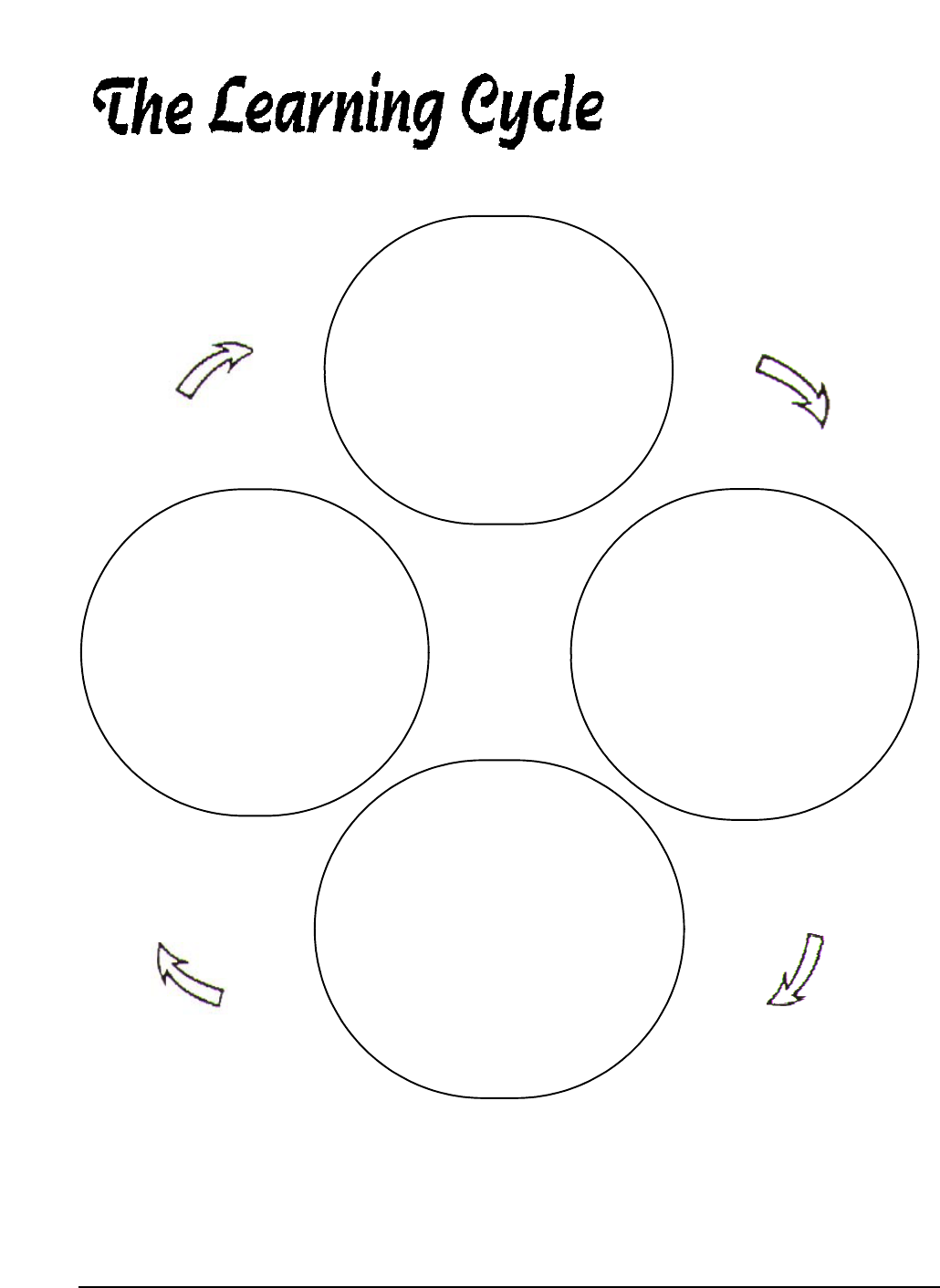
Participant Manual
2-5
Experiencing
Applying
Now What?
Analyzing
So What?
Reflecting
What?
From “The Trainer Type
Inventory: Identifying
Training Style Preferences”,
Mardy Wheeler and Jeanie
Marshall, The 1986 Annual:
Developing Human Resources,
p.87
From "The Trainer Type Inventory: Identifying Training Style Preferences", Mardy Wheeler and Jeanie Marshall,
The 1986 Annual: Developing Human Resources, p.87
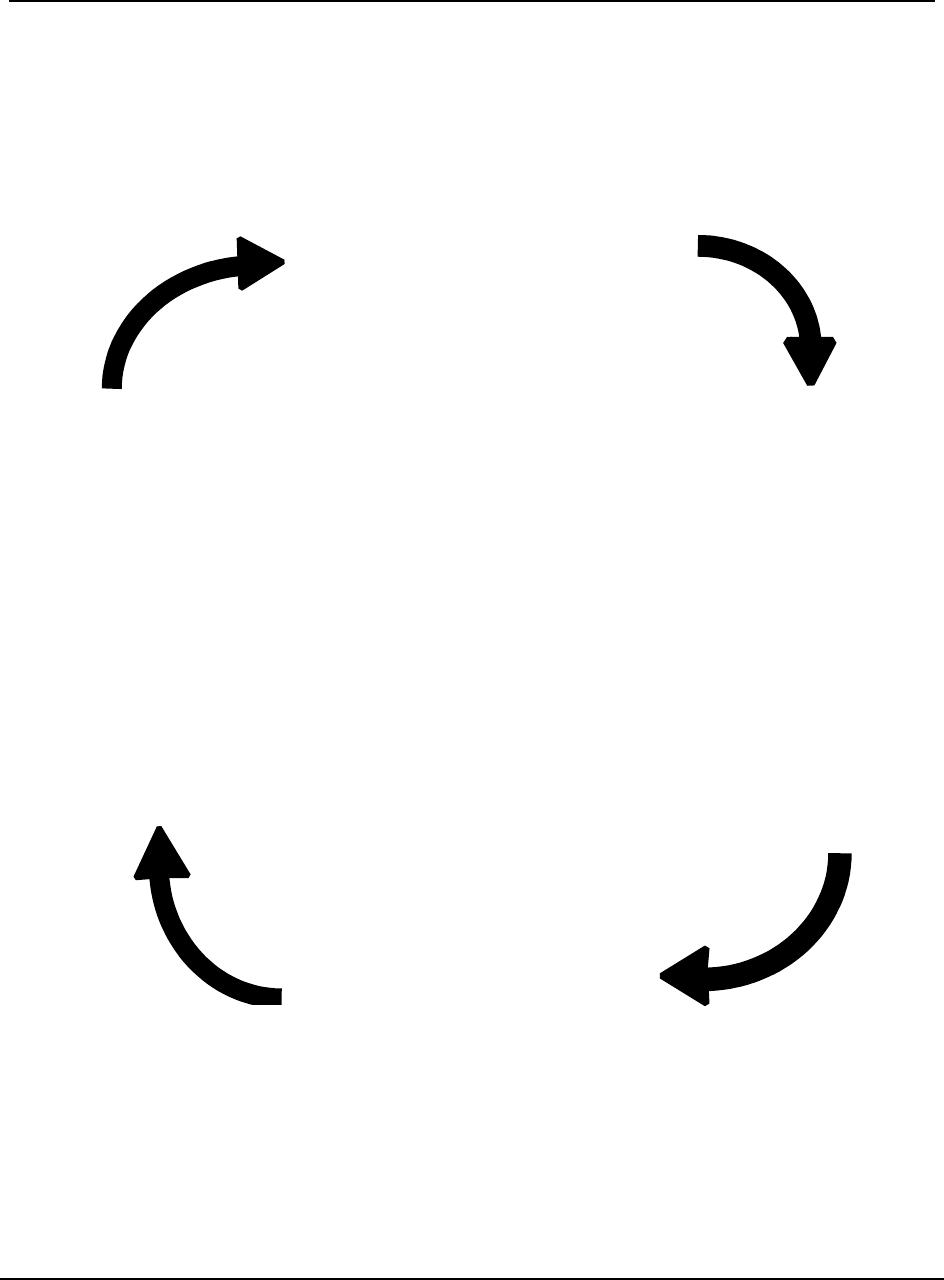
Participant Manual
2-6
The Learning Cycle
Ñ
Applying
Why is it important to
experiment and apply
new ideas?
_______________
_______________
_______________
_______________
_______________
â Experiencing
Why is first-hand
experience important?
_______________
_______________
_______________
_______________
_______________
Ð Analyzing
Why is analysis
important?
_______________
_______________
_______________
_______________
_______________
Ï Reflecting
Why is reflection
important?
____________________
_______________
_______________
_______________
_______________
___________

Participant Manual
2-7
Question Starters
Reflection:
• What did you see? Hear?
• Have you . . . ?
• When . . . ?
• Where . . . ?
• How did you . . . ?
• What happened when you . . . ?
• How did you feel
when . . . ?
•
What was it like to . . .?
•
•
•
Analysis:
• What did you learn from . . . ?
• What was most interesting
/valuable about . . . ?
• What stands out . . . ?
• Why do you think . . . ?
• What does this mean about . . . ?
• How does this compare/contrast to . . . ?
• How does this fit with your perspective (previous ideas) . . . ?
•
•
•
Application:
• How can you use . . . in your work?
• How could this affect
you . . . ?
• What might your
clients . . . ?
• What might help or hinder your using this . . . ?
•
•
•

Participant Manual
2-8
Orchestra Name Game
Objective:
Participants will learn one another’s names by participating in a memory game.
Teaching Points:
• Trying new behaviors can feel awkward and silly.
• Change involves risk-taking.
• Getting to know each other is the first step in building trust.

Participant Manual
2-9
Guidelines for Using Process Questions
in Your Training Design
1. For an experiential activity (role play, case study, game, simulation, etc.),
processing time should be equal to
or more than the time spent doing the
activity.
2. Processing questions (Reflection, Analysis, Application) should be planned
carefully, written into the design, and examples or desired responses noted for
facilitator reference.
3. Each activity should be written to clearly note “teaching points” (the learnings
to be drawn from the activity and questions should lead to these learnings).
4. Each time you conduct an activity, note any unexpected events or outcomes
and ways you handled them. Also note new process questions to ask at future
trainings.
5. A training design is a “living document.” It may need changes or refinements
each time you use it. Take yourself through the Learning Cycle to Reflect on,
Analyze and Apply your learnings to using this design.

Participant Manual
2-10
How We Process Learning: Reflection Guide
What insights did you get about your facilitation skills?
What implications does this have for your facilitation practices?
What might you take from this activity that would be useful to your work?
Other comments.

Time Required:
Summary and Rationale:
Performance Objectives:
Equipment:
Module 3
Series: GROUP FACILITATION SKILLS
Curriculum: FACILITATION SKILLS FOR TRAINERS
Module: CRITICAL ELEMENT #2: Predicting and
Accommodating Learner Behavior
40 Minutes
The purpose of this module is to help participants learn to predict possible learner
behaviors and accommodate them appropriately.
Participants will:
1. identify methods for predicting possible learner behavior in training.
2. practice developing strategies that accommodate learner needs and behaviors.
• Easel Stand with Flip Chart Pad
• Overhead Projector and Projector Screen

Materials:
Participant Manual:
• Participant Manual
3-1 Performance Objectives
3-2 New Fitness Testing Standards - Case Study
3-3 Preventing HIV - Case Study
3-4 Predicting and Accommodating Learner Behavior: Reflection Guide
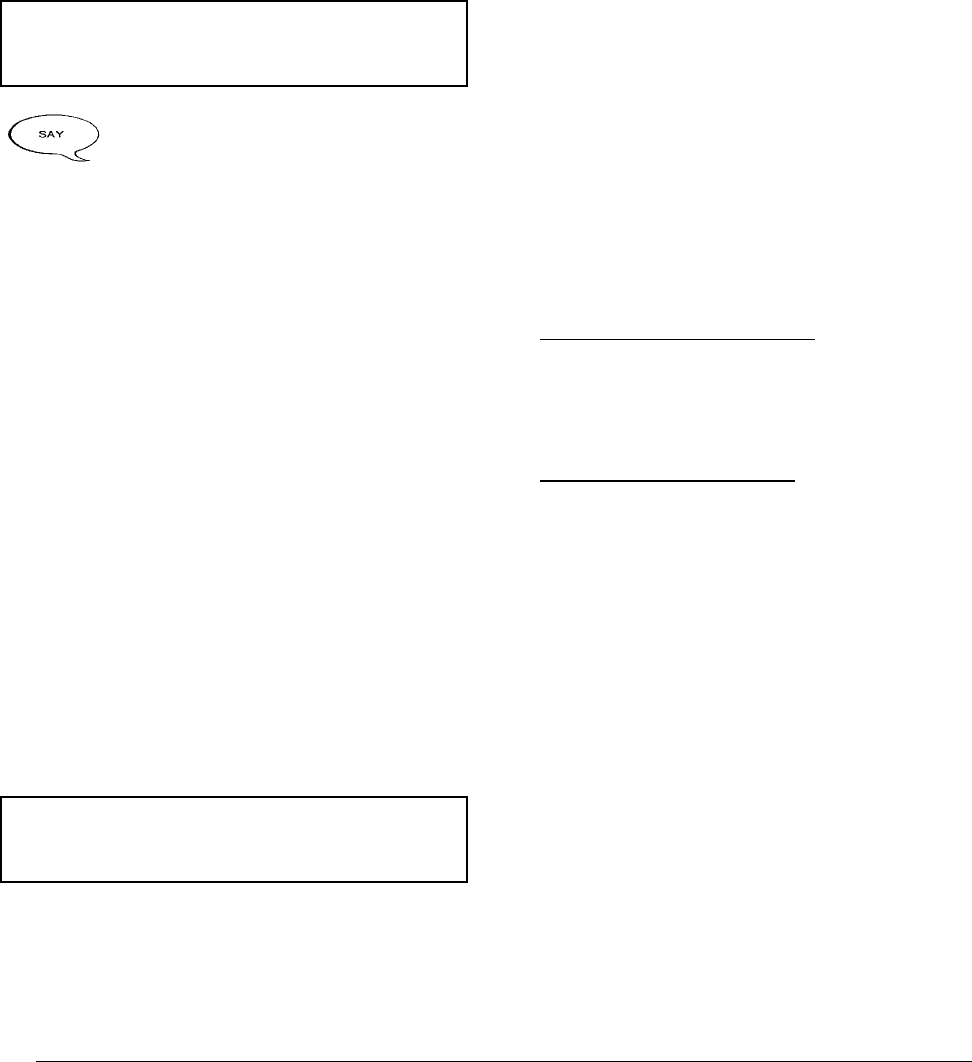
National Institute of Corrections Facilitation Skills for Trainers
(Rev. 5/99) Critical Element #2
3-1
ANTICIPATORY SET
Approx. 5 Minutes
INPUT AND GUIDED PRACTICE
Approx. 30 Minutes
3. Critical Element #2: Predicting and
Accommodating Learner Behavior
CONTENT REFERENCE
The more skilled trainers
become at predicting
participant behavior and the
results of their own behavior, the
better able they are to make effective
choices about facilitation.
Let’s do a bit of predicting.
How will participants react if I go
outside the room and come back with
a clown outfit on?
Responses may include
: some might
laugh, think I am strange and not take me
seriously.
How will participants react if I turned
off the lights?
Responses may include: some might get
up to turn them on, complain, ask why, sit
and wait to see if I had some plan in
mind, expect a movie.
There are many behaviors and
reactions you can predict in training
based on what you know about how
adult’s learn, your own experiences at
work and your own experiences as a
learner.
We know that people’s behavior in
training is influenced by their
background and experience, their job
role and the organizational climate.

National Institute of Corrections Facilitation Skills for Trainers
(Rev. 5/99) Critical Element #2
3-2
These factors will influence their
readiness and resistance to your
training content or approach.
What kinds of training have you seen
employees resist and why?
Responses may include: policy they
don’t agree with, content they are
intimidated by, change in how things are
done, when they are forced and unhappy
in general.
What kinds of training have you seen
them go to eagerly and why?
Responses may include
: training they
helped to plan, topics they have asked
for, topics that solve an immediate
problem.
What strategies have you used to
predict or anticipate trainee behavior
and attitudes?
Responses may include
: focus groups,
supervise interview, record interview,
discussion with other trainers.
Sometimes we can predict the
behaviors we are likely to see, and can
do things to prevent problem behavior
or to accommodate the issues. While
we can’t predict all reactions to
training, there are facilitation
techniques to use when issues arise.
Based on the information we have
covered, the behavior you have
observed of the trainers in this
training and your own experience, use
your prediction skills as well as
facilitation techniques to respond to
the Predicting and Accommodating
Learner Behavior Case Studies. Participant Manual p. 3-2 & 3-3
Assign each table one of the two case
studies:
1)C.O. fitness testing and new standards
2)Preventing HIV and Communicable
Disease transmission within the inmate
population.

National Institute of Corrections Facilitation Skills for Trainers
(Rev. 5/99) Critical Element #2
3-3
CLOSURE
Approx. 5 Minutes
Be as specific as possible in what you
would do or say when you respond to
the questions. Don’t just say “Climate
Setting.” How would you set a climate
for positive participation in this
situation?
Give them 15 minutes to complete the
questions as a group.
Note: For case #1 divide the reporting
between the two small groups assigned to
that case: have the first group report out
on question 1 (parts a, b and c), have the
second group report out on questions 2
and 3. Repeat the same process for case
#2.
Ask each table to report out. Have the
other tables who did not work on that
particular case refer to the participant
manual to take notes if they wish. After
each table report, ask the whole group for
additional ideas about questions that a
trainer could ask to accommodate
participant issues.
Participant Manual
Take a few moments and jot down some
notes on how you will use this information
on Predicting and Accommodating
Learner Behavior: Reflection Guide.
Participant Manual p. 3-4
LUNCH 60 minutes
Facilitators make group and task
assignments for Day Two and prepare
“Goals” newsprint, lists, and Day Two
presentation schedule.

Module 3
Critical Element #2
Predicting and Accommodating Learner
Behavior
Training Supplements:
• Participant Manual
3-1 Performance Objectives
3-2 New Fitness Testing Standards - Case Study
3-3 Preventing HIV - Case Study
3-4 Predicting and Accommodating Learner
Behavior: Reflection Guide

Participant Manual
3-1
NATIONAL INSTITUTE OF CORRECTIONS
NATIONAL INSTITUTE OF CORRECTIONS ACADEMY
FACILITATION SKILLS FOR TRAINERS
Module 3 -Critical Element #2: Predicting and Accommodating Learner
Behavior
Given the material in this seminar, participants will:
• identify methods for predicting possible learner behavior
in training.
• practice developing strategies that accommodate learner
needs and behaviors.

Participant Manual
3-2
Predicting and Accommodating Learner Behavior
Supervisors/CO’s and New Fitness Testing Standards Case Study
You are asked to provide training to supervisors and correctional officers on new fitness testing
standards for all non-civilian personnel. There is already a concern about veteran staff not meeting
current fitness standards; some instructors allow officers to pass without full compliance. The new
standards are more rigorous and there is a monitoring component built into the new policy.
1. What can you predict about:
• Concerns / issues:
• Behaviors that will be exhibited:
• How can you check out your predictions?
2. What can you do to accommodate concerns?
3. What can you do to prevent problem behaviors?

Participant Manual
3-3
Predicting and Accommodating Learner Behavior
Preventing HIV and Communicable Disease Transmission within the Inmate
Population
You are assigned to provide training to all employees on preventing the transmission of
communicable diseases. The employees are conservative and opinionated about HIV. In addition
there have been requests to have all HIV, Hepatitis and TB infected inmates moved to another
facility “better equipped” to provide medical services and isolation housing.
1. What can you predict about:
• Concerns / issues:
• Behaviors that will be exhibited:
• How can you check out your predictions?
2. What can you do to accommodate concerns?
3. What can you do to prevent problem behaviors?

Participant Manual
3-4
Predicting and Accommodating Learner Behavior:
Reflection Guide
What insights did you get about your facilitation skills?
What implications does this have for your facilitation practices?
How will you use these strategies?
Other comments.
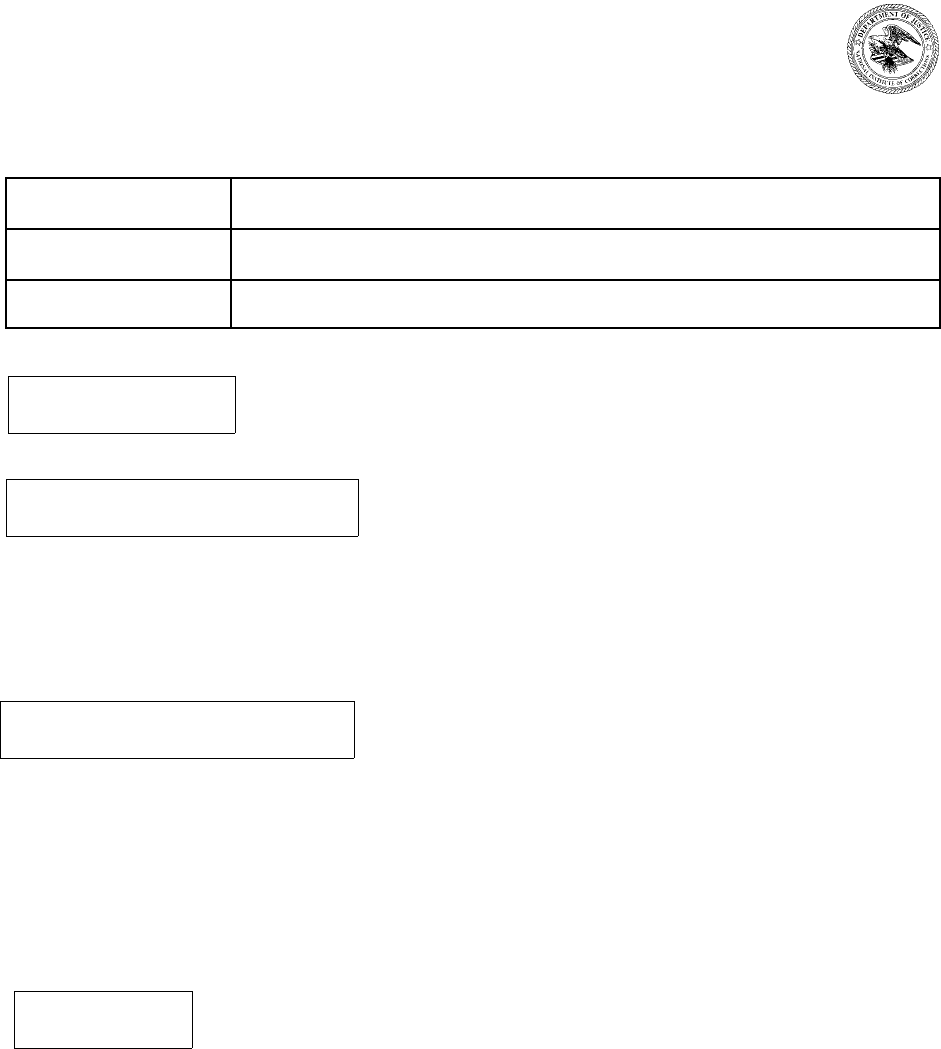
Time Required:
Summary and Rationale:
Performance Objectives:
Equipment:
Module 4
Series: GROUP FACILITATION SKILLS
Curriculum: FACILITATION SKILLS FOR TRAINERS
Module: CRITICAL ELEMENT #3: Setting the Climate
30 Minutes
The purpose of this module is to identify steps and activities trainers can use to set a
climate for learning.
Participants will:
1. identify issues learners may have.
2. identify what a facilitator can do to respond to learner issues and set an effective
climate for learning.
• Easel Stand with Flip Chart Pad
• Overhead Projector and Projector Screen

Materials:
Overhead:
Participant Manual:
• Participant Manual
•Markers
• Masking Tape
• Alphabet card set
OH #11, Why Do We Need Ground Rules?
OH #12, Areas for Ground Rules
4-1 Performance Objectives
4-2 Why Do We Need Ground Rules
4-3 Areas for Ground Rules
4-4 Setting the Climate - Reflection Guide

National Institute of Corrections Facilitation Skills for Trainers
(Rev. 5/99) Critical Element #2
4-1
ANTICIPATORY SET
Approx. 5 Minutes
4. Critical Element #3: Setting the
Climate
CONTENT REFERENCE
Even when people look
forward to training there are
concerns they have when they
walk in the door. Look back on how
we began our day.
Ask them: What do people seek in a
learning climate?
Note: Trainer should put responses on
newsprint and ground rules/norms should
still be posted.
Note: Questions to look for are:
How will it affect me?
Who are the other participants?
Who are the trainers?
What will be expected?
What activities?
Will there be a test?
Will I learn anything?
Will I be embarrassed?
Will I get POST credit?
Will there be snacks?

National Institute of Corrections Facilitation Skills for Trainers
(Rev. 5/99) Critical Element #2
4-2
INPUT AND GUIDED PRACTICE
Approx. 20 Minutes
Hand out small cards with letters of the
alphabet. You want to form trios, therefore
make as many different letters as the
number of trios you want to form, with
three of each letter.
Alphabet cards
Note: This activity can be done as a large
group brainstorm to save time.
I am giving you each a card with a
letter of the alphabet written on it. I
want you to think of a word that begins
with that letter. Once you have thought
of the word I want you to find the other
people in the room who have words
that start with the same letter of the
alphabet. Once you have found your
group, select a place to work together
on the next assignment. You will need
your books.
I want each small group to brainstorm
for 5 minutes and record a list of ideas
responding to the question: What can
a facilitator do to establish a positive
climate for learning?
Answers should include
: participant
introductions in order for people to feel
included and heard in the group, setting
ground rules, explain the difference
between ground rules and norms- norms
develop whether you set explicit rules or
not.
Have the small groups report out in round
robin style, each group giving a new
response each round until all groups have
run out of ideas.
Note: Trainer should put responses on
newsprint.
Note: Responses to look for are:
Introduce self
Answer questions (POST credit, test,
schedule, housekeeping)

National Institute of Corrections Facilitation Skills for Trainers
(Rev. 5/99) Critical Element #2
4-3
Make sure class is comfortable
Set ground rules
Expectations and behavior activities
Participant letter ahead
Students introduction - experience and
interests
Bond with students - meet and greet
Mutual respect
Clear agenda
Let group know objectives
Lodging and travel arrangements
Solicit and answer questions
Reinforce answers and questions
Use participant names
Signs to location
Gain attention - activity?
Smile
Be flexible
“Modeling” for an opening
Snacks, candy
Can someone give me a definition of
“ground rules?”
Responses may include: the standards of
behaviors by which we agree to operate
while we are in the group (or some
response that means this).
Why do you think groups need Ground
Rules?
Responses may include: to create a safe
environment; to encourage risk-taking,
which produces greater learning; to
enable the group to be productive; and to
ensure that the group functions
effectively.
Display overhead transparency #11,
Why Do We Need Ground Rules?
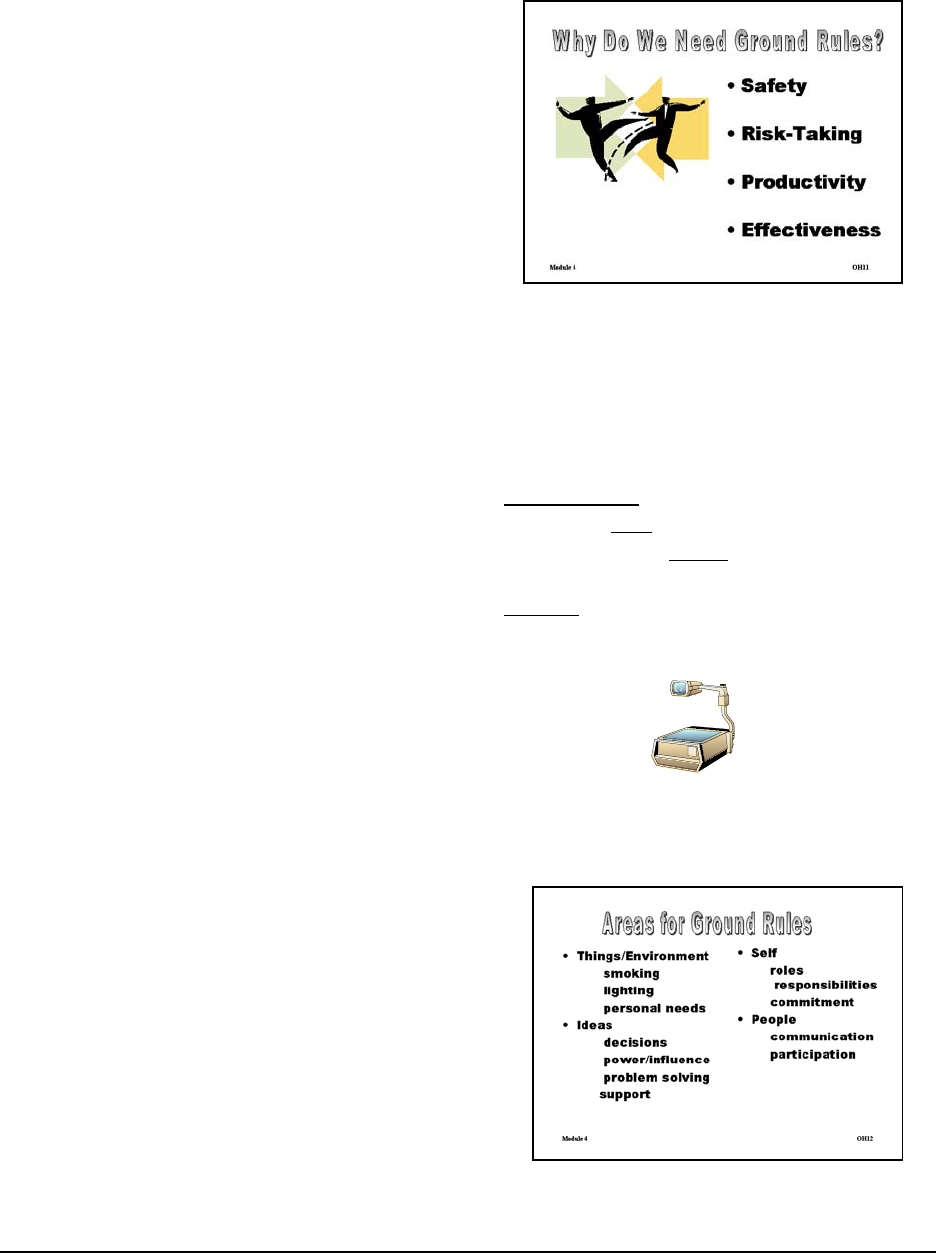
National Institute of Corrections Facilitation Skills for Trainers
(Rev. 5/99) Critical Element #2
4-4
Participant Manual p. 4-2
Let’s look at some areas around which
norms or ground rules need to be
considered.
Refer to the Ground Rules set by this
group.
Draw out responses. Environment (smoking, lighting, personal
needs), Self (roles, responsibilities,
commitment), Ideas (decision-making,
power/influence, problem-solving), &
People (communication, participation,
support, conflict).
Display overhead transparency #12,
Areas for Ground Rules.
Participant Manual p.4-3

National Institute of Corrections Facilitation Skills for Trainers
(Rev. 5/99) Critical Element #2
4-5
CLOSURE
Approx. 5 Minutes
Setting the Climate involves more than
recording and discussing
expectations, it is more than
establishing ground rules. It involves
activities before, at the start of training
and the manner in which you conduct
those activities. How can you
“conduct” these activities to facilitate
learning?
Summarize by explaining that climate
setting happens throughout the learning
experience, just as temperatures go up
and down during an given day and a
thermostat needs to be reset, group
dynamics vary and need to monitored and
managed. Effective “facilitation” of
learning throughout your session will
contribute to maintaining and
appropriately adjusting the climate in the
group.
What behaviors would you look for as
you monitor the “emotional
environment” in the training
classroom?
Responses may include: tension, tone,
withdrawal, side conversations, argument
Therefore, by establishing a climate
conducive to learning the facilitator
begins
the management of the
emotional environment by
encouraging and supporting personal
responsibility, openness to input,
feedback and change.
Take a few moments and jot some
notes on how you will use this
information on Setting the Climate:
Reflection Guide.
Participant Manual p. 4-4

Module 4
Critical Element #3
Setting the Climate
Training Supplements:
• Overhead Transparencies
OH#11 Why Do We Need Ground Rules?
OH#12 Areas for Ground Rules
• Participant Manual
4-1 Performance Objectives
4-2 Why Do We Need Ground Rules
4-3 Areas for Ground Rules
4-4 Setting the Climate - Reflection Guide
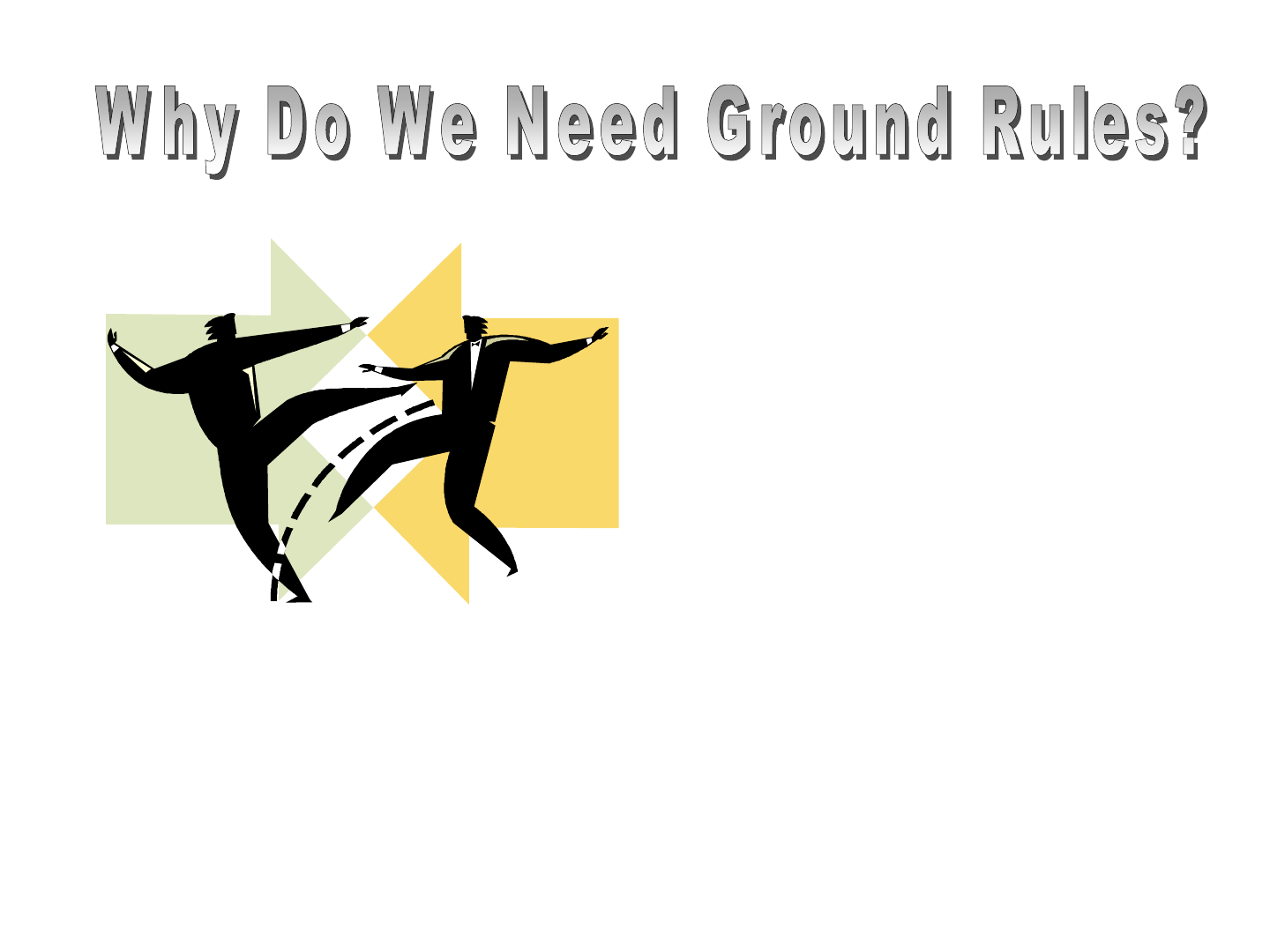
• Safety
• Risk-Taking
• Productivity
• Effectiveness
Module 4 OH11
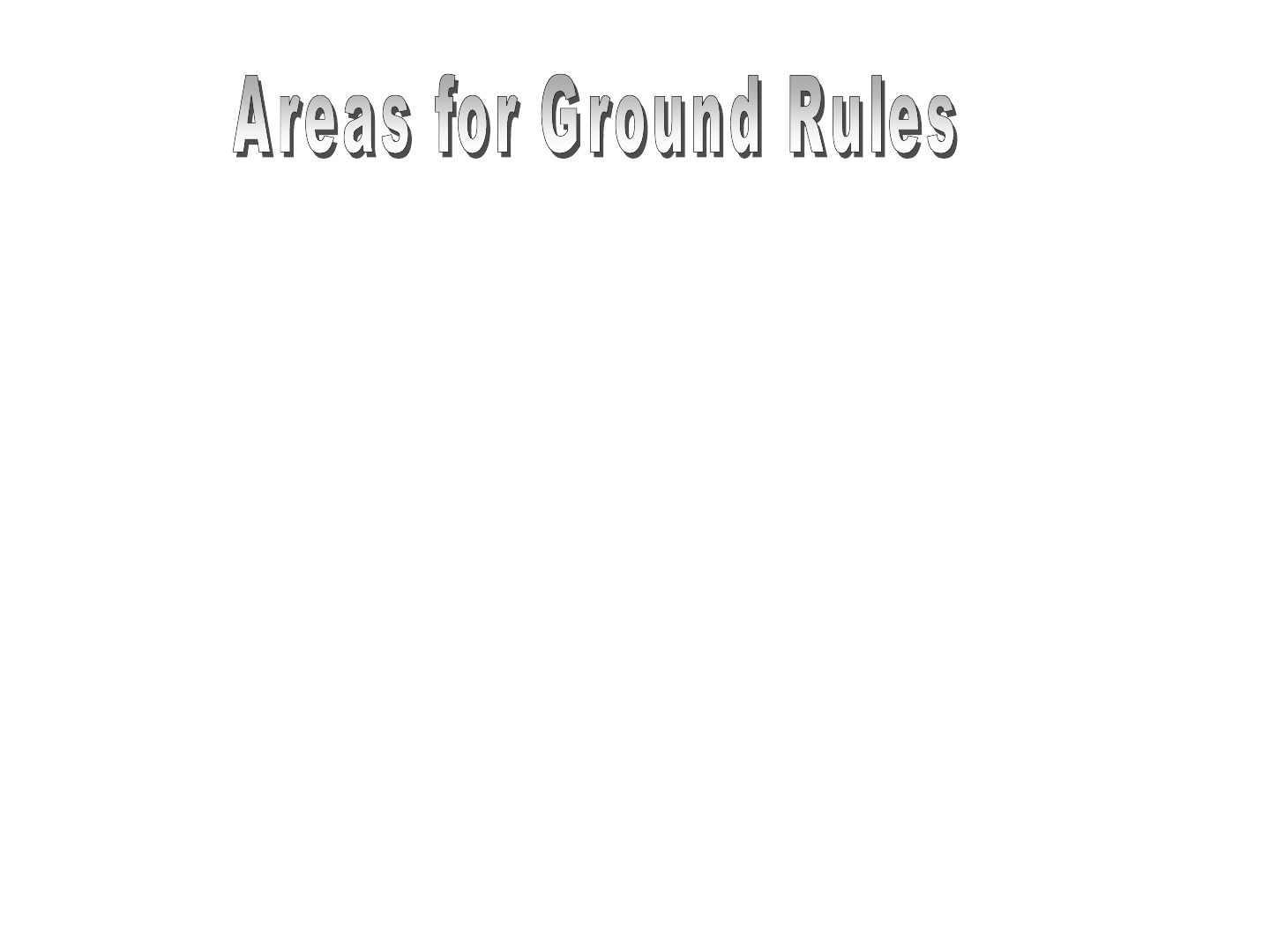
• Things/Environment
smoking
lighting
personal needs
• Ideas
decisions
power/influence
problem solving
support
•Self
roles
responsibilities
commitment
• People
communication
participation
Module 4 OH12

Participant Manual
4-1
NATIONAL INSTITUTE OF CORRECTIONS
NATIONAL INSTITUTE OF CORRECTIONS ACADEMY
FACILITATION SKILLS FOR TRAINERS
Module 4 - Critical Element #3: Setting the Climate
Given the material in this seminar, participants will:
• identify issues Learners may have.
• identify what a facilitator can do to respond to learner
issues and set an effective climate for learning.

Participant Manual 4-2
Why Do We Need Ground Rules?
U
Safety
URisk-Taking
UProductivity
UEffectiveness

Participant Manual 4-3
Areas for Ground Rules
Things/Environment
smoking
lighting
personal needs
Self
roles
responsibilities
commitment
Ideas
decisions
power/influence
problem solving
People
communication
participation
support

Participant Manual 4-4
Setting the Climate: Reflection Guide
What insights did you get about your facilitation skills?
What implications does this have for your facilitation practices?
How will you use these strategies?
Other comments.
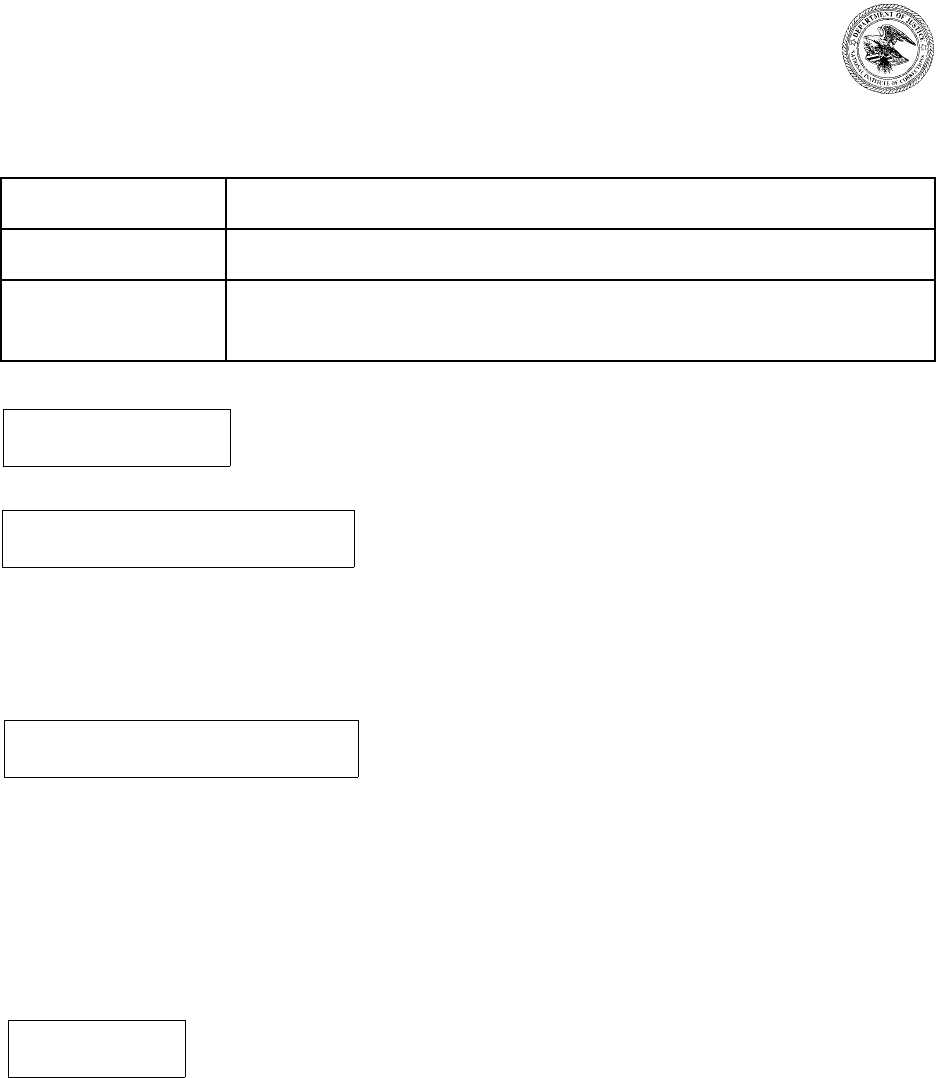
Time Required:
Summary and Rationale:
Performance Objectives:
Equipment:
Module 5
Series: GROUP FACILITATION SKILLS
Curriculum: FACILITATION SKILLS FOR TRAINERS
Module: CRITICAL ELEMENT # 4- Utilizing Facilitation
Strategies for Learning
1 Hour 5 Minutes (includes 10 minute break)
The purpose of this module is to demonstrate and/or discuss a variety of learning
activities trainers can use to enhance learning.
Participants will:
1. discuss and take part in a series of strategy demonstrations that can be used to
enhance learning.
2. select strategies they will use as facilitators.
• Easel Stand with Flip Chart Pad
• Overhead Projector and Projector Screen

Materials:
Participant Manual:
• Participant Manual
• 2 - 8.5 x 11 signs: I Love Facilitating & Facilitating is Handwork
5-1 Performance Objectives
5-2 to 5-6 Group Processes that Facilitate Participation

National Institute of Corrections Facilitation Skills for Trainers
(Rev. 5/99) Critical Element #4
5-1
ANTICIPATORY SET
Approx. 5 Minutes
5. Critical Element #4: Utilizing Facilitation
Strategies for Learning
CONTENT REFERENCE
How many of you learn best by watching
someone else do something, then
imitating the skill? How many prefer to
get new information from a book rather
than a person?
You will recall that there are many
different learning styles (for example,
people who prefer to observe and
analyze before they try new things,
experimenters, people who want to know
the theory behind WHY things are done
a particular way, etc.). Facilitation
strategies are techniques for increasing
the probability of effective learning for
training participants. We will be
presenting a number of techniques that
help people participate, process
information and try out new skills in their
preferred ways. Using a variety of these
techniques as you design training, or
being able to use them on the spot when
you recognize that some people are not
with you, will increase the likelihood that
all participants will get something of
value from the training.

National Institute of Corrections Facilitation Skills for Trainers
(Rev. 5/99) Critical Element #4
5-2
INPUT AND GUIDED PRACTICE
We have divided the facilitation
strategies into two groups - the first
group is learning strategies that can be
used in any kind of activity, and the
second group is learning strategies that
can be used in conflict situations -- either
activities that intentionally create conflict
or when conflict just comes up in the
group.
GROUP PROCESSES THAT FACILITATE PARTICIPATION
Have participants turn to Group
Processes that Facilitate Participation.
Point out the "Notes" section after each
item. These are intended for them to use
to record points from the discussion of
each item.
Participant Manual p. 5-1 through 5-5
Introduce the first section of page 5-2:
INDIVIDUAL TECHNIQUES - Help the
individual become personally involved in
the learning.
Participant Manual p. 5-2
Read the first item:
1. Individual Written Responses - Giving
time for individuals to write responses to
questions or prompts before conducting
a group discussion.
Participant Manual p. 5-2
Demonstration: Have them take a minute
or two to write in the "Notes" space below
that item one or more advantages to
giving people time to write out answers to
a question before they respond out loud.
Then have people share their responses.
Responses should include: allows for
those who need time to compose their
thoughts; reduces "peer pressure" to go
along with first response given; improves
quality of responses; allows the facilitator
to ask for responses from those who
haven't participated a great deal without
putting them on the spot, etc.

National Institute of Corrections Facilitation Skills for Trainers
(Rev. 5/99) Critical Element #4
5-3
Ask them: When might you use this
strategy?
Responses should include
: when you
want people to consider their personal
response to a question rather than just
accept the responses of the most vocal
members of the group. Tell the group
that this strategy can be used to have
individuals respond to an assignment like
a case study before they discuss the
case in a small group.
Read item 2:
2. Note-Taking Guides - Structured
pages that give major headings (for
example, "Three Steps for Improving
Communication") and leave space for the
participant to fill in the correct
information.
Participant Manual 5-2
Point out that the page they are looking
at is one kind of Note-Taking Guide. Ask
the group to list the advantages to using
such a Guide.
Responses should include: makes people
pay better attention to what is being
presented; helps identify the main points
of a lecture; keeps the presenter on track;
allows for Checking for Understanding
after a presentation- "Who can tell me the
three steps to better communication?"
When might you use this strategy?
Responses should include
: when you
have a lot of information to convey; when
you want the participants to remember
specific content.
Read item 3:
3. Reflective Writing - Giving individuals
time to record their thoughts in response
to instructional input, specific questions or
prompts. Reflective writing can have a
single theme (for example, personal
reactions to the content) or be used
several different ways in one seminar.
Participant Manual p. 5-2

National Institute of Corrections Facilitation Skills for Trainers
(Rev. 5/99) Critical Element #4
5-4
What purposes have the Reflective
Writing served for you in this
seminar? (for example: Facilitator As
Conductor on page 2-2)
Participant Manual p. 2-2
Responses should include: noting
personal reactions and feelings;
recording personal understandings or
insights into the material; planning for use
of new learnings; etc.
Ask the group to suggest other ways they
have used (or could use) this method.
Read item 4:
4. Visualization
- Having participants
picture or imagine a situation vividly
enough to be able to discuss personal
responses and feelings.
Demonstrate: Ask the participants to get
in a comfortable position and close their
eyes. Ask them to recall a time when
they were facilitating a training session
and something unexpected happened --
something that took them by surprise or
caught them off guard. It can be
something positive or something that was
a challenge for them. Have them try to
recall what happened in as much detail
as they can, then recall their thoughts
and feelings at that moment. (Pause
while they recall these things.) Now have
them recall what they did in response to
the situation. (Pause.) And finally, how
their response worked. (Pause.) Tell
them to open their eyes when they have
completed their visualization of the
situation.
When everyone has opened their eyes,
ask for one or two volunteers to share
their situations. Ask each volunteer if
they were able to picture the situation
vividly. And if they were able to feel
some of what they felt at that moment.
Participant Manual p. 5-2
Participant Manual p. 5-2

National Institute of Corrections Facilitation Skills for Trainers
(Rev. 5/99) Critical Element #4
5-5
Now ask the group to suggest some uses
of visualization
Responses should include: when you
want participants to recall feelings that
help them identify motivation for learning
new behaviors or attitudes.
Read item 5:
5. Personal Action Plan - Having
participants complete a written plan for
using the new learnings they have gotten
from the training.
Participant Manual p. 5-3
(Refer to end of training)
Read item 6:
6. Other Individual Techniques - Ask
group members to suggest other
techniques they have used for individual
learning enhancement.
Participant Manual p. 5-3
Break 10 minutes Note: Ask 3 participants to be part of
role-play on disruptive behavior for
Dealing with Conflicts in Groups - Part I
of design. Give each “disruptive
participant” a card with their assigned
behavior. Tell them not tolet others know
that they are part of a demonstration
(behaviors on page 6-1 through 6-3 of
this design).
SMALL GROUP TECHNIQUES -
Increase participation by limiting the
number of people to interact with.
Participant Manual p. 5-3
Read item 1:
1. Rotating roles - Recorder, process
observer, spokesperson and other roles
in small group activities can be shifted in
the group so that each person takes an
active role. Participant Manual p. 5-3

National Institute of Corrections Facilitation Skills for Trainers
(Rev. 5/99) Critical Element #4
5-6
Read item 2:
2. Group Position-Taking - Small groups
are asked to come to consensus on a
position in response to a question from
the facilitator. Then spokespersons
defend the group's position and debate
with other groups. This technique can
also be used to provide feedback to the
facilitators in a training program.
Participant Manual p. 5-3
What kinds of content might this be
useful for?
Responses may include: examining two
sides or more of an issue, e.g.
determinate sentencing, capital
punishment, “good time,” policy
proposals.
Read item 3:
3. Situation Challenge - Small groups
can be asked to develop case study or
role play situations, based on their
combined experience, for other groups to
respond to.
Participant Manual p. 5-4
Notes: Good for experienced people.
Communication, behavior management,
supervisory training, etc. Set parameters,
give structure (characters, setting,
situation) and vie a sample/model.
Read item 4:
4. Categorizing Ideas - Single ideas,
tasks, steps or other items are written on
index cards, Post-It Notes, or other
paper. Then the group can organize
them in different ways on a table or wall
until consensus is reached on the optimal
categorization or organization.
Participant Manual p. 5-4
Index cards, paper or Post-It Notes
Notes: Trainer must give clear
instructions. (E.g. for task analysis.)
Read item 5:
5. Station Crawl
- Each small group
begins at a different learning station and
completes an assignment, then groups
rotate until all groups have visited each
station.
Participant Manual p. 5-4
Notes: Post newsprint questions, groups

National Institute of Corrections Facilitation Skills for Trainers
(Rev. 5/99) Critical Element #4
5-7
move every few minutes. Give clear
instructions. (e.g. gathering evidence,
investigations)
Read item 6:
6. Dyad or Triad Sharing - Participants
share personal responses, action plans
or other material in two's or three's and
give one another feedback and/or
encouragement.
Participant Manual p. 5-4
Read item 7:
7. Other Small Group Techniques
Ask group members to suggest other
techniques they have used for small
group learning enhancement.
Participant Manual p. 5-4
Notes: Issues to consider: Do they
have enough information to work on
their own? Structure is vital.
HOLE GROUP TECHNIQUES - Help all
members of a large group participate;
maximize participant learning from other
member of the group.
Read item 1:
1. Round Robin - Having each
participant in turn give a response to a
prompt or question with many possible
answers, until a large number of
answers have been given.
Participant Manual, p. 5-5
Tell them that Expectations and Setting
the Climate were done this way.
Demonstrate: Write the following
prompt on newsprint: People who don't
speak in a training group... Now ask
each member of the group in turn to
give a response to the prompt. (Repeat responses are allowed.)

National Institute of Corrections Facilitation Skills for Trainers
(Rev. 5/99) Critical Element #4
5-8
Now ask for volunteers to identify the
advantages of Round Robin responses.
Responses should include: gives a
wider variety of ideas and thoughts;
involves all participants. Remind them
that we used this technique, along with
individual written responses, when we
collected their expectations for the
training this morning.
Read item 2:
2. Brainstorming - Having participants
call out responses to a prompt or
question (without comment from others)
until no one can think of another
response.
Participant Manual p. 5-5
Ask participants to recall activities in the
seminar in which we used brainstorming.
Responses should include: Ground
Rules; How is conducting an orchestra
like facilitating learning in a group?
Ask them to suggest advantages of group
brainstorming.
Responses should include: allows the
group to share what they already know;
brings out creativity; can provide
examples of what you are trying to
convey; etc. Limits?____
Read item 3:
3. Parking Lot - A bulletin board or sheet
of newsprint is designated for ideas and
issues that will be dealt with at a later
time (for example, brought up later in the
training or referred to an outside authority
for response).
Participant Manual p. 5-5
Read item 4:
4. Talking ball
- Using an object (ball,
marker, etc.) to signify who has the floor
to speak. Only the person with the object
may speak. The person with the object
passes it to someone else when he or
she is finished speaking.
Participant Manual p. 5-5
ball or other object
Notes: Pause time is different depending
on culture (e.g. Native American).
Sociogram - who talks to whom?

National Institute of Corrections Facilitation Skills for Trainers
(Rev. 5/99) Critical Element #4
5-9
Demonstrate: Use a ball to have
participants respond to the question:
What other techniques are there for
Managing communication? What
other ways are there to use the ball?
Read item 5:
5. Anonymous Response Exchange
-
Each person writes his/her own
responses to a prompt or question.
Responses are collected and
redistributed randomly. Participants read
the responses on the sheet they receive.
Demonstrate
: Have participants write “the
most difficult situation I ever had to
facilitate in training was. . .” (on index
cards). Pass them to trainer. Read a
few.
Participant Manual p. 5-6
index cards
Read item 6:
6. Human Continuum - Participants are
asked to physically take a position in a
line that represents where they stand on
an issue between two extremes (for
example, on a values or opinion
question).
Participant Manual p. 5-6
Demonstrate: Put two signs at opposite
ends of a wall: (“I Love Facilitating!” &
“Facilitating is hard work!”). Have
participants place themselves and
discuss!
81/2" x 11" signs: “I Love Facilitating!” &
“Facilitating is Hard Work"
Read item 7:
7. Forced Choice Position-Taking
- Like
Human Continuum above, but
participants move to one side of the room
or another ("Agree/Disagree" or
"Yes/No") each time you read a question
or item.

National Institute of Corrections Facilitation Skills for Trainers
(Rev. 5/99) Critical Element #4
5-10
CLOSURE
Approx. 5 Minutes
Read item 8:
8. Other Whole Group Techniques
-
Ask group members to suggest other
techniques they have used for whole
group learning enhancement.
Have participants write down (1-3)
several strategies they plan to use in
future trainings. Summarize by telling the
group there are a variety of creative and
simple ways of enhancing learning.
Trying one or two new ones periodically
can improve their facilitation.

Module 5
Critical Element #4
Utilizing Facilitation Strategies for Learning
Training Supplements:
• Participant Manual
5-1 Performance Objectives
5-2 to 5-6 Group Processes that Facilitate
Participation

Participant Manual
5-1
NATIONAL INSTITUTE OF CORRECTIONS
NATIONAL INSTITUTE OF CORRECTIONS ACADEMY
FACILITATION SKILLS FOR TRAINERS
Module 5 -Critical Element #4: Utilizing Facilitation Strategies for
Learning
Given the material in this seminar, participants will:
• discuss and take part in a series of strategy
demonstrations that can be used to enhance learning.
• select strategies they will use as facilitators.

Participant Manual
5-2
Group Processes that Facilitate Participation
INDIVIDUAL TECHNIQUES - Help the individual become personally involved in the
learning.
1. Individual Written Responses - Giving time for individuals to write responses to questions or
prompts before conducting a group discussion.
Notes: ____________________________________________________________________
___________________________________________________________________________
2. Note-Taking Guides - Structured pages that give major headings (for example, "Three Steps for
Improving Communication") and leave space for the participant to fill in the correct
information.
Notes: ____________________________________________________________________
___________________________________________________________________________
3. Reflective Writing - Giving individuals time to record their thoughts in response to instructional
input, specific questions or prompts. Reflective writing (e.g., learning journals) can have a
single theme (for example, personal reactions to the content) or be used several different ways in
one seminar.
Notes: ____________________________________________________________________
___________________________________________________________________________
4. Visualization
- Having participants picture or imagine a situation vividly enough to be able to
discuss personal responses and feelings.
Notes: ____________________________________________________________________
___________________________________________________________________________
5. Personal Action Plan - Having participants complete a written plan for using the new learnings
they have gotten from the training.

Participant Manual
5-3
Notes: ____________________________________________________________________
___________________________________________________________________________
6. Other Individual Techniques -
Notes: ____________________________________________________________________
___________________________________________________________________________
SMALL GROUP TECHNIQUES - Increase participation by limiting the number of people to
interact with.
1. Rotating roles - Recorder, process observer, spokesperson and other roles in small group
activities can be shifted in the group so that each person takes an active role.
Notes: ____________________________________________________________________
___________________________________________________________________________
2. Group Position-Taking - Small groups are asked to come to consensus on a position in
response to a question from the facilitator. Then spokespersons defend the group's position
and debate with other groups. This technique can also be used to provide feedback to the
facilitators in a training program.
Notes: ____________________________________________________________________
___________________________________________________________________________
3. Situation Challenge - Small groups can be asked to develop case study or role play situations,
based on their combined experience, for other groups to respond to.
Notes: ____________________________________________________________________
___________________________________________________________________________

Participant Manual
5-4
4. Categorizing Ideas - Single ideas, tasks, steps or other items are written on index cards, Post-It
Notes, or other paper. Then the group can organize them in different ways on a table or wall
until consensus is reached on the optimal categorization or organization.
Notes: ____________________________________________________________________
___________________________________________________________________________
5. Station Crawl - Each small group begins at a different learning station and completes an
assignment, then groups rotate until all groups have visited each station.
Notes: ____________________________________________________________________
___________________________________________________________________________
6. Dyad or Triad Sharing - Participants share personal responses, action plans or other material in
two's or three's and give one another feedback and/or encouragement.
Notes: ____________________________________________________________________
___________________________________________________________________________
7. Other Small Group Techniques -
Notes: ____________________________________________________________________
___________________________________________________________________________
WHOLE GROUP TECHNIQUES - Help all members of a large group participate; maximize
participant learning from other member of the group.
1. Round Robin - Having each participant in turn give a response to a prompt or question with
many possible answers, until a large number of answers have been given.
Notes: ____________________________________________________________________
___________________________________________________________________________

Participant Manual
5-5
2. Brainstorming - Having participants call out responses to a prompt or question (without
comment from others) until no one can think of another response.
Notes: ____________________________________________________________________
___________________________________________________________________________
3. Parking Lot - A bulletin board or sheet of newsprint is designated for ideas and issues that will
be dealt with at a later time (for example, brought up later in the training or referred to an
outside authority for response).
Notes: ____________________________________________________________________
___________________________________________________________________________
4. Talking ball - Using an object (ball, marker, etc.) to signify who has the floor to speak. Only
the person with the object may speak. The person with the object passes it to someone else
when he or she is finished speaking.
Notes: ____________________________________________________________________
___________________________________________________________________________
5. Anonymous Response Exchange - Each person writes his/her own responses to a prompt or
question. Responses are collected and redistributed randomly. Participants read the responses
on the sheet they receive.
Notes: ____________________________________________________________________
___________________________________________________________________________
6. Human Continuum
- Participants are asked to physically take a position in a line that
represents where they stand on an issue between two extremes (for example, on a values or
opinion question).
Notes: ____________________________________________________________________

Participant Manual
5-6
___________________________________________________________________________
7. Forced Choice Position-Taking - Like Human Continuum above, but participants move to one
side of the room or another ("Agree/Disagree" or "Yes/No") each time you read a question or
item.
Notes: ____________________________________________________________________
___________________________________________________________________________
8. Other Whole Group Techniques -
Notes: ____________________________________________________________________
___________________________________________________________________________
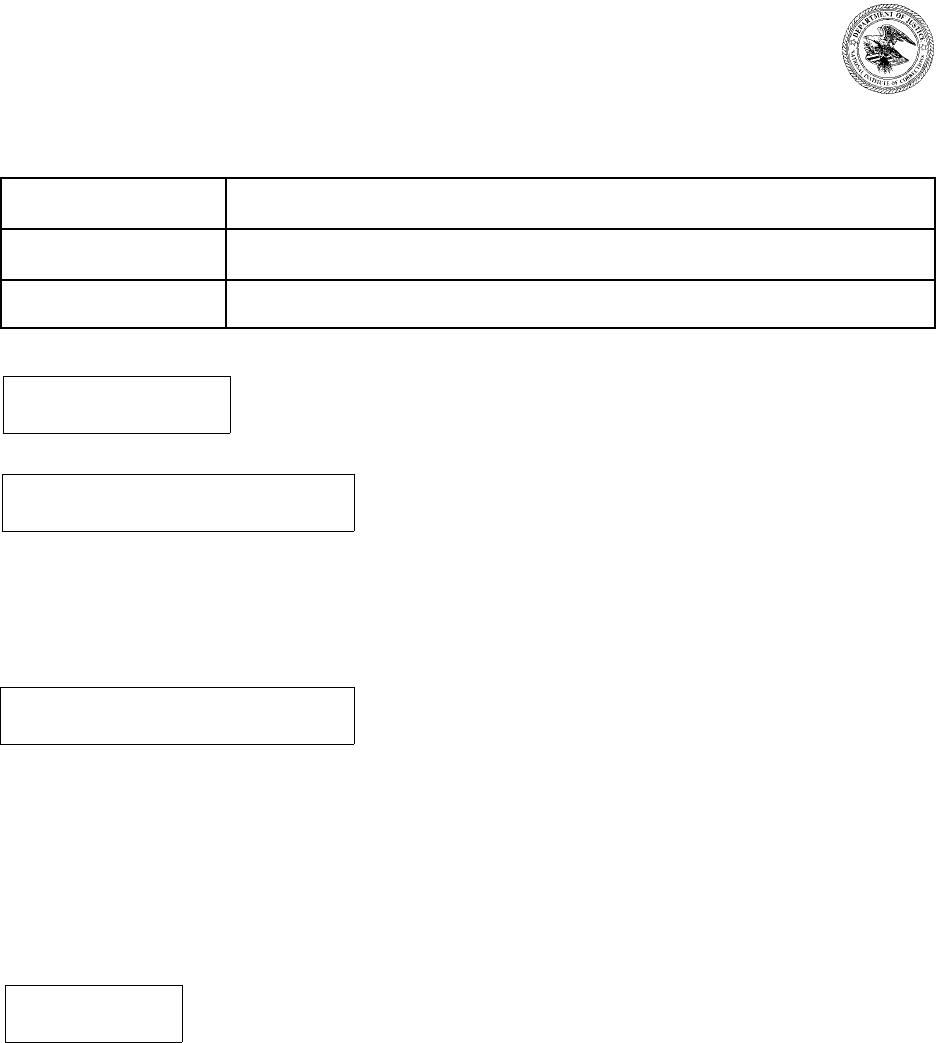
Time Required:
Summary and Rationale:
Performance Objectives:
Equipment:
Module 6
Series: GROUP FACILITATION SKILLS
Curriculum: FACILITATION SKILLS FOR TRAINERS
Module: DEALING WITH CONFLICTS IN GROUPS: Part 1
1 Hour 5 Minutes
The purpose of this module is to have participants apply a five-option model for
responding to disruptive behaviors.
Participants will:
1. use a continuum of strategies for dealing with disruptive participants to respond to
case study situations.
• Easel Stand with Flip Chart Pad

Materials:
Participant Manual:
Overheads:
• Participant Manual
6-1 Performance Objectives
6-2 Mental Checklist
6-3 Classifications of Options for Dealing with Disruptive Trainees
6-4 Situations of Disruptive Behavior
OH # 13, Options for Dealing with Disruptive Trainees

National Institute of Corrections Facilitation Skills for Trainers
(Rev. 5/99) Dealing with Conflicts in Groups: Part 1
6-1
ANTICIPATORY SET
Approx. 10 Minutes
6. Dealing With Conflicts in Groups:
Part 1
CONTENT REFERENCE
Role Play Set-up
Note: You should already have 3
participants (from break) to participate in
a structured role-play.
Using a structured role-play, three
volunteers and the instructor will
demonstrate several types of disruptive
behavior along with some pretty
common, yet ineffective means of
handling it.
Begin to give the class a lecture on
disruptive behavior in the classroom.
When participants come to
the classroom sometimes they have a
chip on their shoulder because they
don’t want to be there. Some people
just don’t like training. Sometimes
this leads to some problem behavior
that can really cause problems for you
if you let it get out of hand. You need
to stop this problem behavior before
it gets too bad. Remember, you’re in
charge.
Note: You might need to babble on a bit
longer here to get all the demonstrations
in.
Listed below are 3 suggestions for
selected “disrupters” in role-play.

National Institute of Corrections Facilitation Skills for Trainers
(Rev. 5/99) Dealing with Conflicts in Groups: Part 1
6-2
First disrupter: When I begin the
module on disruptive behavior, I’d like
you to play the part of a disruptive
participant by engaging one or more of
your group members in a side
conversation. This can have to do with
the program or something outside the
classroom. You can use a “prop” if you’d
like, something like a newspaper or a
magazine. Keep up this behavior until I
address it specifically.
Notes: When the disruptive behavior
begins (from your three participants),
handle it inappropriately. Here are some
suggestions:
• When the side conversation begins,
call the person’s name and ask, “Is
this something everyone needs to
hear? I really need you to stop talking
and pay attention.”
Second disrupter: When I begin the
module on disruptive behavior, I’d like
you to play the part of a disruptive
participant by reading a newspaper, filing
your nails, fixing your makeup, balancing
your checkbook, or something totally
unrelated to class. You will be
demonstrating withdrawal from
participation. Keep up the behavior until
I address it specifically.
• When the person is reading the
newspaper/filing nails, etc., go over
and take whatever the person is
working on and take it up to the front
of the class or call the person’s name
and tell them to put this up and pay
attention.
Third disrupter: After I’ve been
presenting the module on disruptive
behavior for a few minutes, I’d like for

National Institute of Corrections Facilitation Skills for Trainers
(Rev. 5/99) Dealing with Conflicts in Groups: Part 1
6-3
you to play the part of a disruptive
participant by disagreeing with what I’m
saying. Try to get me involved in an
argument. You might say something
like, “Well, I think you trainers treat us
like children, anyway. If we choose to
have side conversation or read the
newspaper, that’s our decision. I don’t
thing you should do anything about it.
Anyway, if the training was any good . . .
and besides, I disagree with what this
Department is doing . . . “ You get the
idea. Keep it up until I ask you to leave
the classroom.
• When the third participant begins to
argue with you, argue back. Then tell
him/her if they don’t like it, they can
leave, but to understand that you will
call their supervisor.
As soon as you ask this person to leave
the class, one of your co-presenters
should interrupt you saying, “Wait a
minute _____. I think we can do
something else here.” If you don’t have
a co-presenter, simply turn to the class
and say in a definitive voice, “STOP!”
How do you feel about the way I just
handled this disruptive behavior?
Responses may include
: intimidated,
embarrassed, mad, lost respect for
instructor.

National Institute of Corrections Facilitation Skills for Trainers
(Rev. 5/99) Dealing with Conflicts in Groups: Part 1
6-4
INPUT
Approx. 15 Minutes
There are three kinds of conflicts in
groups. First
, the individual who
exhibits problem behavior. Many of
you have had training on how to deal
with disruptive behaviors of
participants by examining the
reasons for their behavior and
determining the appropriate level of
intervention. As you know, trainer
preparation (knowing your audience)
and climate setting are the
foundation of prevention for this type
of problem.
Knowledge of the dynamics of group
behavior will help you plan and flex
to meet the group’s needs and thus
keep the group focused on the
learning goal. It will help you
understand some of the reasons for
the behavior changes and help you
decide when to intervene. There are
some situations, however, when even
the best prepared and the most
flexible trainer runs into some
problem participant behavior.
Before we review intervention
techniques for each of these problem
behaviors, I would like to share one
more prevention/intervention
strategy with you. What have you
noticed about the way this classroom
is set up? How do you think this
might prevent disruptive behavior?
Responses should include: The
classroom set-up helps the instructor
observe and make frequent eye-contact
with each participant. The tables are
set up to facilitate group sharing and
group work. The groups are small; the
tasks are specific and time-limited so
participants are actively involved. (You
might have to add some of these
responses as they might not suggest all
of these.)
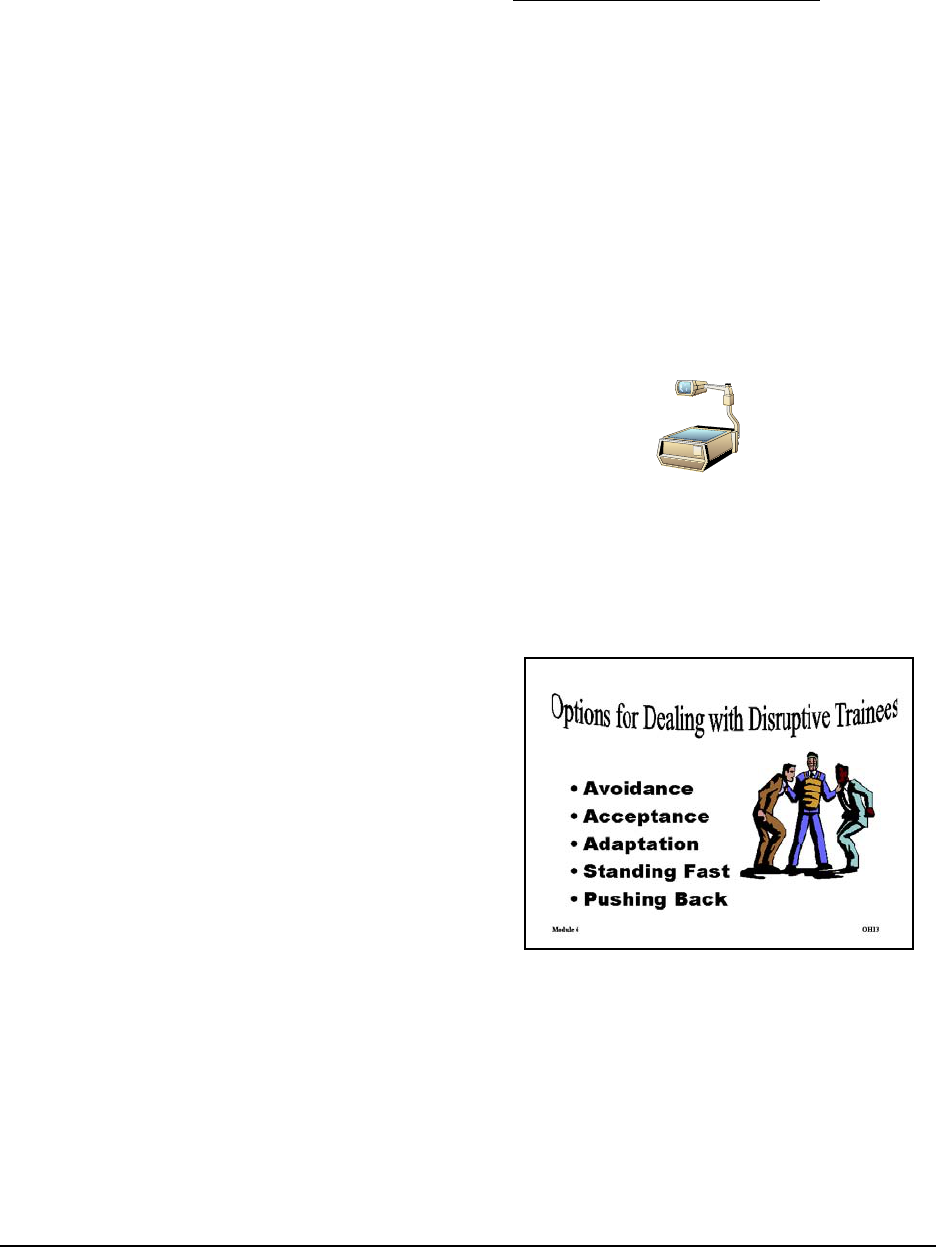
National Institute of Corrections Facilitation Skills for Trainers
(Rev. 5/99) Dealing with Conflicts in Groups: Part 1
6-5
Why is disruptive behavior more
likely when I set the class up in
rows?
Responses should include: All the
attention is focused on the instructor,
not the participants. The participants
are looking at each other’s backs. It’s
very easy for people to be uninvolved.
You can’t address them individually
unless you call their name (which you
are unlikely to know anyway in this type
of set-up).
Go over Mental Checklist in their
manual page 6-2.
Participant Manual p. 6-2
Display overhead transparency #13,
Options for Dealing with Disruptive
Trainees.
Refer participants to 5 Classifications
... Trainees page 6-3 for information
about a model to use when addressing
the individual disrupter.
Participant Manual p. 6-3

National Institute of Corrections Facilitation Skills for Trainers
(Rev. 5/99) Dealing with Conflicts in Groups: Part 1
6-6
GUIDED PRACTICE
Approx. 30 Minutes
Now that you have read about the
most common disruptive behaviors,
I’m going to get you to practice
responding to them as indicated in
your reading assignment. Please
turn to 4 Situations of Disruptive
Behavior (Manual page 6-4). I’ll give
each group a different “situation.”
You are to read the situation and use
the information you just read to come
up with a way or ways to handle this
disruptive behavior. You will have 10
minutes. Your group spokesperson
needs to be ready to share your
situation and your suggested
responses.
Participant Manual p. 6-4
Note: Suggested responses to
situations are indented and italicized
after each situation. This does not
mean that this is the only right
answer. You need to listen to their
responses and make sure that they
follow the guidelines.
Situation 1: You are leading a group
discussion on ways to communicate
better in the work place. As you are
speaking you notice that one of your
participants is reading a magazine.
Have Group 1 give a response. Other
groups can add comments and ideas.
Possible response: You walk over close
to that person and stand near them while
you continue to talk; you ask a question
and ask the group to discuss possible
answers.
Situation 2: You are conducting a class
on Communicable Disease, a class
required of all employees. At the first
break one participant approaches you
and tells you that he needs to leave at
1:45 p.m. to get to a 2:00 p.m. dentist
appointment. He says that he should be
able to be back by around 3:00 p.m.
Have Group 2 give a response. Other
groups can add comments and ideas.
Possible Response: Let the person
know that you understand that this
appointment is necessary. Then remind
him that the training is mandatory. If he
must miss part of the training, he will not
receive credit and must be rescheduled
to attend the entire class.

National Institute of Corrections Facilitation Skills for Trainers
(Rev. 5/99) Dealing with Conflicts in Groups: Part 1
6-7
CLOSURE
Approx. 10 Minutes
Situation 3: You are presenting
information on an agency policy (dress
code, taking leave, training - these are a
few examples). One participant speaks
up loudly and says, “I don’t agree with
that policy. Where I used to work we
just had to . . . (something that is
different from the policy you are sharing
during the training).
Have Group 3 give a response.
Other groups can add comments and
ideas.
Possible response: Tell this person that
the policy he mentioned probably did
work very well in another organization;
however, currently the policy in this
organization states that . . . and that the
training must support this policy. You’d
be glad to discuss it with him at break.
Situation 4: You are giving the class
instructions for a group activity on
communication skills. One of the
participants says loudly, “I can’t believe
I’m even having to attend this training.
I’ve worked here 20 years and nobody
has ever listened to a thing I’ve had to
say.”
Have Group 4 give a response. Other
groups can add comments and ideas.
Possible response: (To the entire class)
“Why don’t we take a five minute
break.” (To the participant) “Could I
speak with you in private?” When
you speak with him, listen to his
complaint. Offer suggestions if you
can. Let him know, however, that if
he returns to class you expect him to
participate in all the classroom
activities and to follow the ground
rules set by the participants at the
beginning of the training.
Note: Trainer can add any responses
that are different from the ones they
gave.
Review the key concepts by asking the
following questions. Write their
responses down on newsprint with the
title:
Key Concepts - Handling Disruptive
Behavior.

National Institute of Corrections Facilitation Skills for Trainers
(Rev. 5/99) Dealing with Conflicts in Groups: Part 1
6-8
What can the instructor do to prevent
disruptive behavior from occurring?
Responses should include: conduct an
icebreaker, conduct an expectation-
sharing exercise, set up an open
classroom environment, involve the
participants in their learning, provide
frequent breaks, don’t embarrass
participants, stay on track.
Why do you need to deal with
disruptive behavior?
Responses should include: To stay on
track, to accomplish the goal of training,
to reach the performance objectives, to
keep the disruptive behavior from
escalating.
How can you deal with disruptive
behavior?
Responses should include: Ignore
(sometimes it will stop), stand close to
the person, ask a question and call on
the person directly, actively involve the
group participants, stick to agency or
departmental policy, call for a break and
talk with the disrupter in private.
Break 10 minutes

Module 6
Dealing with Conflicts in Groups: Part 1
Training Supplements:
• Participant Manual
6-1 Performance Objectives
6-2 Mental Checklist
6-3 Classifications of Options for Dealing with
Disruptive Trainees
6-4 Situations of Disruptive Behavior
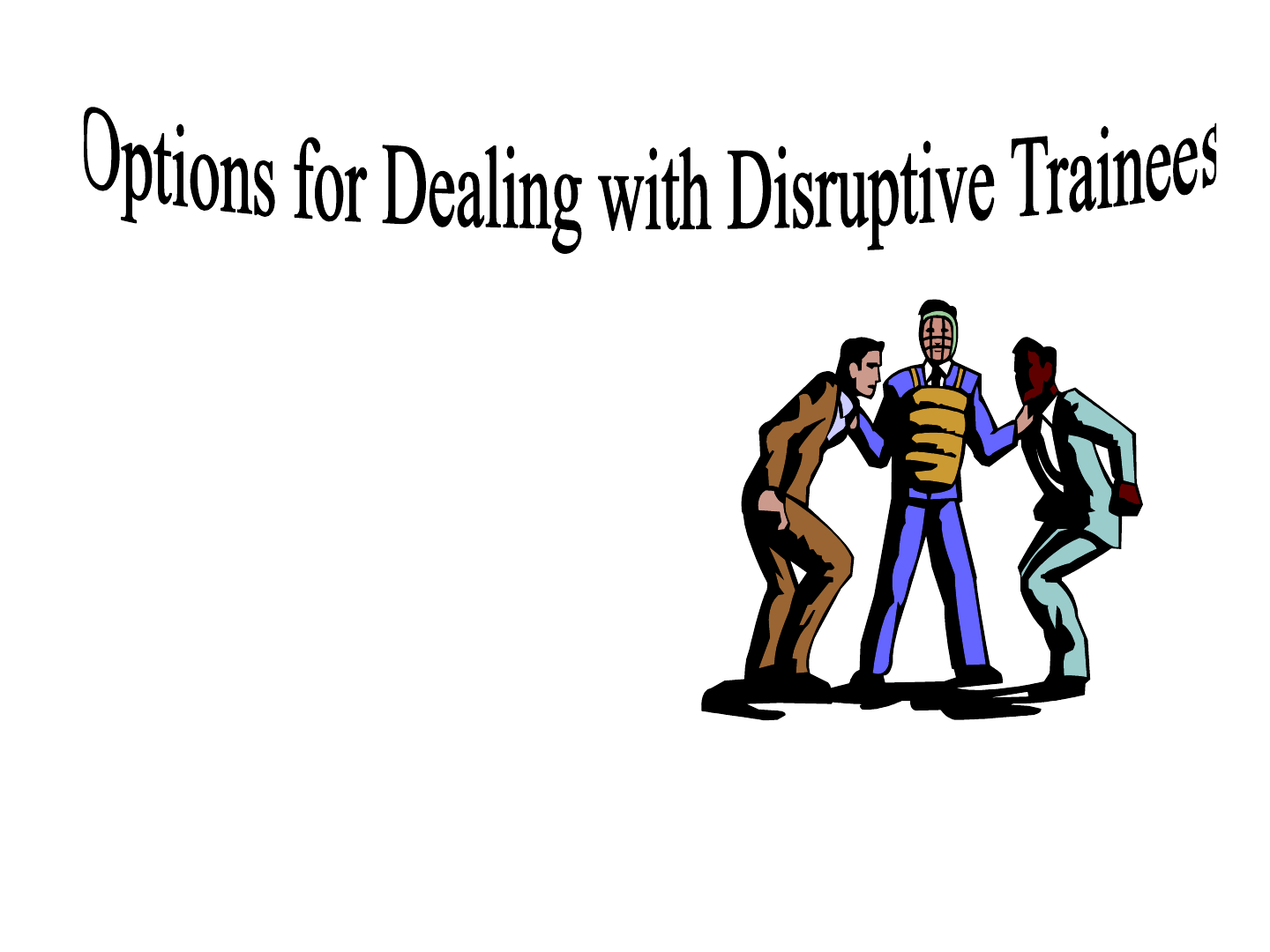
• Avoidance
• Acceptance
• Adaptation
• Standing Fast
• Pushing Back
Module 6 OH13

Participant Manual
6-1
NATIONAL INSTITUTE OF CORRECTIONS
NATIONAL INSTITUTE OF CORRECTIONS ACADEMY
FACILITATION SKILLS FOR TRAINERS
Module 6 -Dealing with Conflicts in Groups: Part 1
Given the material in this seminar, participants will:
• use a continuum of strategies for dealing with disruptive
participants to respond to case study situations.

Participant Manual
6-2
Mental Checklist
When a participant says something that raises issues, anxiety, conflict in
a training group, ask yourself . . .
Do I understand? Do I need
to understand?
Can I defer this to a specific time in the training or to an individual
conversation? Can I structure time to deal with this issue and the
person?
How might the group react to a response, or to no
response? What
would the impact on their learning be?
How am I feeling about addressing this issue? What impact will that
have on the group’s learning?

Participant Manual
6-4
4 Situations of Disruptive Behavior
Situation 1:
You are leading a group discussion on ways to communicate better in the
work place. As you are speaking you notice that one of your participants is
reading a magazine.
Situation 2:
You are conducting a class on Communicable Disease, a class required of all
employees. At the first break one participant approaches you and tells you
that he needs to leave at 1:45 p.m. to get to a 2:00 p.m. dentist appointment.
He says that he should be able to be back by around 3:00 p.m.
Situation 3:
You are presenting information on an agency policy (dress code, taking
leave, training - these are a few examples). One participant speaks up loudly
and says, “I don’t agree with that policy. Where I used to work we just had
to . . . (something that is different from the policy you are sharing during the
training).
Situation 4:
You are giving the class instructions for a group activity on communication
skills. One of the participants says loudly, “I can’t believe I’m even having
to attend this training. I’ve worked here 20 years and nobody has ever
listened to a thing I’ve had to say.”

5 CLASSIFICATIONS OF OPTIONS FOR DEALING WITH DISRUPTIVE TRAINEES
(based on Energy to Manage the Situation)
# OPTION ADVANTAGES DISADVANTAGES APPROPRIATE TRAINING
SITUATION
1 AVOIDANCE
(ignore behavior -
proceed with class)
1. Low energy needed
2. Takes advantage of peer pressure
3. Low risk to trainer
4. Allows for future options
5. Consistent with Adult Learning Theory
1. May lead to escalation of behavior
2. May encourage others
3. May result in total loss of control
4. May undercut trainers confidence and
self-esteem if behavior persists
1. Strong interest in class by
most trainees
2. When the behavior occurs near
the end of class
3. When the behavior is apathetic
or withdrawal
2 ACCEPTANCE
(find out reason for
disruption & adjust)
1. Low energy needed
2. Low risk to trainer
3. Defuses hostility
4. Increases trainee involvement
1. Can lead to behavior escalation
2. Tacitly encourages disruptive trainee
3. Others may copy disruption
4. May lose important training content
1. High trainee apathy
2. Hostile withdrawal
3. Apathetic/hostile diversion
supported by other trainees
3 ADAPTATION
(divert trainee resistance
to support training)
1. Encourages participation
2. Defuses and vents hostility
3. Maintains trainer control
4. Recognizes the concerns of participants
and still covers the material by integrating
them both into presentation
1. High expenditure of energy
2. Requires considerable trainer skill
3. Is manipulative and may be seen as
such by trainees
4. Slightly more risky in that it can
degenerate into an argument
1. High level of trainee knowledge
2. Strong support of disruptive
trainees by others in class
3. Hostile behavior or apathetic
behavior is focus of disruption
4. Trainer has wide base of
knowledge and conceptual
understanding of topic
4 STANDING FAST
(continue with the planned
program despite trainee
discontent and unrest)
1. Maintains trainer control
2. Maintains program and content integrity
3. Simple to do
1. Requires high amount of energy
2. Highly abusive to trainee
3. Could lose total control
4. Could lose class respect for trainer
1. High need for program integrity
2. Trainee support for staying with
course material is generally high
3. Hostile diversion is the primary
style of the disruptive behavior
5 PUSHING BACK
(directly confronting and
addressing disruptive
behavior)
1. Option of last resort
2. Established trainer authority
3. Maintains trainer respect
1. May create martyrs among the
trainees and solidify their opposition
to trainer
2. May reduce respect for trainer
3. Creates conflict
4. Forces trainees to choose sides
5. No win situation (possibly)
1. Intimidation of class by trainee
2. High need for trainer respect
3. Disruptions on increase and
other options have not helped

Time Required:
Summary and Rationale:
Performance Objectives:
Equipment:
Module 7
Series: GROUP FACILITATION SKILLS
Curriculum: FACILITATION SKILLS FOR TRAINERS
Module: DEALING WITH CONFLICTS IN GROUPS: Part 2 & 3
1 Hour 15 Minutes (including preparation for Day 2 practice and
Day 1 closure)
The purpose of this module is to practice facilitation of planned or unplanned conflict in
training groups.
Participants will:
1. using the Stages of Group Development, identify reasons conflict may naturally
occur in a group.
2. identify reasons to create conflict in a learning group and strategies for helping
groups work through conflict. (OPTIONAL)
• Overhead projector
• Easel stand with flip chart pad

Materials:
Handouts:
Overheads:
Participant Manual:
• Participant Manual
4 sets of Assignments 1-6
OH #14, Stages of Group Development
OH #15, Jigsaw
7-1 Performance Objectives
7-2 Stages of Group Development and Range of the Facilitator Behavior
7-3 Utilizing Facilitation Strategies: Reflection Guide
7-4 Day 1 Review/Feedback Form

National Institute of Corrections Facilitation Skills for Trainers
(Rev. 5/99) Dealing with Conflicts in Groups: Part 2 & 3
7-1
ANTICIPATORY SET
Approx. 15 Minutes
7. Dealing With Conflicts in Groups:
Part 2 & 3
CONTENT REFERENCE
Lets take a closer look at
another kind of conflict.
Up and Off the Ground
activity: Take the group to an open
space where everyone can stand in a
large circle. Place mats/or 15" x
15"pieces of cardboard on the floor (one
for every two people in the group).
Scatter them around the center area.
15" X 15" mats or pieces of cardboard
You work in an organization where
there are limited resources. You and
the mats represent the only
resources you can rely on to do the
job. Everyone must be up and off the
ground for a count of three. Standing
on a mat is being up and off the
ground. The group must solve the
problem together. If anyone has done
this activity before please participate
as a follower.
After the first round, congratulate them
and then tell them that the governor just
called and there are cutbacks. (Trainer
pick up three mats.) You have the same
amount of people to get up and off the
ground. (Repeat the instructions if
needed)

National Institute of Corrections Facilitation Skills for Trainers
(Rev. 5/99) Dealing with Conflicts in Groups: Part 2 & 3
7-2
INPUT
Approx. 20 Minutes
After the second round, repeat the
above and remove four more mats. Give
them the same instructions. Allow the
group to solve the problem (everyone
can simply jump up in the air at the
count of three).
Bring the group back to the training
room and process.
Ask them: What happened? What
behaviors helped, what behaviors got
in the way? How did people
communicate? In what ways were
individuals included or excluded in
the decision-making? How are you
feeling about the experience? What
contributed to solving (or not)
solving the problem.
What kinds of conflict might you see
if you conducted this activity with a
work team that was experiencing
difficulty? What kinds of group
issues might arise? Why might you
choose to conduct such an activity
with a work team?
DEALING WITH CONFLICTS IN GROUPS: PART 2
In the last module, we looked at
problem behaviors of individuals.
The second type of conflict is related
to the nature of the training topic or
the dynamics in an organization. We
have addressed techniques in our
previous section on predicting and
accommodating learner behaviors. In
addition we know that group conflict
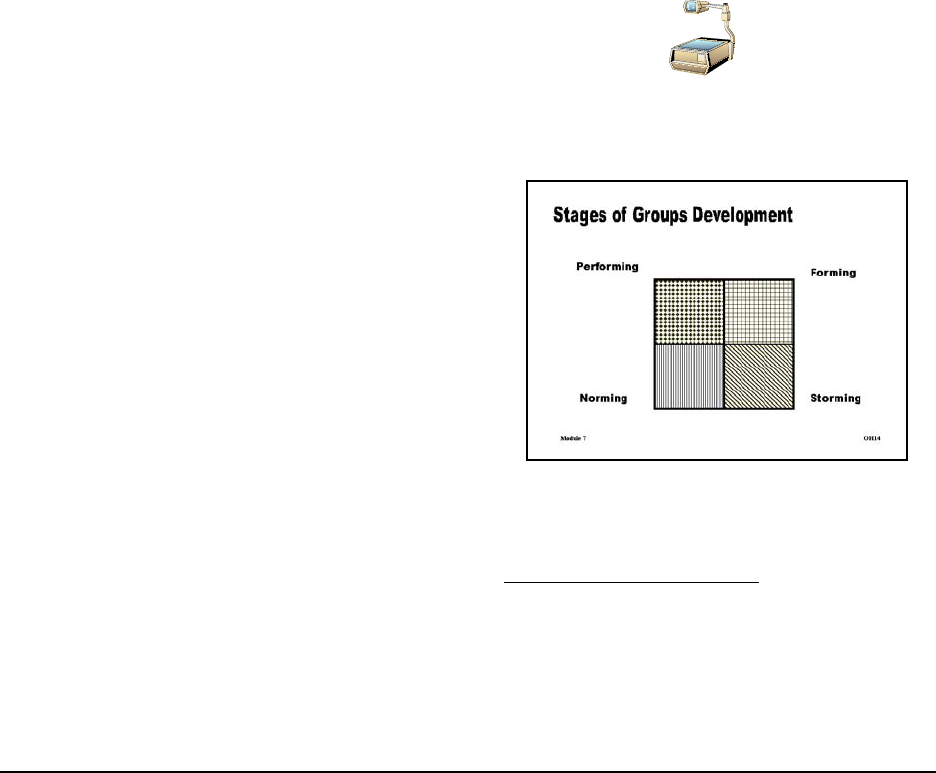
National Institute of Corrections Facilitation Skills for Trainers
(Rev. 5/99) Dealing with Conflicts in Groups: Part 2 & 3
7-3
can be related to stages of group
development and we have provided
you with information on the role of
the facilitator as it corresponds with
the each stage of group
development. There may be times
when you will decide to adjust or
change your design in response to
group feedback or needs. When
might you do this?
Reminder about trainer “contract” to
keep to time.
Display overhead transparency #14,
Stages of Group Development.
Refer them to Stages of Group
Development & Range of the
Facilitator Behavior (Manual page 7-
2).
Participant manual p. 7-2
The third type of conflict you will
need to address is the conflict that
arises from experiences you create
for learning. What kinds of
experiences might a trainer
Responses may include
: activities that
invite group conflict in problem-solving,
activities that put controversial topics on
the floor for debate)

National Institute of Corrections Facilitation Skills for Trainers
(Rev. 5/99) Dealing with Conflicts in Groups: Part 2 & 3
7-4
introduce/utilize that would lead to
conflict used for learning?
Why use experiences that create
conflict in the classroom setting?
Responses may include: to develop self
awareness for individuals about how
they deal with pressure, differences,
conflict and to learn about how groups
deal with conflict).
How have you used (or can you use)
conflict to facilitate learning?
Note: Put these responses on
newsprint.
What do you need to consider when
choosing this strategy?
Responses may include: Group
readiness, connection to learning
objectives, amount of time to process
as well as amount of time to build the
group back up, how removed or “close
to home” the simulated situation should
be, the element of surprise - how much
information do you give the group about
the activity and its meaning before
conducting it or giving away the
punchline of a joke.
There are also times when
unplanned conflict arises and can be
used for learning. What kinds? Why
use it? How can you use it?
How does the trainer’s comfort with
conflict impact using these
strategies?
Responses may include: trainer won’t
process the experience in a way that
surfaces conflict, trainer may give the
group hints for problem solving to avoid
conflict.
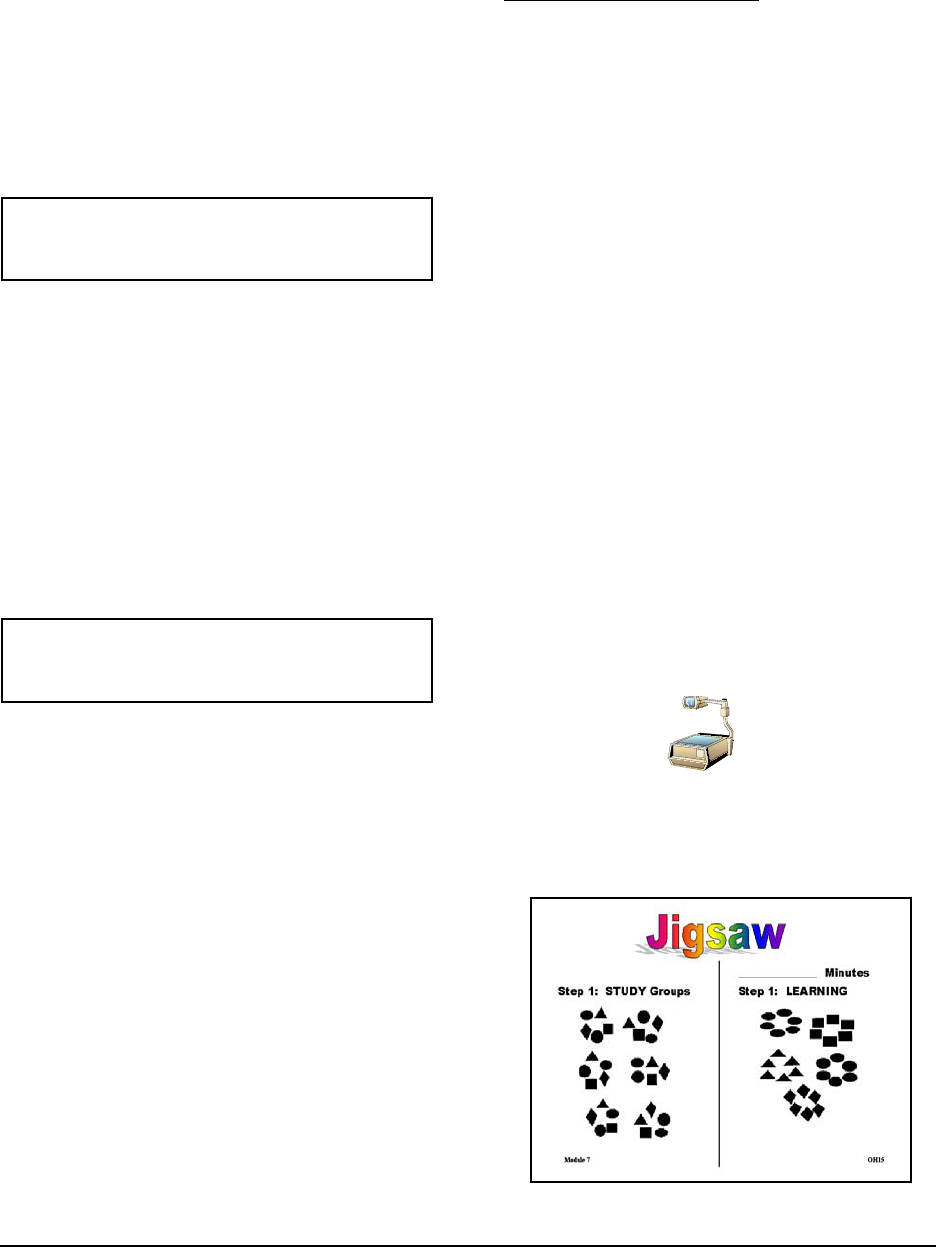
National Institute of Corrections Facilitation Skills for Trainers
(Rev. 5/99) Dealing with Conflicts in Groups: Part 2 & 3
7-5
CLOSURE
Approx. 10 Minutes
ASSIGNMENTS FOR DAY TWO
Approx. 15 minutes
How does this impact learning?
How can the trainer become more
adept at dealing with conflict?
Responses may include: Knowing what
to expect from an activity, learning how
to use process questions for self
awareness, setting clear boundaries for
taking responsibility for other people’s
reactions and feelings, maintaining a
safe environment for learning.
Therefore, conflict can be viewed as
more than a disruption or an
occurrence to be prevented it can be
used to facilitate learning about
participants, other individuals,
groups and organizations.
Have them take notes on the Utilizing
Facilitation Strategies (general and
conflict-related): Reflection Guide.
Participant Manual p. 7-3
Display overhead transparency #15,
Jigsaw.

National Institute of Corrections Facilitation Skills for Trainers
(Rev. 5/99) Dealing with Conflicts in Groups: Part 2 & 3
7-6
They need to develop questions to take
their group through the processing
steps.
Write goals on small group charts
You have received an outline of the
activity you will be conducting with
your team of three. We will provide
you with all of the materials required
for your activity. You have 30
minutes to prepare with your trio
tomorrow morning. You will be given
30 minutes to conduct your activity
and process the activity with the
whole group. We expect that you
divide that time in half, or that the
activity take less than 15 minutes
and the process longer. This is your
opportunity to practice facilitation
skills. We will take 15 minutes to
provide feedback after each
presentation. The trainers will also
be giving you written feedback using
the assessment format at the end of
the day.
Hand out Assignments 1-6
Note: Post schedule on newsprint
At the conclusion of your preparation
we will begin the presentations as
outlined in your agenda - three
presentations in the morning and three
in the afternoon.
Note: Post names by group and space
for personal goals.
Allow time for questions.
Note: (Assemble in Day Two groups).
Have participants fill in their goal
behaviors on newsprint chart so

National Institute of Corrections Facilitation Skills for Trainers
(Rev. 5/99) Dealing with Conflicts in Groups: Part 2 & 3
7-7
EVALUATION & REPORT OUT
Approx. 15 Minutes
facilitators can observe for and give
feedback on those behaviors.
Have participants fill out Day One
Review.
Participant Manual p. 7-4
Have table groups discuss and
representatives meet with trainers.

Module 7
Dealing with Conflict in Groups: Part 2 & 3
Training Supplements:
• Overhead Transparencies
OH#14 Stages of Group Development
OH#15 Jigsaw
• Participant Manual
7-1 Performance Objectives
7-2 Stages of Group Development and Range of the
Facilitator Behavior
7-3 Utilizing Facilitation Strategies: Reflection
Guide
7-4 Day 1 Review/Feedback Form
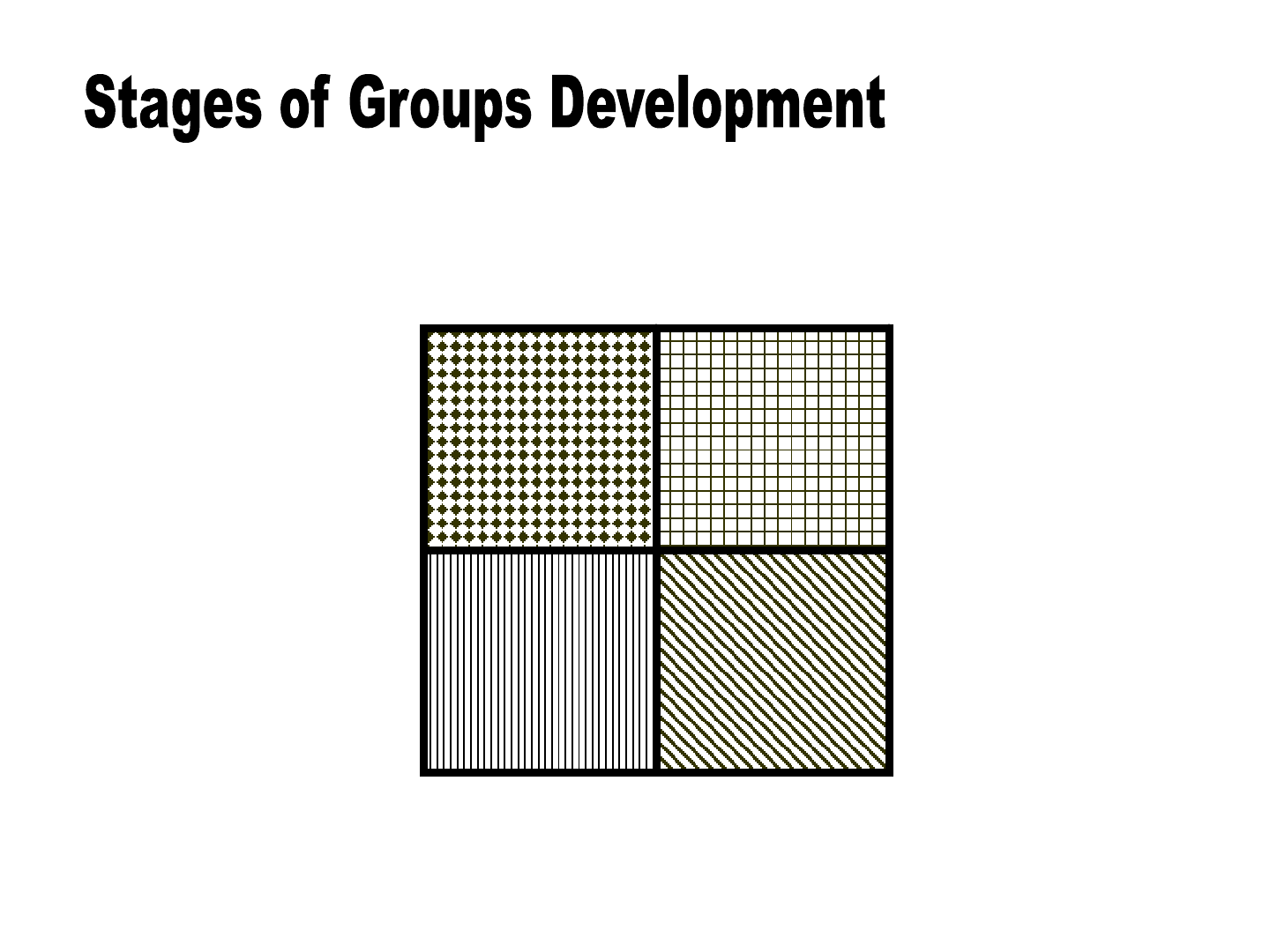
Performing
Forming
Norming Storming
Module 7 OH14
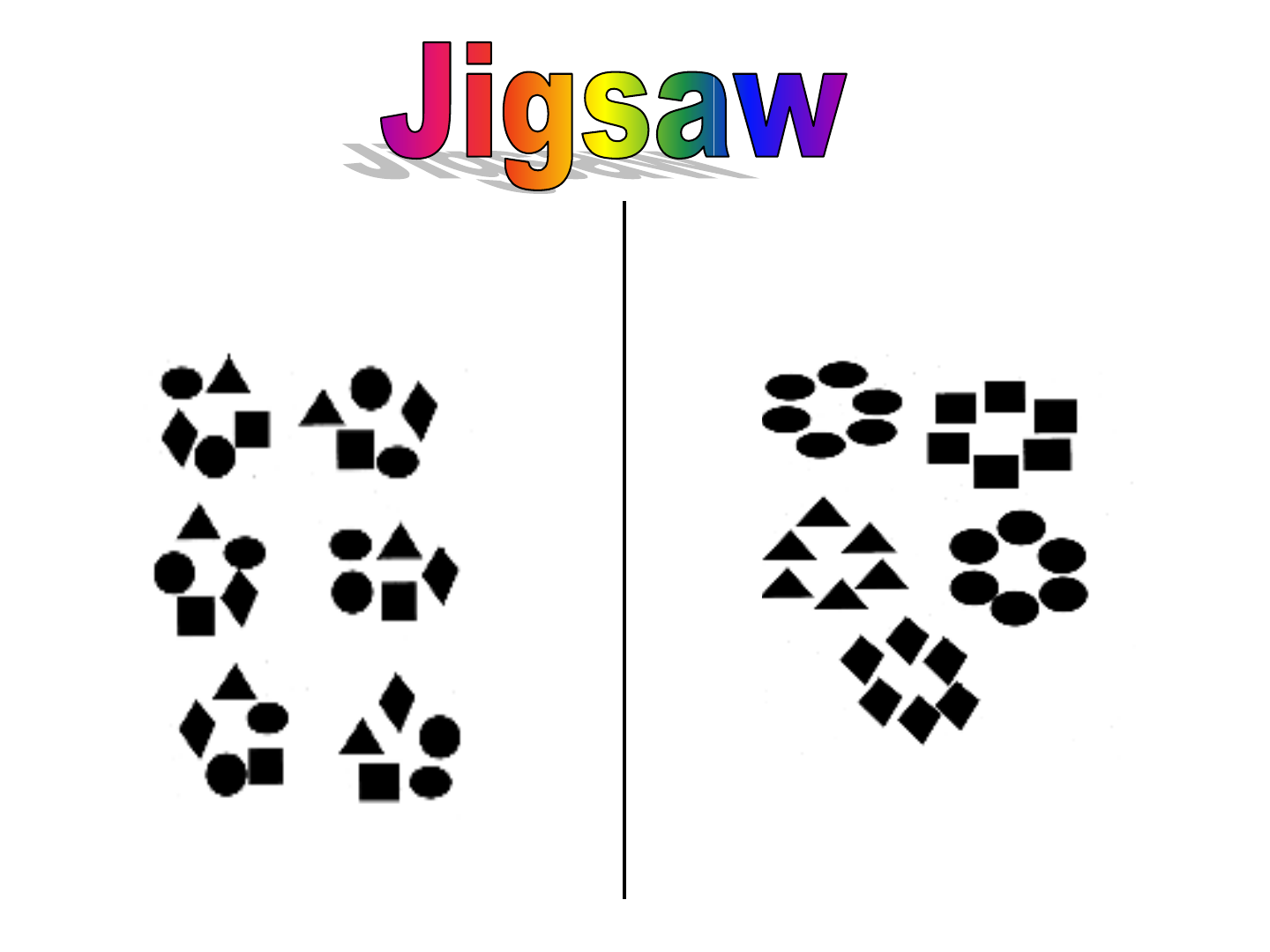
Step 1: STUDY Groups
_______________ Minutes
Module 7 OH15
Step 1: LEARNING

Participant Manual 7-1
NATIONAL INSTITUTE OF CORRECTIONS
NATIONAL INSTITUTE OF CORRECTIONS ACADEMY
FACILITATION SKILLS FOR TRAINERS
Module 7 -Dealing with Conflicts in Groups: Part 2 & 3
Given the material in this seminar, participants will:
• using the Stages of Group Development, identify reasons
conflict may naturally occur in a group.
• identify reasons to create conflict in a learning group and
strategies for helping groups work through conflict.
(OPTIONAL)
Stages of Group Development & Range of the Facilitator
Behavior
STAGES OF GROUP ROLE OF FACILITATOR
DEVELOPMENT
Developing a
positive working
environment
Dealing with issues
of power & control
Managing conflict
establishing ground
rules
Functioning as an
effective group
Terminating the
group’s work
INCLUSION / FORMING
• becoming oriented
• developing commitment
• needing direction
• wanting to be accepted
STORMING
• consolidating influence
• confronting dependency on the
leader
• conflict among group members
• low level of work
NORMING
• resolving control concerns
• establishing group agreement
AFFECTION / PERFORMING
• working productively towards
shared goals
• problem-solving & decision making
• open communication, trust
• dealing with conflict
ADJOURNING
• creates apprehension
• regression in maturity level
• need help to say “good-bye”
DIRECTING
• climate setting
• clarifying roles, expectations
• defining goals & providing
structure
• group-building
COACHING
• surfacing issues, legitimizing
concerns
• facilitating communication
• managing conflict
• inviting input and feedback
• expecting and accepting
tension
SUPPORTING
• offering own ideas, resources
• sharing the leadership role
• being available for
consultation
• smoothing the boundary
between the group and the
organization
DELEGATING
• supporting, letting go
• helping group deal with
termination

Participant Manual 7-3
Utilizing Facilitation Strategies
(general and conflict-related)
:
Reflection Guide
What understanding did you come to relative to yourself or facilitation skills for
trainers?
What implications does this have for your facilitation practices?
How will you use these strategies?
Other comments.

Participant Manual 7-4
Day One Review
What helped facilitate your learning?
What would you change or add to enhance your learning?
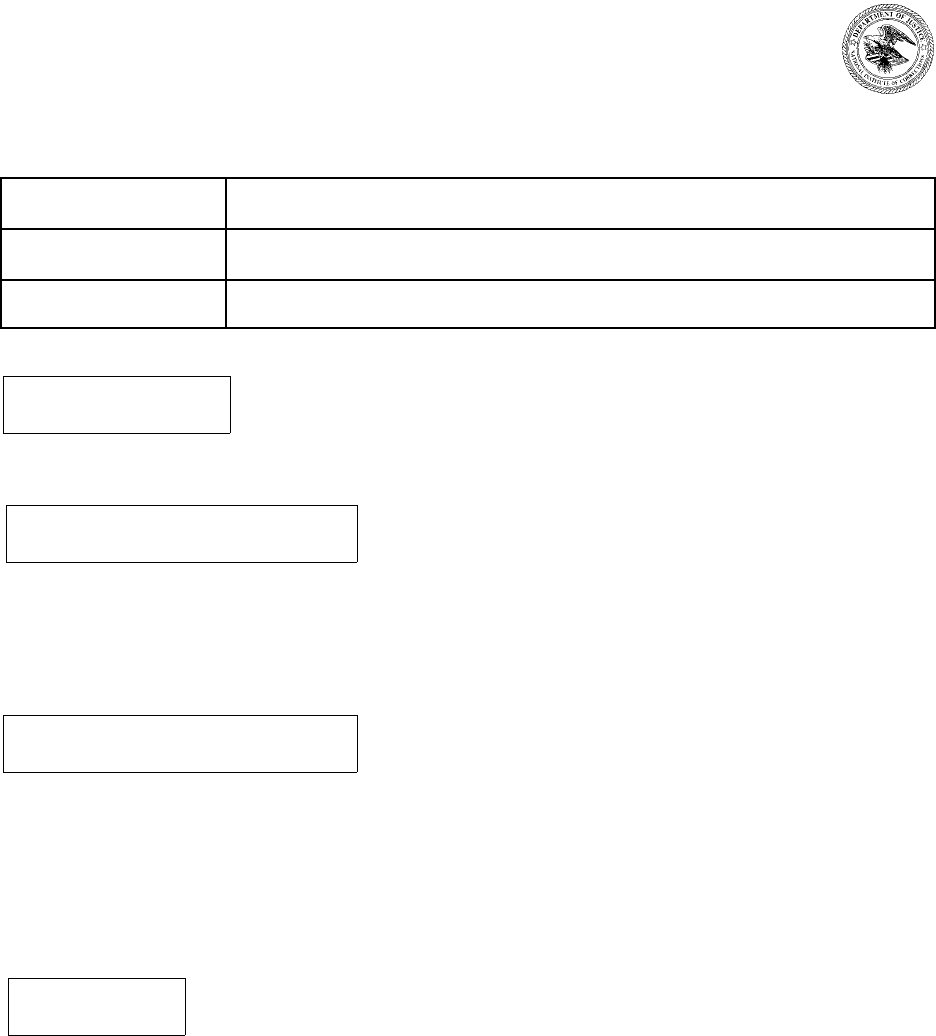
Time Required:
Summary and Rationale:
Performance Objectives:
Equipment:
Module 8
Series: GROUP FACILITATION SKILLS
Curriculum: FACILITATION SKILLS FOR TRAINERS
Module: PRESENTATIONS
8 Hours (4 hour a.m. session and 4 hour p.m. session)
The purpose of this module is to have participants practice facilitation participatory
activities using skills covered on Day 1.
Participants will:
1. practice facilitation skills by presenting brief learning activities.
• Easel Stand with Flip Chart Pad
• VCR and Monitor

Materials:
Handouts:
Participant Manual:
• Participant Manual
• Mr. Hollands’ Opus
•Markers
• Masking Tape
• Course Completion Certificates
24 sets of Assignment 1-6
8-1 Performance Objectives
8-2 Communication Skills - A.M. Presentations
8-3 Group Process - P.M. Presentations
8-4 Practice and Personal Development Plan
8-5 Transfer of Learning

National Institute of Corrections Facilitation Skills for Trainers
(Rev. 5/99) Presentations
8-1
PREVIEW
Approx. 10 Minutes
ANTICIPATORY SET
Approx. 10 Minutes
INPUT
Approx. 10 Minutes
GUIDED PRACTICE
Approx. 30 Minutes
8. Presentations
CONTENT REFERENCE
Yesterday’s feedback, etc.
Warm-up
Lead the group through a series of
stretches - arms-reaching up, reaching
forward, reaching back; waist- side to
side, bending gently forward and
backward, rolling neck from side to
forward and then to other side (not back).
Explain the importance of physical
relaxation and mental relaxation to being
completely present as a trainer. The
greater your balance and clarity, the more
you can be attentive to your group and
your goals.
Review instructions for presentations.

National Institute of Corrections Facilitation Skills for Trainers
(Rev. 5/99) Presentations
8-2
INDEPENDENT PRACTICE
Approx. 30 Minutes
Preparation time: have participants work
in Study Groups to develop presentations.
Presentations: Trio 1, 2, 3
150 minutes
9 am to 11 am
Divide into groups of 6 (or 7) with one
facilitator per group. Review posted
individual goals for clarity.
Before the first presentation tell them:
One of the trainers will be giving
you a sign when you have five
minutes left and will stop you
when 30 minutes is up. After your
presentation is complete, we will first
ask the presenters how well they did
and what they would change next time
- focusing on skills they identified for
development. We will then ask the
group to provide feedback and finally
one of the trainers will offer their
feedback.
Note: Each facilitator gets copies of
Observer Assessment for each group
member.
Follow the agenda for Day Two, keeping
time and moving the process forward.
After each presentation give the
presenters a round of applause both
before and after feedback.

National Institute of Corrections Facilitation Skills for Trainers
(Rev. 5/99) Presentations
8-3
CLOSURE
Approx. 30 Minutes
Reflective Writing
30 minutes
Refer participants to Communication
Skills in manual page 8-2.
Participant Manual p. 8-2
LUNCH 60 Minutes
Presentations: Trio 4, 5, 6
150 minutes
1 pm to 3:30 pm
Note: Each facilitator gets copies of
Observer Assessment for each group
member.
Follow the agenda for Day Two, keeping
time and moving the process forward.
After each presentation give the
presenters a round of applause both
before and after feedback.
Reflective Writing
15 minutes
Refer participants to Group Process in
their manuals, page 8-3.
Participant Manual p.8-3
Personal Development Planning
30 minutes
Turn to page 8-4 of your manual titled
Practice and Personal Development
Plan and write about your experience
presenting today (if you came in a
group you can plan in work groups).
Develop a specific plan for using your
learning and insight from your
presentation and the full two days of
Participant Manual p.8-4

National Institute of Corrections Facilitation Skills for Trainers
(Rev. 5/99) Presentations
8-4
EVALUATION
Approx. 75 Minutes
the workshop. In your plan of action be
sure to include a specific time and
place in which you will follow up. Take
the next 30 minutes to develop your
plan. During this time one of the
trainers will be meeting with you
briefly to discuss your experience and
plan.
Wrap Up 45 minutes
Direct the group to page 8-5 of their
manuals titled Transfer of Learning.
Participant Manual p. 8-5
As a way to both evaluate the training
and facilitate your learning we would
like you to complete the Transfer of
Learning page after your next training
experience. We ask that you mail a
copy of this page to Barbara Collins at
the address posted. Since this is a
pilot for this seminar, the trainers may
be calling you in two to three months
to check on how well this training
contributed to enhancing your
facilitation skills.
Show 3 minutes of the last segment of
the film “Mr. Holland’s Opus”.
VCR and monitor
Mr. Holland’s Opus Video
Conduct a round robin wrap up. Ask the
group to stand in a circle and say two
words that describe how they are feeling.
Thank them for their hard work and risk
taking during the two days.
Have the group take their seats and fill
out the National Institute of Corrections
evaluation forms (back pocket of
binder).
Participant Manual, back pocket of binder.

National Institute of Corrections Facilitation Skills for Trainers
(Rev. 5/99) Presentations
8-5
Hand out certificates. NIC Course Completion Certificates

Module 8
Presentations
Training Supplements:
• Participant Manual
8-1 Performance Objectives
8-2 Communication Skills - A.M. Presentations
8-3 Group Process - P.M. Presentations
8-4 Practice and Personal Development Plan
8-5 Transfer of Learning

Participant Manual
8-1
NATIONAL INSTITUTE OF CORRECTIONS
NATIONAL INSTITUTE OF CORRECTIONS ACADEMY
FACILITATION SKILLS FOR TRAINERS
Module 8 -Presentations
Given the material in this seminar, participants will:
• practice facilitation skills by presenting brief learning
activities.

Participation Manual
8-2
Communication Skills
A.M. Presentations
What insights did you get about your facilitation skills?
What implications does this have for your facilitation practices?
How will you use these concepts and skills?
Other comments.

Participation Manual
8-3
Group Process
P.M. Presentations
What insights did you get about your facilitation skills?
What implications does this have for your facilitation practices?
How will you use these concepts and skills?
Other comments.

Participation Manual
8-4
Practice and Personal Development Plan
Describe your thoughts and feelings as you made your presentation. Note the
specific behaviors you practiced from your goals.
What insights did you get about your facilitation skills? What would you do
again, change or modify?
What implications does this have for your facilitation practices?
How will you use this information in the future? (be specific, make a plan)
Other comments.

Participation Manual
8-5
Transfer of Learning
(to be completed after your next training experience)
How did you follow-up with your personal development plan?
Describe your thoughts and feelings as you presented.
What insights did you get about your facilitation skills?
What are your next steps in building your skills? (be specific, make a plan)
Other comments.
